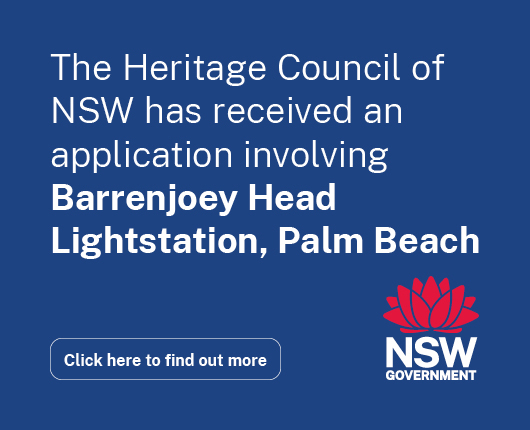Inbox and Environment News: Issue 616
March 3 - 9, 2024: Issue 616
Increase Tree Vandalism Penalties: NSW Parliamentary Petition
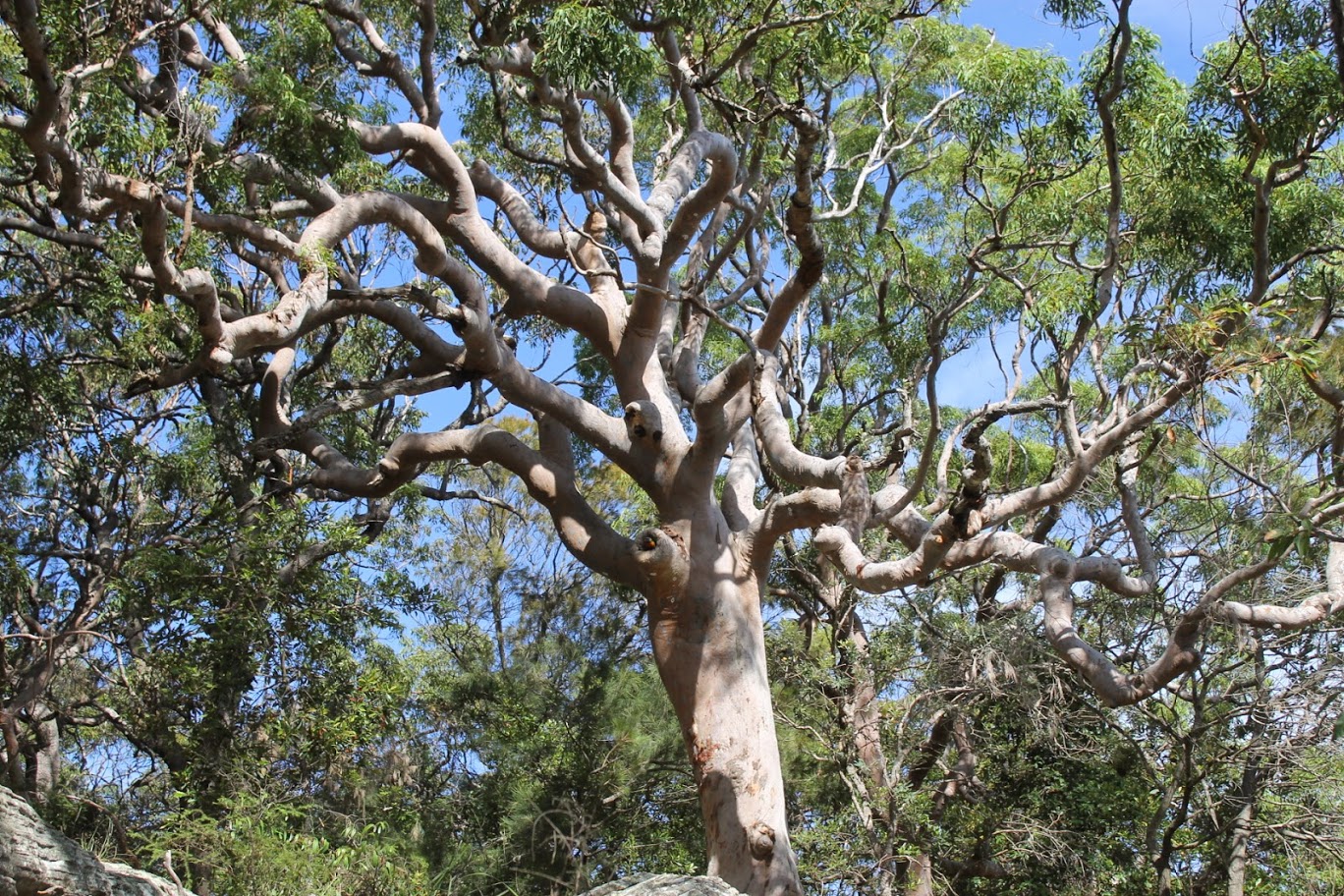
.jpg?timestamp=1708790130470)
Lone Dollarbird - A Sign Of Autumn
.jpg?timestamp=1709266424435)
Avalon Beach Cockatoos
Adoption Of The Ku-Ring-Gai Chase National Park, Lion Island Nature Reserve, Long Island Nature Reserve And Spectacle Island Nature Reserve Plan Of Management
Protecting The Spirit Of Sea Country Bill 2023: Senate Inquiry
Harvest Seeds & Native Plants: Education Sessions 2024 - "The Harvest Huddle"
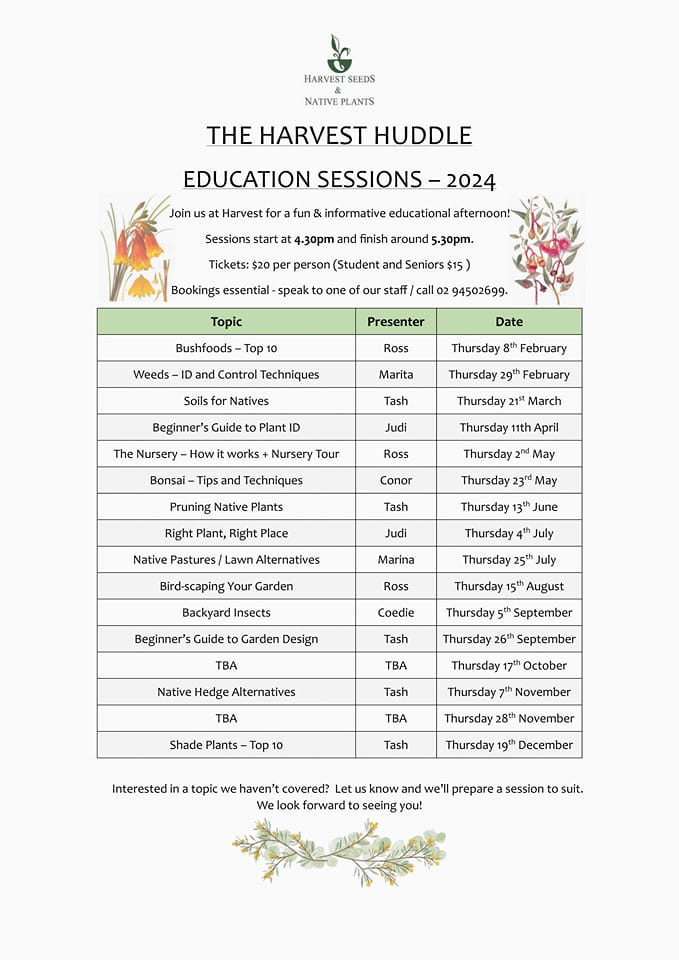
Notice Of 1080 Baiting: February 1 - July 31 2024
Please note the following notification of continuous and ongoing fox control using 1080 POISON with ground baits and canid pest ejectors (CPE’s) in Sydney Harbour National Park, Garigal National Park, Ku-ring-gai Chase National Park, and Lane Cove National Park. As part of this program, baiting also occurs on North Head Sanctuary managed by Sydney Harbour Federation Trust and the Australian Institute of Police Management facility at North Head.
This provides notification for the 6 monthly period of 1 February 2024 – 31 July 2024.
Warning signs are displayed at park entrances and other entrances to the baiting location to inform the public of 1080 baiting.
1080 Poison for fox control is used in these reserves in a continuous and ongoing manner. This means that baits and ejectors (CPE’s) remain in the reserves and are checked/replaced every 6 – 8 weeks.
1080 use at these locations is in accordance with NSW pesticides legislation, relevant 1080 Pesticide Control Orders and the NPWS Vertebrate Pesticides Standard Operating Procedures.
A series of public notifications occur on a 6 monthly basis including; alerts on the NPWS website, public notices in local papers, Area pesticide use notification registers and to the NPWS call centre.
If you have any further general enquiries about 1080, or for specific program enquiries please contact the local NPWS Area office:
For further information please call the local NPWS office on:
NPWS Sydney North (Middle Head) Area office: 9960 6266
NPWS Sydney North (Forestville) Area office: 9451 3479
NPWS North West Sydney (Lane Cove NP) Area office: 8448 0400
NPWS after-hours Duty officer service: 1300 056 294
Sydney Harbour Federation Trust: 8969 2128
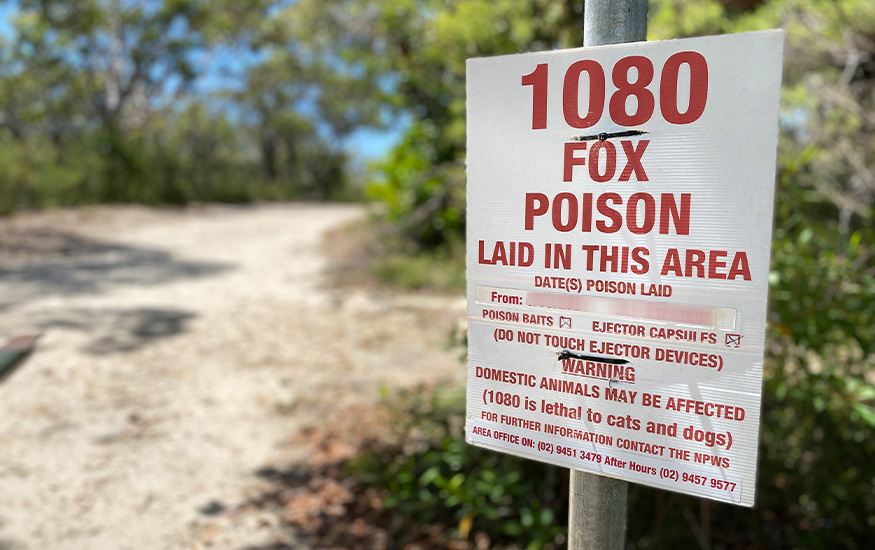
Pittwater Natural Heritage Association: Second PNHA Nature Event 2024
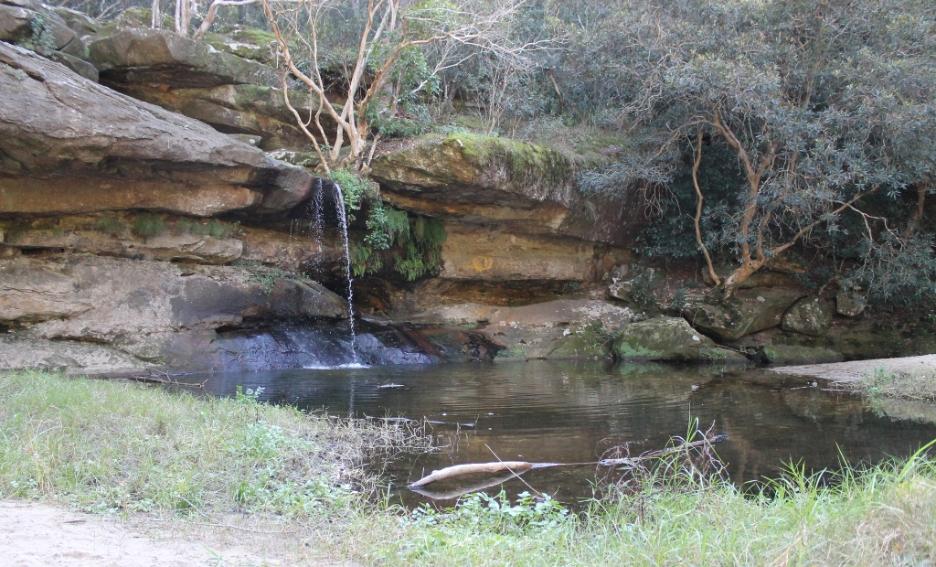
Clean Up Australia Day 2024 Registrations Are Now Open
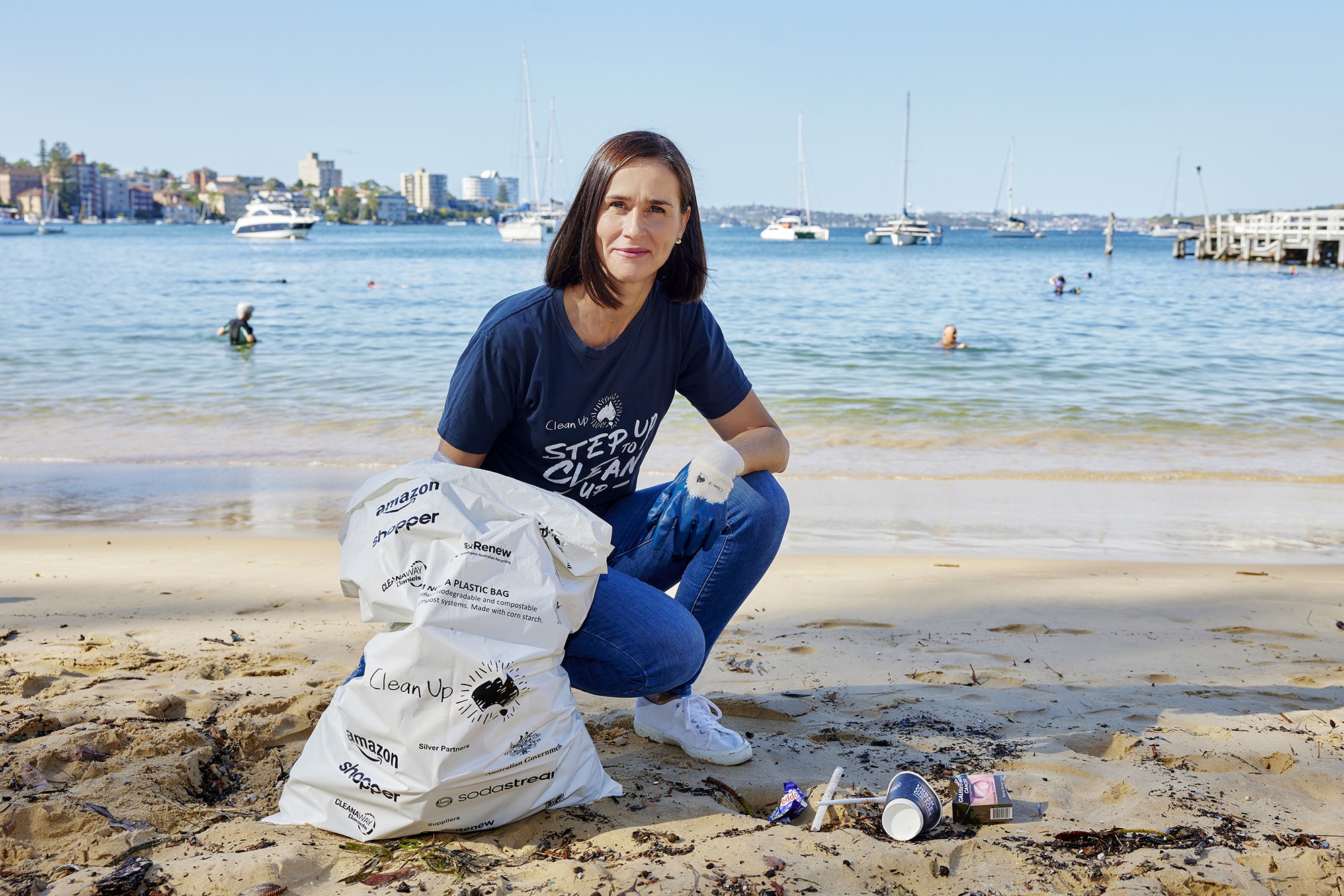
NEW At Eco House & Garden(At Kimbriki): 'Supporting School & Community Composts Workshop'
Where you can become part of the (waste) solution in our 3-hour workshop.
See below for more details and for bookings go to 👉https://www.trybooking.com/events/landing/1162545
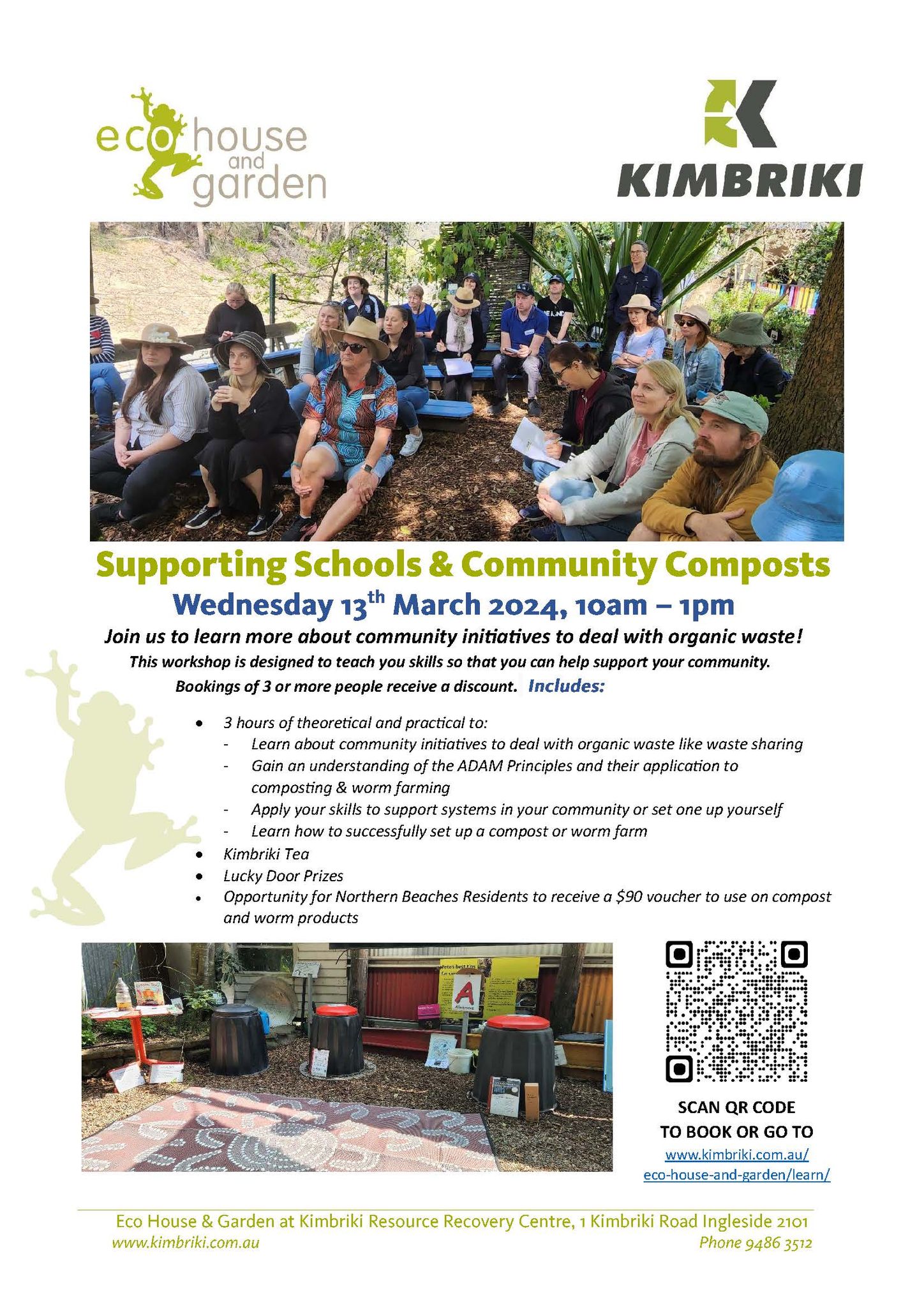
Kimbriki Resource Recovery Centre: Early Childhood Educators Professional Development Day
As part of Kimbriki's 2024 Eco House & Garden Educational Calendar, this year we introduce the Early Childhood Educators Professional Development Day on Friday 22nd March. For more details and bookings 👉 https://www.trybooking.com/events/landing/1162305
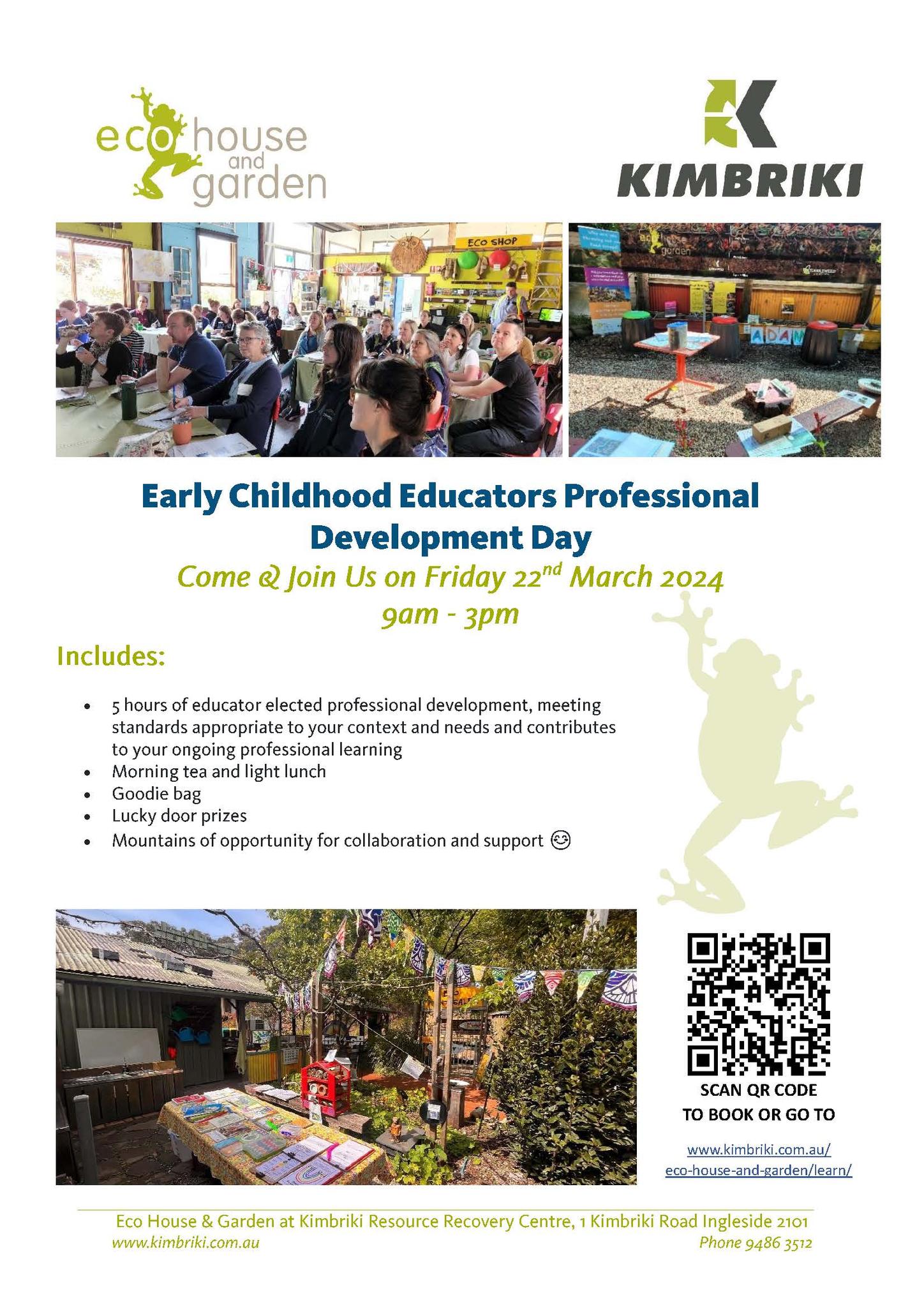
Upcoming Events At Permaculture Northern Beaches
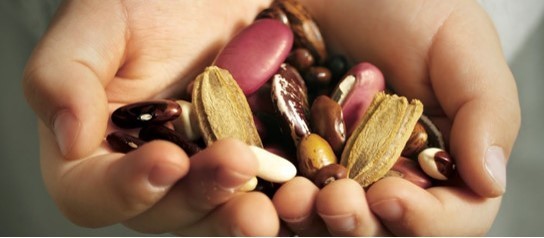 Saving Our Seeds is a crucial part of our own food chain and it enables us to grow our own food and plants with no additional costs! The strongest seeds are locally grown over many generations and well adapted to local conditions - so your plants will thrive while you save on costs. Join us with seed-saving guest speakers Mylene Turban, and Elle Sheather to have an overview and to inspire you to get seed-saving!
Saving Our Seeds is a crucial part of our own food chain and it enables us to grow our own food and plants with no additional costs! The strongest seeds are locally grown over many generations and well adapted to local conditions - so your plants will thrive while you save on costs. Join us with seed-saving guest speakers Mylene Turban, and Elle Sheather to have an overview and to inspire you to get seed-saving!About

Stony Range Nursery
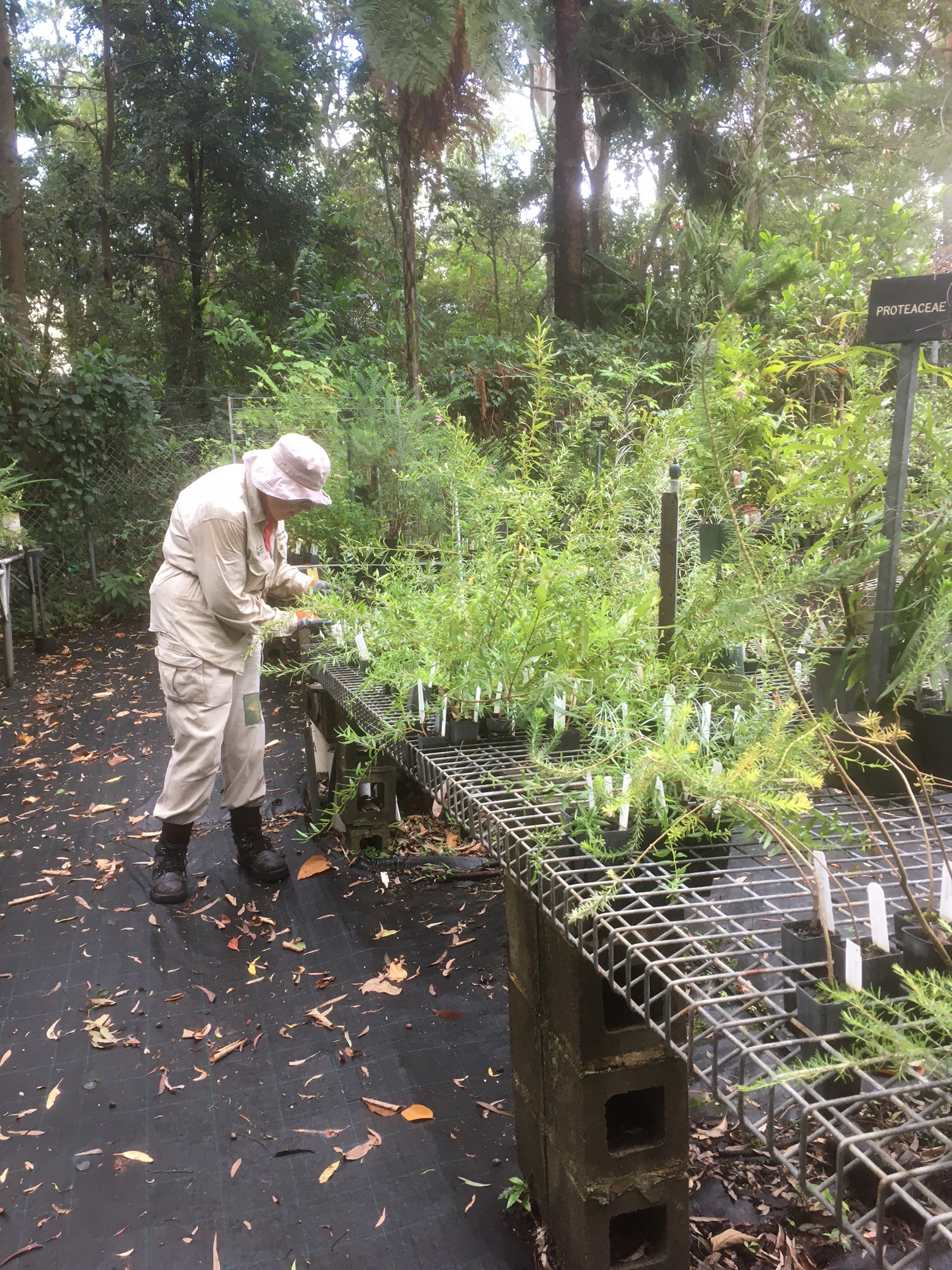
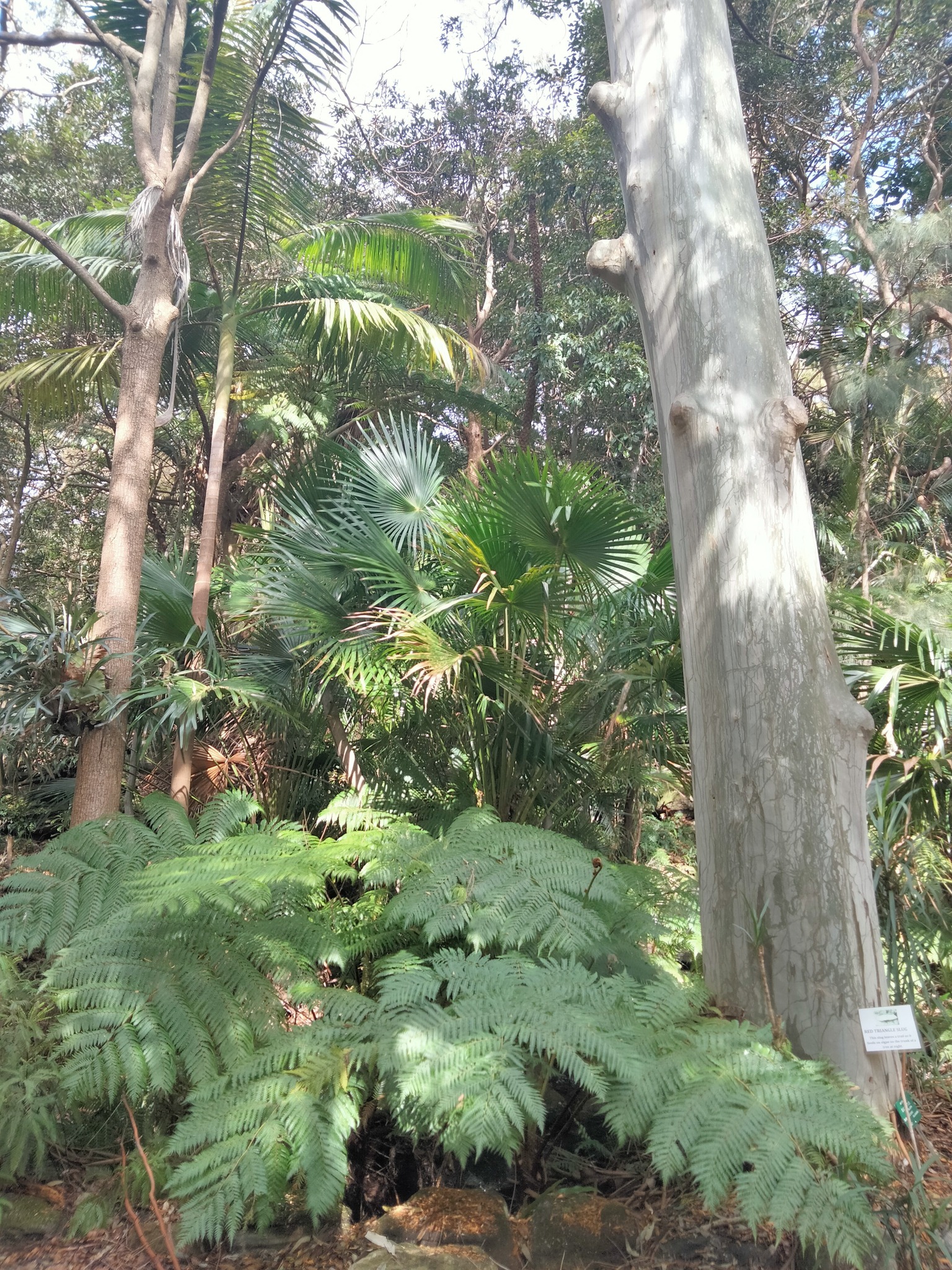
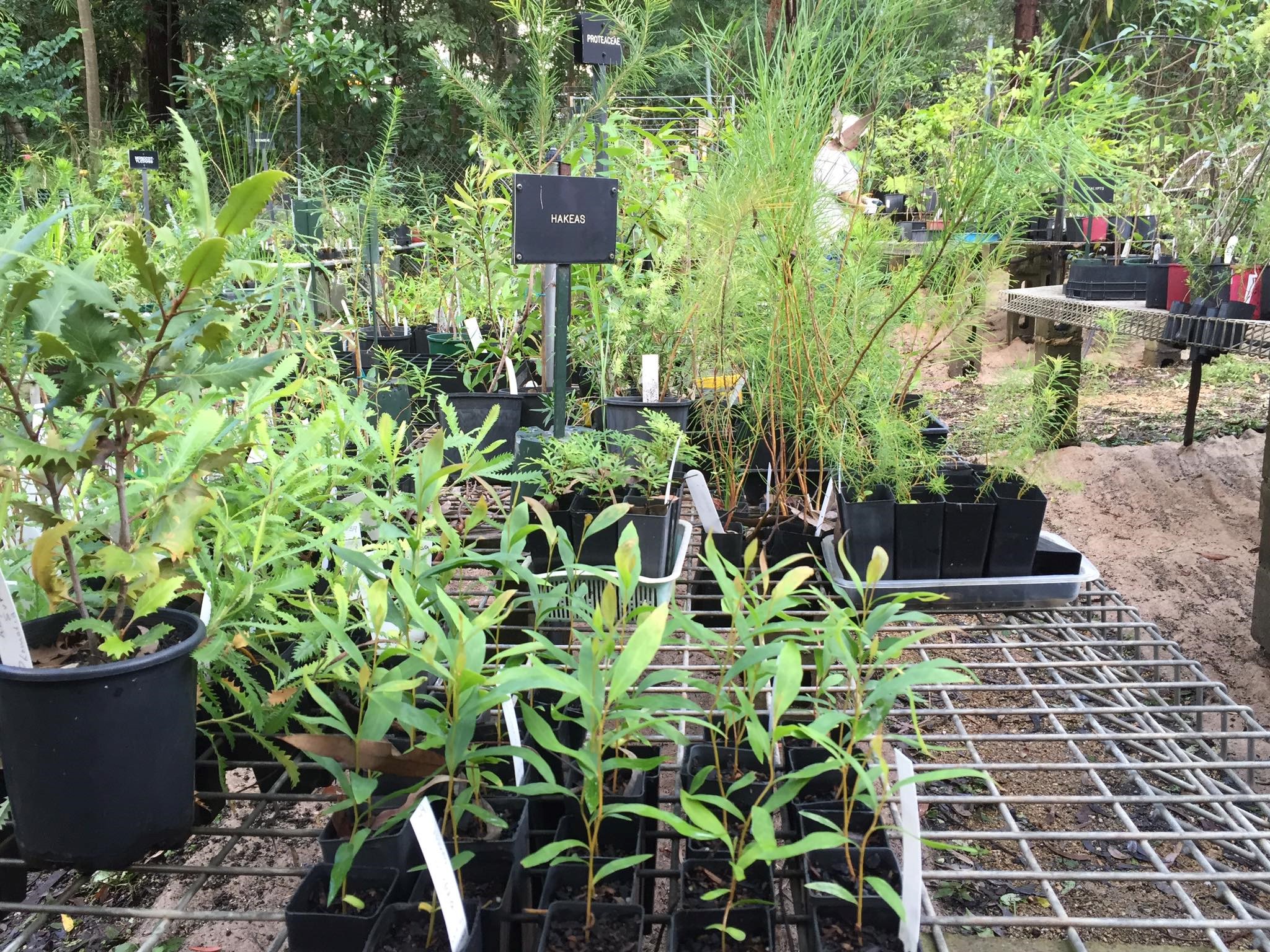
Stay Safe From Mosquitoes
- Applying repellent to exposed skin. Use repellents that contain DEET, picaridin, or oil of lemon eucalyptus. Check the label for reapplication times.
- Re-applying repellent regularly, particularly after swimming. Be sure to apply sunscreen first and then apply repellent.
- Wearing light, loose-fitting long-sleeve shirts, long pants and covered footwear and socks.
- Avoiding going outdoors during peak mosquito times, especially at dawn and dusk.
- Using insecticide sprays, vapour dispensing units and mosquito coils to repel mosquitoes (mosquito coils should only be used outdoors in well-ventilated areas)
- Covering windows and doors with insect screens and checking there are no gaps.
- Removing items that may collect water such as old tyres and empty pots from around your home to reduce the places where mosquitoes can breed.
- Using repellents that are safe for children. Most skin repellents are safe for use on children aged three months and older. Always check the label for instructions. Protecting infants aged less than three months by using an infant carrier draped with mosquito netting, secured along the edges.
- While camping, use a tent that has fly screens to prevent mosquitoes entering or sleep under a mosquito net.
Mountain Bike Incidents On Public Land: Survey
- Mountain Bike Incidents On Public Land: Survey Launched To Gather Data On What's Happening To Public Parks - Community Land - Bush Reserves In Pittwater
- Mother Brushtail Killed On Barrenjoey Road: Baby Cried All Night - Powerful Owl Struck At Same Time At Careel Bay During Owlet Fledgling Season: calls for mitigation measures - The List of 'What You can Do' as requested
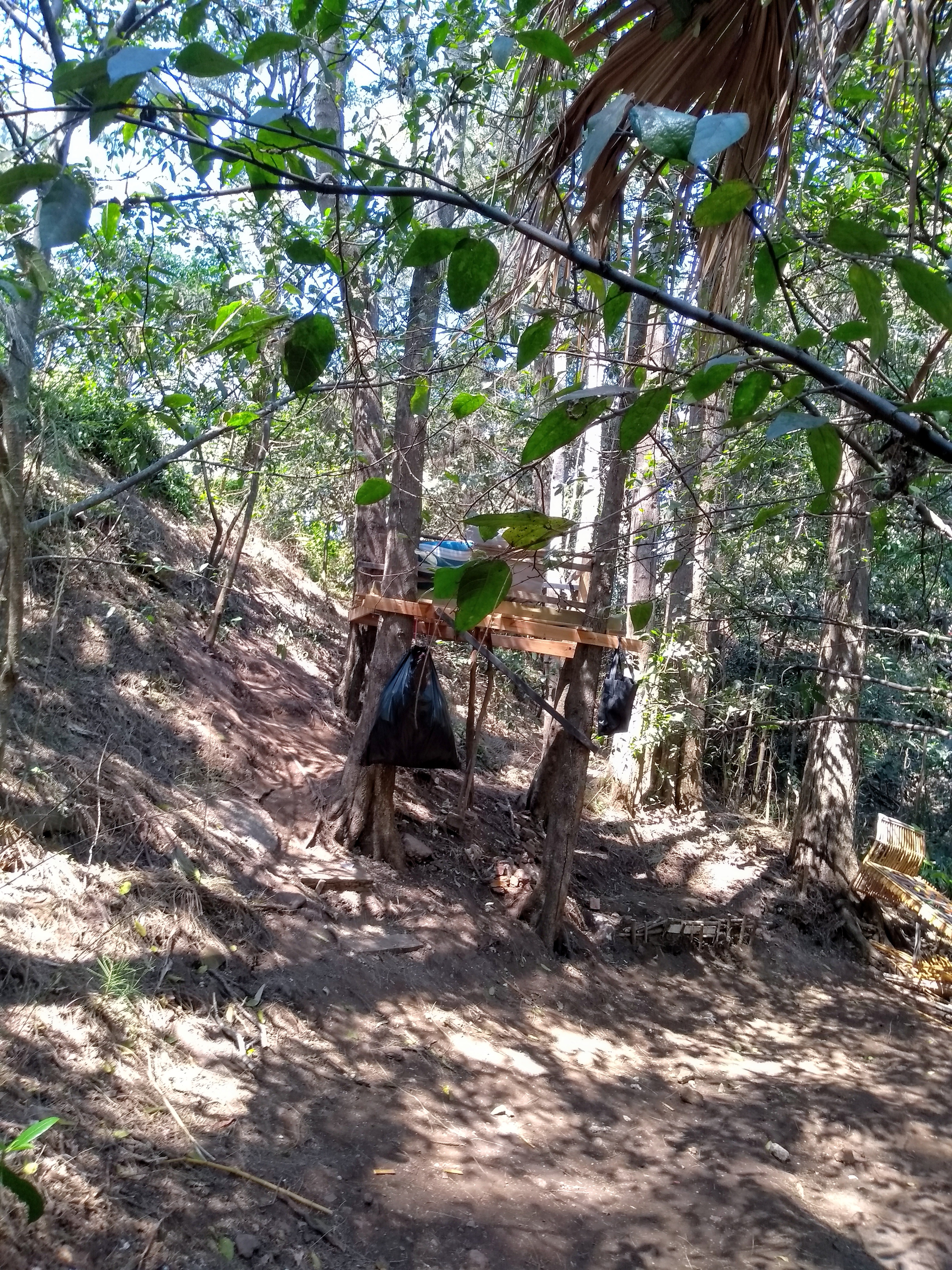
Please Look Out For Wildlife During Heatwave Events

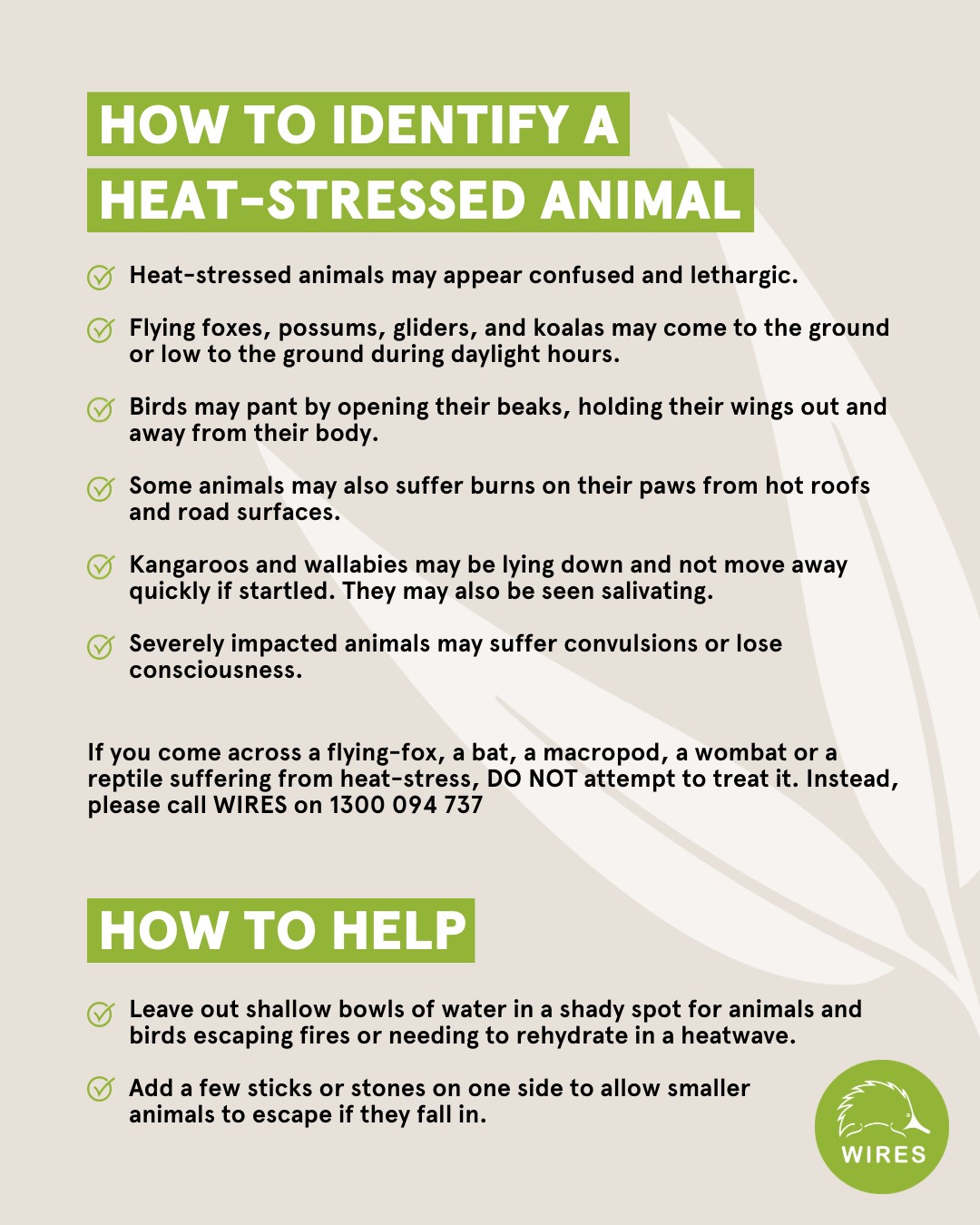
Palmgrove Park Avalon: New Bushcare Group
 Palmgrove Park Avalon is a remnant of the Spotted Gum forest that was once widespread on the lower slopes of the Pittwater peninsula. This bushland’s official name and forest type is Pittwater and Wagstaffe Endangered Ecological Community, endangered because so much has been cleared for suburban development. Canopy trees, smaller trees and shrubs, and ground layer plants make up this community. Though scattered remnant Spotted Gums remain on private land, there is little chance of seedlings surviving in gardens and lawns. More information HERE
Palmgrove Park Avalon is a remnant of the Spotted Gum forest that was once widespread on the lower slopes of the Pittwater peninsula. This bushland’s official name and forest type is Pittwater and Wagstaffe Endangered Ecological Community, endangered because so much has been cleared for suburban development. Canopy trees, smaller trees and shrubs, and ground layer plants make up this community. Though scattered remnant Spotted Gums remain on private land, there is little chance of seedlings surviving in gardens and lawns. More information HERE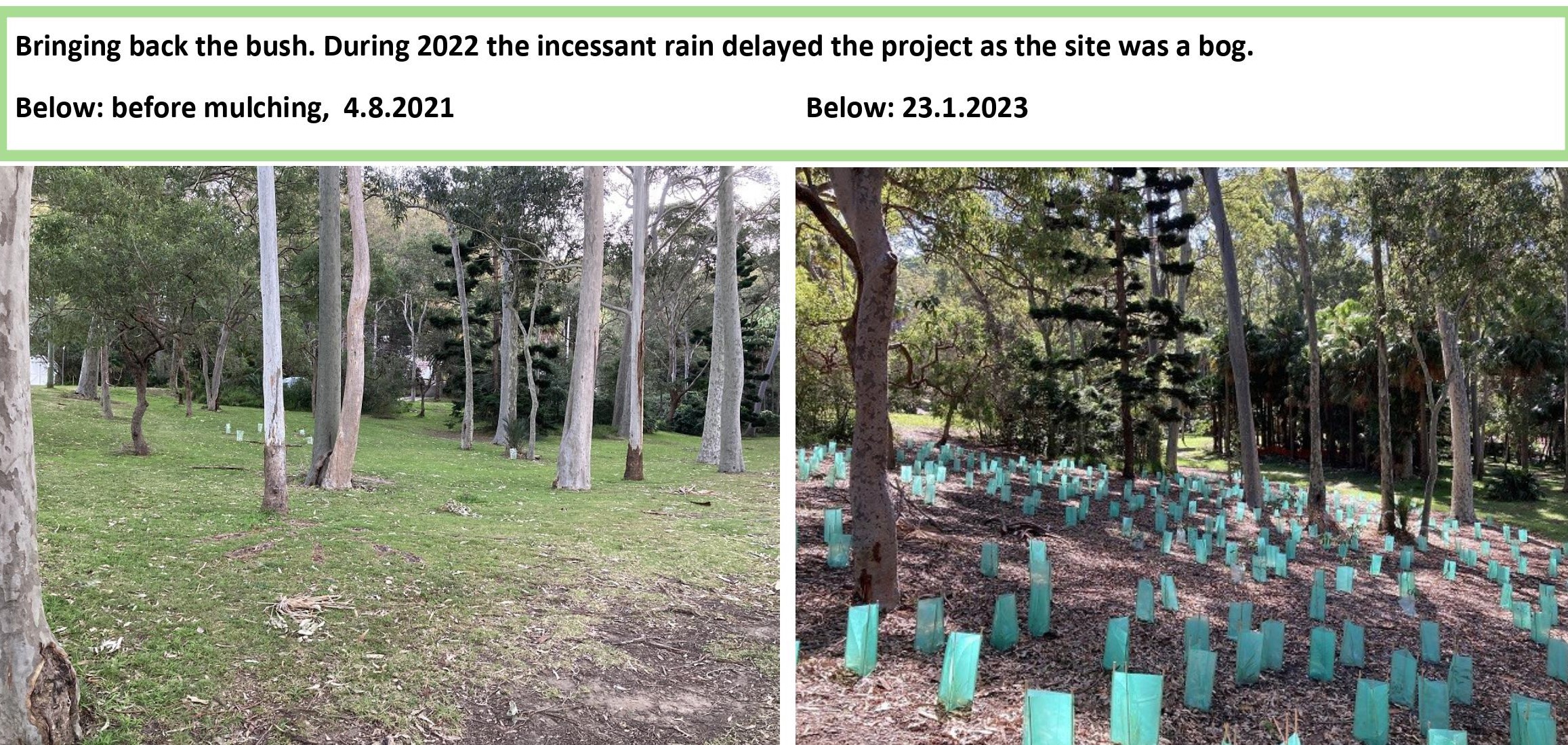
Report Fox Sightings
%20(1).jpg?timestamp=1675893929686)
Marine Wildlife Rescue Group On The Central Coast
A new wildlife group was launched on the Central Coast on Saturday, December 10, 2022.
Marine Wildlife Rescue Central Coast (MWRCC) had its official launch at The Entrance Boat Shed at 10am.
The group comprises current and former members of ASTR, ORRCA, Sea Shepherd, Greenpeace, WIRES and Wildlife ARC, as well as vets, academics, and people from all walks of life.
Well known marine wildlife advocate and activist Cathy Gilmore is spearheading the organisation.
“We believe that it is time the Central Coast looked after its own marine wildlife, and not be under the control or directed by groups that aren’t based locally,” Gilmore said.
“We have the local knowledge and are set up to respond and help injured animals more quickly.
“This also means that donations and money fundraised will go directly into helping our local marine creatures, and not get tied up elsewhere in the state.”
The organisation plans to have rehabilitation facilities and rescue kits placed in strategic locations around the region.
MWRCC will also be in touch with Indigenous groups to learn the traditional importance of the local marine environment and its inhabitants.
“We want to work with these groups and share knowledge between us,” Gilmore said.
“This is an opportunity to help save and protect our local marine wildlife, so if you have passion and commitment, then you are more than welcome to join us.”
Marine Wildlife Rescue Central Coast has a Facebook page where you may contact members. Visit: https://www.facebook.com/profile.php?id=100076317431064
- Ph: 0478 439 965
- Email: marinewildlifecc@gmail.com
- Instagram: marinewildliferescuecc

Watch Out - Shorebirds About
.JPG.opt1460x973o0,0s1460x973.jpg?timestamp=1663629195339)
Possums In Your Roof?: Do The Right Thing

Aviaries + Possum Release Sites Needed

Bushcare In Pittwater: Where + When
Where we work Which day What time
Avalon
Angophora Reserve 3rd Sunday 8:30 - 11:30am
Avalon Dunes 1st Sunday 8:30 - 11:30am
Avalon Golf Course 2nd Wednesday 3 - 5:30pm
Careel Creek 4th Saturday 8:30 - 11:30am
Toongari Reserve 3rd Saturday 9 - 12noon (8 - 11am in summer)
Bangalley Headland 2nd Sunday 9 to 12noon
Bayview
Winnererremy Bay 4th Sunday 9 to 12noon
Bilgola
North Bilgola Beach 3rd Monday 9 - 12noon
Algona Reserve 1st Saturday 9 - 12noon
Plateau Park 1st Friday 8:30 - 11:30am
Church Point
Browns Bay Reserve 1st Tuesday 9 - 12noon
McCarrs Creek Reserve Contact Bushcare Officer To be confirmed
Clareville
Old Wharf Reserve 3rd Saturday 8 - 11am
Elanora
Kundibah Reserve 4th Sunday 8:30 - 11:30am
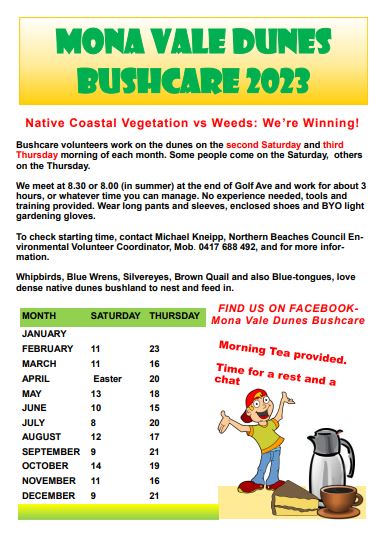 Mona Vale
Mona Vale Mona Vale Beach Basin 1st Saturday 8 - 11am
Mona Vale Dunes 2nd Saturday +3rd Thursday 8:30 - 11:30am
Newport
Bungan Beach 4th Sunday 9 - 12noon
Crescent Reserve 3rd Sunday 9 - 12noon
North Newport Beach 4th Saturday 8:30 - 11:30am
Porter Reserve 2nd Saturday 8 - 11am
North Narrabeen
Irrawong Reserve 2nd Saturday 2 - 5pm
Palm Beach
North Palm Beach Dunes 3rd Saturday 9 - 12noon
Scotland Island
Catherine Park 2nd Sunday 10 - 12:30pm
Elizabeth Park 1st Saturday 9 - 12noon
Pathilda Reserve 3rd Saturday 9 - 12noon
Warriewood
Warriewood Wetlands 1st Sunday 8:30 - 11:30am
Whale Beach
Norma Park 1st Friday 9 - 12noon
Western Foreshores
Coopers Point, Elvina Bay 2nd Sunday 10 - 1pm
Rocky Point, Elvina Bay 1st Monday 9 - 12noon
Friends Of Narrabeen Lagoon Catchment Activities

Gardens And Environment Groups And Organisations In Pittwater
- Ringtail Posse: 1 – February 2023; Anna Maria Monticelli: King Parrots/Water Dragons - Jacqui Scruby: Loggerhead Turtle - Lyn Millett OAM: Flying-Foxes - Kevin Murray: Our Backyard Frogs - Miranda Korzy: Brushtail Possums
- Ringtail Posse: 2 - March 2023; Kevin Murray: Tawny Frogmouth - Kayleigh Greig: Red-Bellied Black Snake - Bec Woods: Australian Water Dragon - Margaret Woods: Owlet-Nightjar - Hilary Green: Butcher Bird - Susan Sorensen: Wallaby
- Ringtail Posse 3 - April 2023: Jeffrey Quinn: Kookaburra, Tom Borg McGee: Kookaburra, Stephanie Galloway-Brown: Bandicoot, Joe Mills: Noisy Miner
- Ringtail Posse 4 May 2023 - Andrew Gregory: Powerful Owl, Marita Macrae: Pale-Lipped Or Gully Shadeskink, Jools Farrell: Whales & Seals, Nicole Romain: Yellow-Tailed Black Cockatoo
- Ringtail Posse 5: June 2023 - Lynleigh Greig OAM: Snakes, Dick Clarke: Diamond Python, Selena Griffith: Glossy Black-Cockatoo, Eric Gumley: Bandicoot
- Ringtail Posse 6: July 2023 - Sonja Elwood: Long-Nosed Bandicoot, Dr. Conny Harris: Swamp Wallaby, Neil Evers: Bandicoot, Bill Goddard: Bandicoot
- Ringtail Posse 7: August 2023 - Geoff Searl OAM: Tawny Frogmouth, Peter Macinnis: Echidna, Peter Carter: Ringtail Possum, Nathan Wellings; Kookaburra
- Ringtail Posse 8: September 2023 - Saving Sydney's Last Koalas; Logging Now Stopped In Future Koala Park By Minns Government - ''Is There Time To Save Sydney's Last Koalas Too?'' Asks: John Illingsworth, WIRES, Sydney Wildlife Rescue, Save Sydney Koalas, The Sydney Basin Koala Network, The Help Save The Wildlife & Bushlands In Campbelltown Group, Appin Koalas Animal Rescue Service, Patricia and Barry Durham, Sue Gay, Save Mt. Gilead, Paola Torti Of The International Koala Intervention Group
- Ringtail Posse 9: October 2023 - David Palmer OAM: Bandicoots, Helen Pearce: Brushtail Possum, Amina Kitching: Goanna, David Goudie: Ringtails Possums + Bandicoots + Owls
- Mother Brushtail Killed On Barrenjoey Road: Baby Cried All Night - Powerful Owl Struck At Same Time At Careel Bay During Owlet Fledgling Season: calls for mitigation measures - The List of what you can do for those who ask 'What You I Do' as requested
- Ringtail Posse 10: November 2023 - Stop Wildlife Roadkill Group: You Can Help By Using The Wildlife Incident Mapping Website
More Green Space To Enhance Liveability In NSW Communities: Metropolitan Greenspace Program + Community Gardens Program Grants Now Open
- Metropolitan Greenspace Program. All councils in the Greater Sydney region and Central Coast Council are eligible and encouraged to apply by 29 April 2024. Successful applicants will be announced in June 2024.
- Places to Roam Community Gardens program. Applications close on 29 March 2024.
Wongkumara People – Native Title Act: Have Your Say
- Informal submission
- Mailout
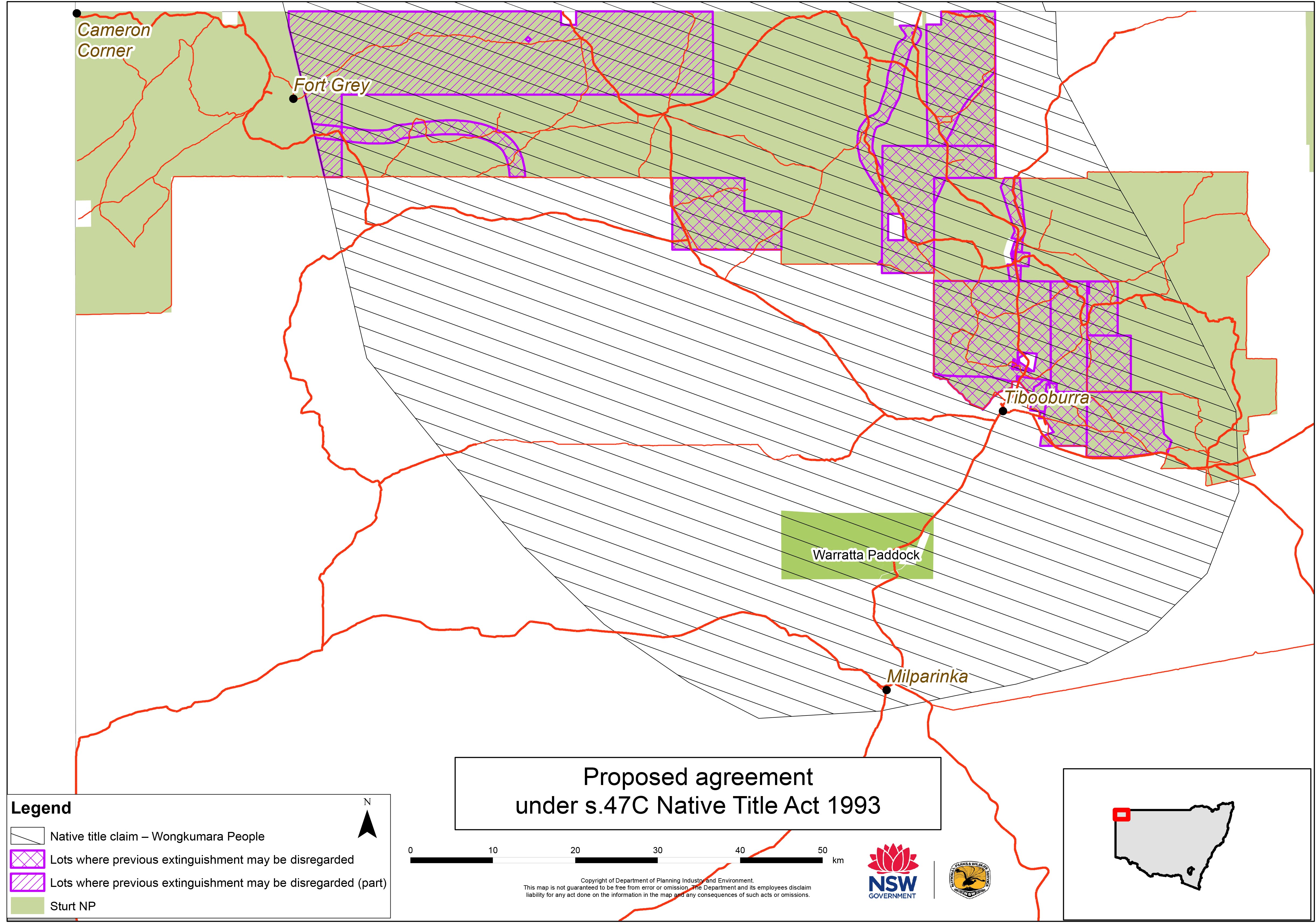
Widjabul Wia-Bal People – Notice Under The Native Title Act: Have Your Say
- Boatharbour Nature Reserve
- Tuckean Nature Reserve
- Muckleewee Mountain Nature Reserve
- Goonengerry National Park
- Victoria Park Nature Reserve
- Mount Jerusalem National Park
- Nightcap National Park
- Davis Scrub Nature Reserve
- Snows Gully Nature Reserve
- Tucki Tucki Nature Reserve
- Andrew Johnson Big Scrub Nature Reserve
- Whian Whian State Conservation Area.
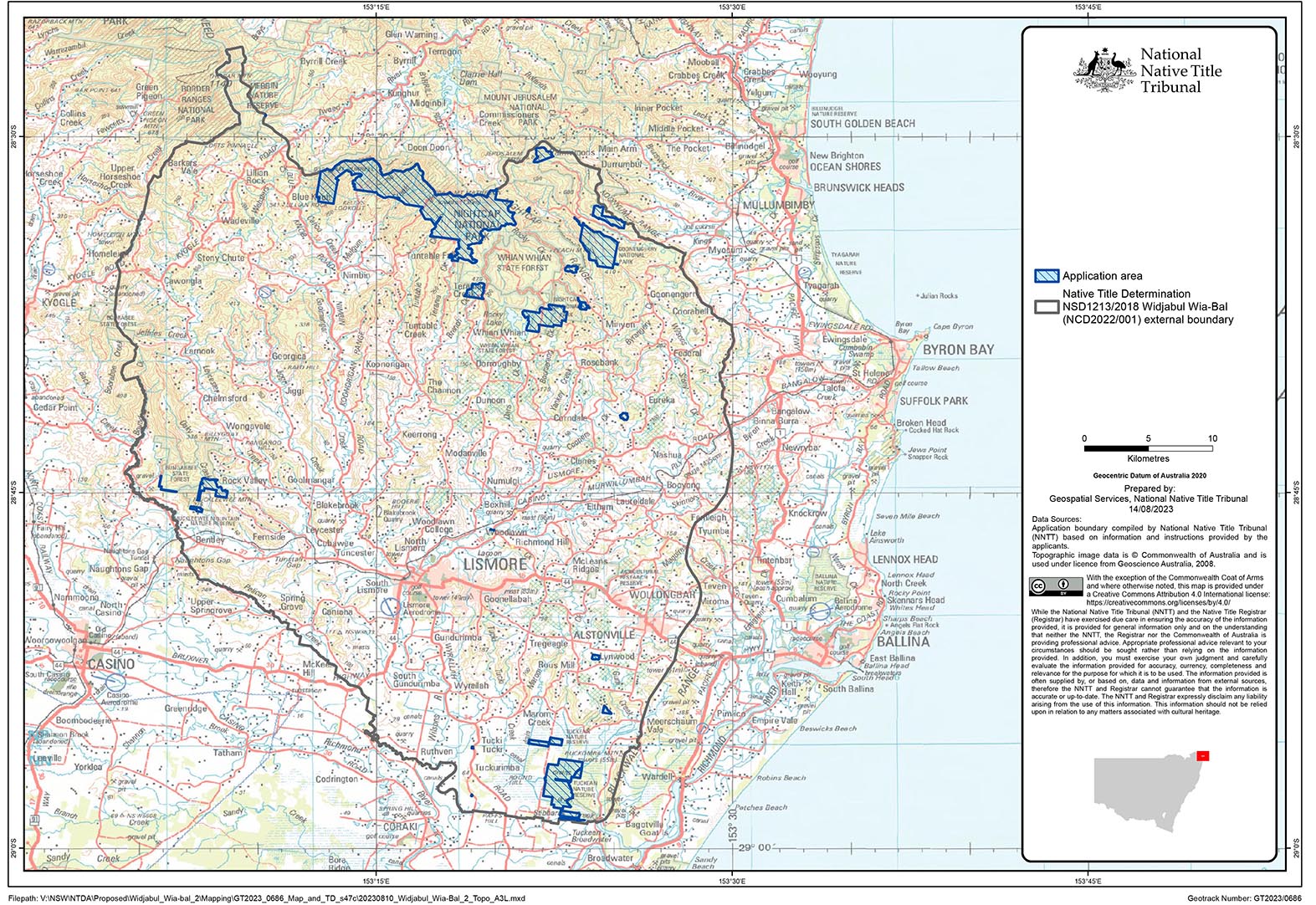
Environmental Grants Connect To Country: Applications Close 2 April 2024
Independent Review Of Small-Scale Titles: Have Your Say
Crown Land Management Act 2016 Review: Have Your Say
.jpg?timestamp=1708537972385)
Coastal Floodplain Drainage Project: Have Your Say
- addressing the complexity, time and costs associated with the approvals process
- reducing the impact of these works and activities on downstream water quality, aquatic ecosystems, communities and industries.
- Option 1: One-stop shop webpage - A single source of information on the various approvals that may be required by government agencies for coastal floodplain drainage works.
- Option 2: Drainage applications coordinator - A central officer(s) to guide the applicant through the approvals processes for all NSW government agencies (Department of Planning and Environment’s Water Group, Planning, Crown Lands, and the Department of Primary Industries — Fisheries) and answer the applicant’s questions about their individual location and proposed works. The drainage applications coordinator would complement both Option 1 and Option 3.
- Option 3: Concurrent assessment - Concurrent assessment of applications by relevant government agencies.
- Option 4: Risk-based approach - NSW Government agencies would use a standardised risk matrix to compare the type and extent of the drainage works against the acidic water and blackwater potential of the drainage area to identify the level of risk associated with the proposed works. The identified level of risk could then be used to determine the level of information required from applicants, the level of assessment required by the approval authority, and the types of conditions applied to any approvals.
- Option 5: Drainage work approvals under the Water Management Act 2000 - Switch on drainage work approvals under the Water Management Act 2000. Two different methods of implementation are possible:
i. a drainage work approval would be required only when works are proposed and for the area of works onlyii. a drainage work approval could apply to existing and new drainage works across the entire drainage network.
Within either of these two methods, one of three different approaches for public authorities could be applied:
a. require public authorities to hold a drainage work approvalb. allow for public authorities to hold a conditional exemption from requiring approvalsc. exempt public authorities from requiring a drainage work approval.
- Option 6: Streamlining of Fisheries and Crown Land approvals through the use of drainage work approvals - Drainage work approvals, particularly under Option 5(ii), have the potential to deliver a catchment-wide consideration of the drainage network. This would provide greater certainty to other agencies such as Fisheries and Crown Land that environmental impacts have been considered and appropriate conditions applied, supporting them to assess and issue approvals more quickly.
- Tuesday 5 March 2024 - Register to attend
- Friday 8 March 2024 - Register to attend
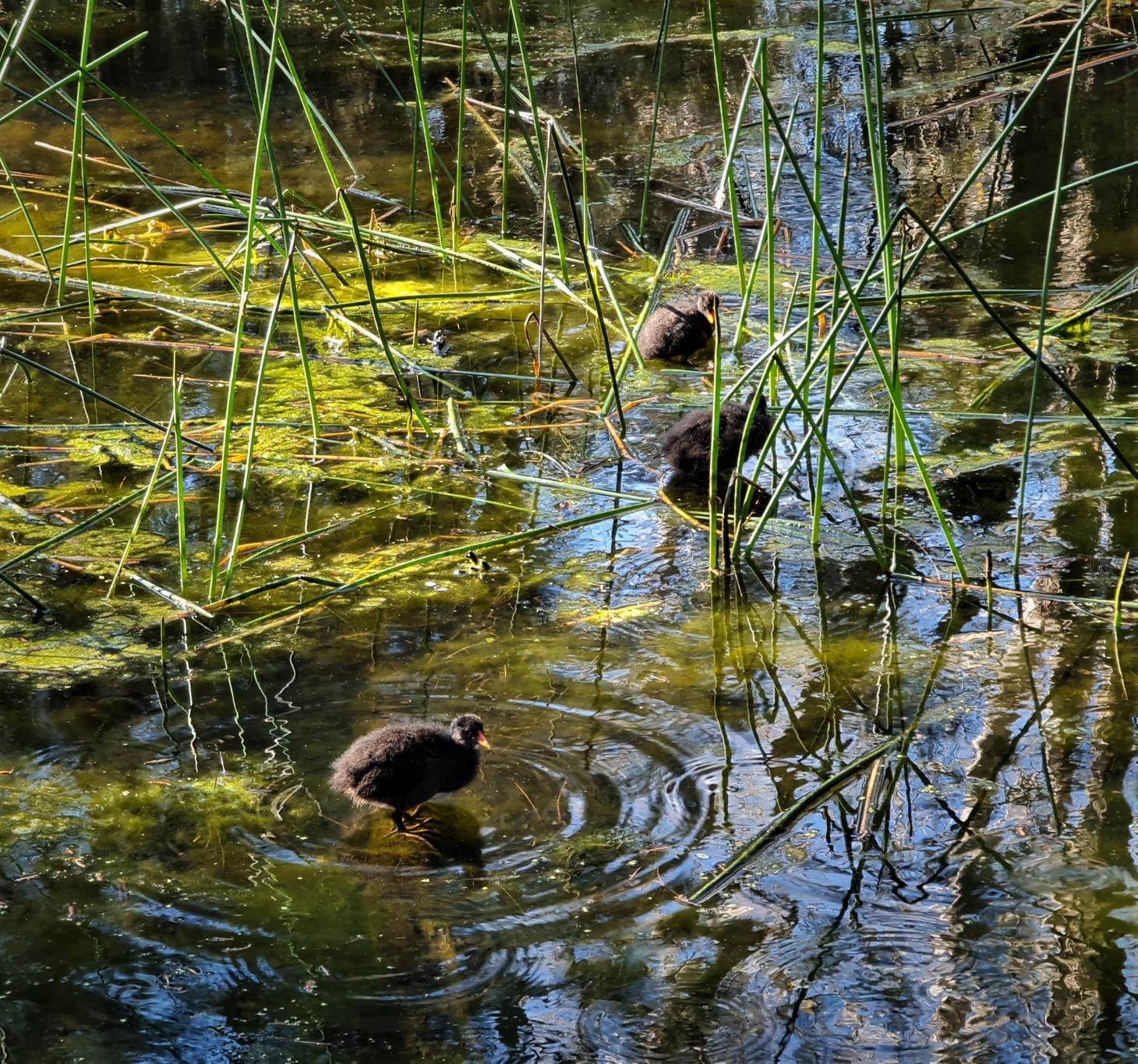
Australia’s Eucalypt Of The Year Voting Opens Today In Your Backyard!
- Dwarf Apple Angophora hispida
- Ghost Gum Corymbia aparrerinja
- Red-flowering Gum Corymbia ficifolia
- Silver Princess Eucalyptus caesia
- Argyle Apple Eucalyptus cinerea
- Yellow Gum Eucalyptus leucoxylon
- Risdon Peppermint Eucalyptus risdonii
- Coral Gum Eucalyptus torquata
- Heart-leaved Mallee Eucalyptus websteriana
- Lemon-flowered Gum Eucalyptus woodwardii
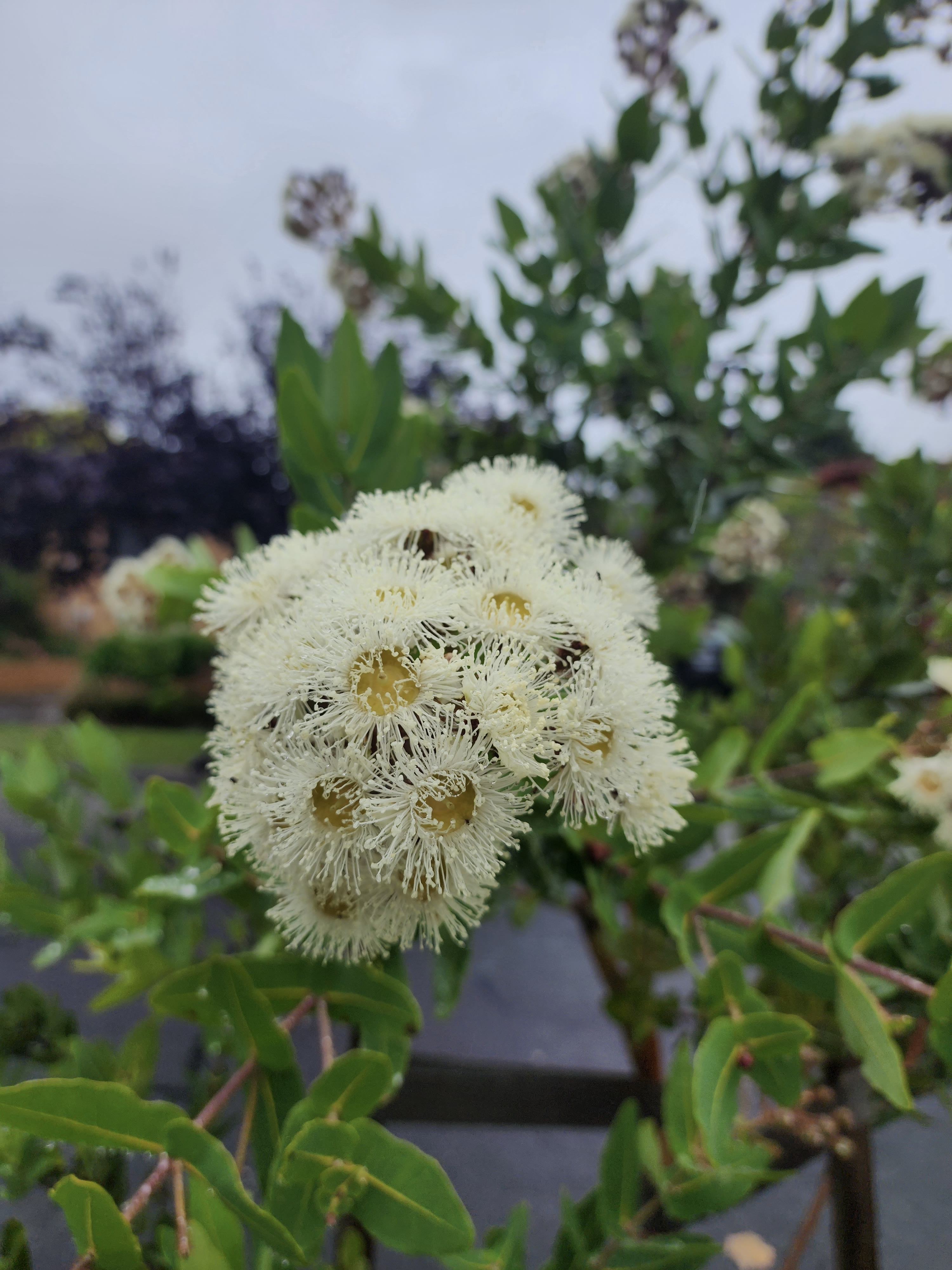
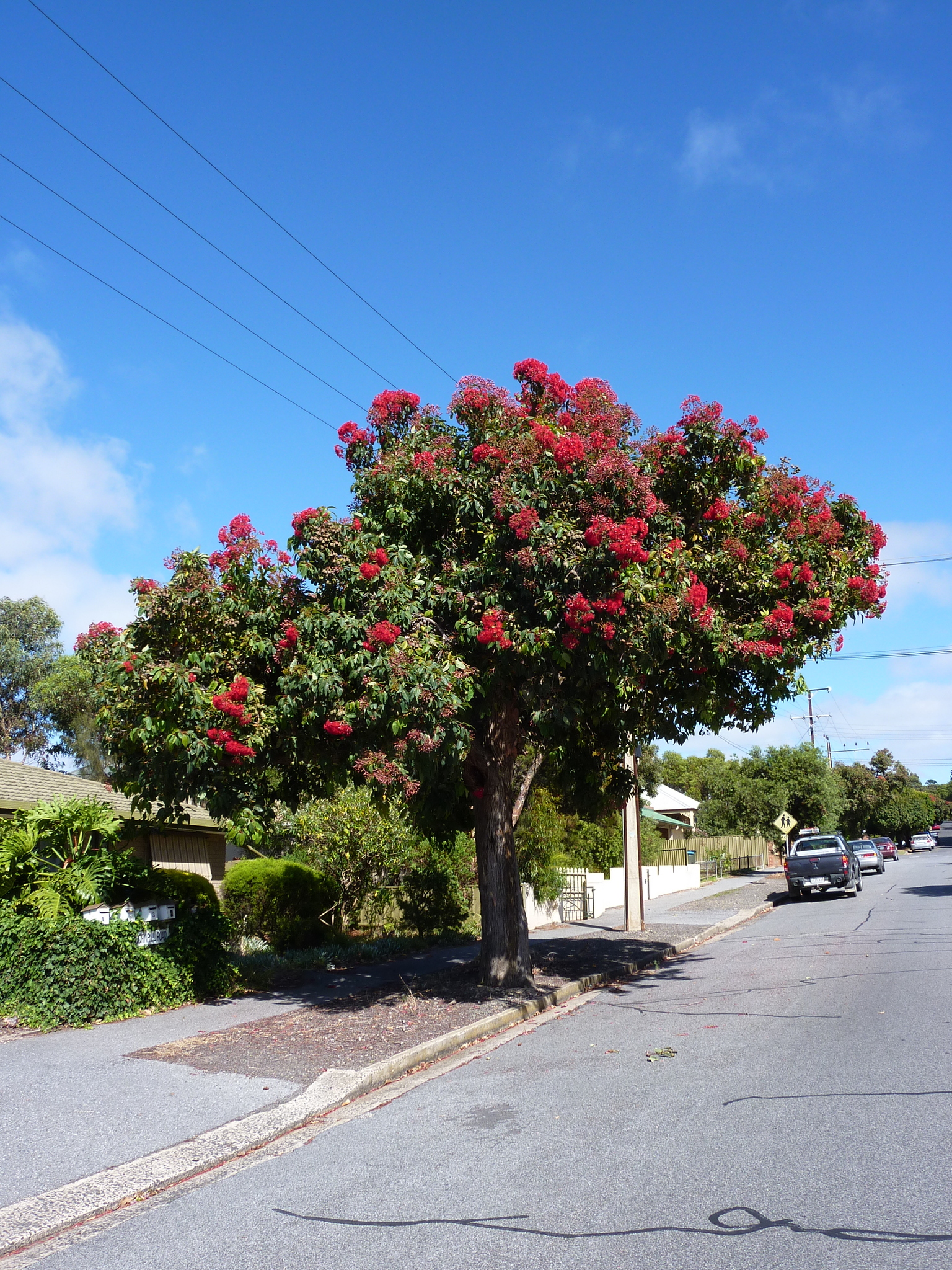
Baiting foxes can make feral cats even more ‘brazen’, study of 1.5 million forest photos shows

Foxes and cats kill about 2.6 billion mammals, birds and reptiles across Australia, every year. To save native species from extinction, we need to protect them from these introduced predators. But land managers tend to focus on foxes, which are easier to control. Unfortunately this may have unintended consequences.
We wanted to find out how feral cats respond to fox control. In one of the biggest studies on this issue to date, we worked with land managers to set up 3,667 survey cameras in a series of controlled experiments. We studied the effects on cat behaviour and population density.
Our research shows feral cats are more abundant and more brazen after foxes are suppressed.
In some regions, cats need to be managed alongside foxes to protect native wildlife.
Could Feral Cats Benefit From Fox Control?
Foxes and cats were brought to Australia by European colonisers more than 170 years ago. They now coexist across much of the mainland.
While foxes are bigger than cats, they compete for many of the same prey species.
But most wildlife conservation programs in southern Australia only control foxes. That’s largely because controlling foxes is relatively straightforward. Foxes are scavengers and readily take poison baits. Feral cats, on the other hand, prefer live prey. So they’re much more difficult to control using baits.
Consequently, foxes have become the most widely controlled invasive predator in Australia, while feral cat control has been relatively localised.
Some native species have thrived following fox control or eradication, but others have continued to decline. For example, one study found numbers of common brushtail possums, Western quolls and Tammar wallabies increased following fox control in southwest Western Australia. However, seven other species crashed: dunnarts, woylies, southern brown bandicoots, western ringtail possums, bush rats, brush-tailed phascogales and western brush wallabies.
People suspected controlling foxes could inadvertently free feral cats from competition and aggression, particularly if there were no dingoes around.
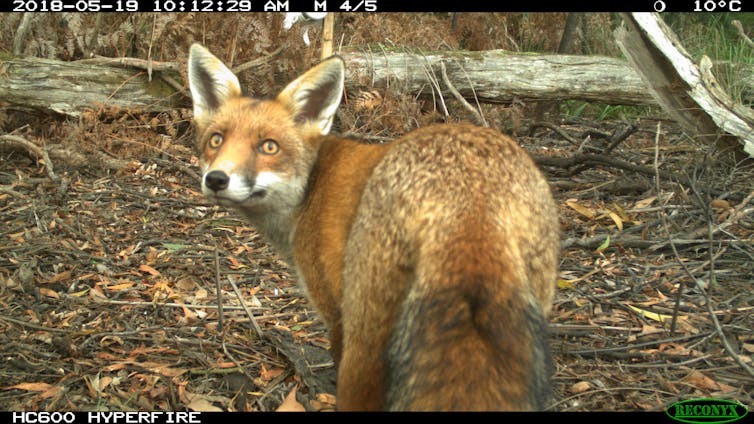
Experimenting With Fox Control
To investigate how cats respond to fox control programs, we worked with land managers to run two large experiments in southwest Victoria. Foxes are the top predator in these forests and woodlands, because dingoes have already been removed.
We studied cat behaviour and population density before and after fox control in the Otway Ranges. In a separate study, we compared conservation reserves with and without fox control in the Glenelg region.
We put out 3,667 survey cameras over seven years. The cameras photograph animals as they walk by, allowing us to analyse where and when invasive predators and native mammals are active.
From these photographs, we were also able to identify individual feral cats based on their unique coat markings.
When multiple photographs of one cat were taken by several different cameras, we could track their movement. Combining information on the tracks of all the cats in an area allowed us to estimate cat population density.
It was a painstaking process. We went through almost 1.5 million images manually to check for animals, eliminate false triggers and identify individual cats.
Future research is exploring using artificial intelligence to streamline the process, but the computer still needs to be taught what to look for.
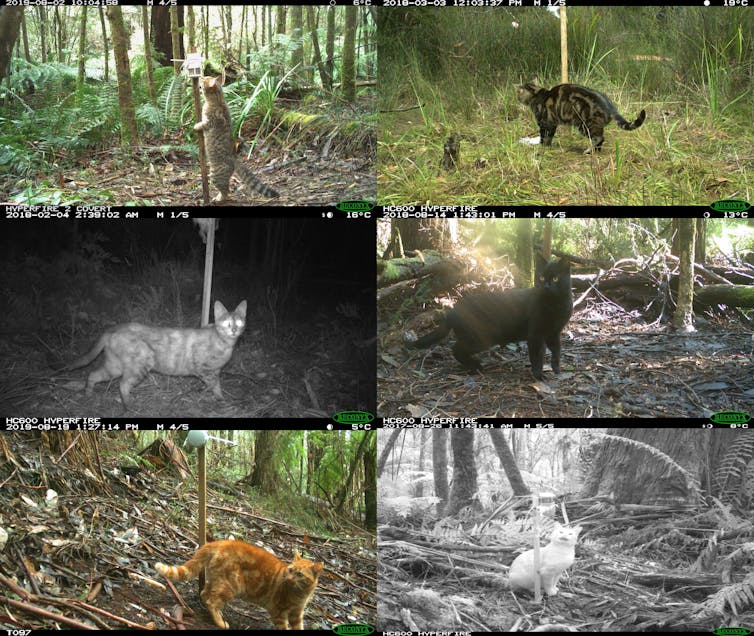
What We Found
We found sustained, intensive baiting for foxes worked. Areas with more poison baits had fewer foxes. Replacing baits regularly was also worthwhile.
Feral cat density was generally higher in areas with fox control. The strength of this effect varied with the extent and duration of fox management. We found up to 3.7 times as many cats in fox-baited landscapes.
Productive landscapes also supported more cats. There was about one feral cat per square kilometre in wet forests, compared with less than half as many in dry forests.
Feral cat behaviour also varied with fox control and forest type, including how visible cats were, how far they moved, and what times of day they were active.
Feral cats appeared more adventurous where fox populations were suppressed. In dry forests, for example, foxes were largely nocturnal, as were most native mammals. Feral cats became more active at night when there were fewer foxes, potentially giving them access to different prey species.
We found some threatened species, such as long-nosed potoroos, were doing much better in areas with long-term fox control, although others, such as southern brown bandicoots, showed no improvement.
We don’t know how fox control affected smaller native rodents and marsupials, which are likely to be most at risk from increased cat predation.

A Conservation Balancing Act
Broad-scale fox control is an important tool in the ongoing battle to protect Australia’s wildlife. Fox baiting is relatively simple and effective. But we have to balance the known benefits of fox control against potential unintended consequences.
Our study reinforces the need to carefully consider what could happen if you only control one pest animal, and to monitor carefully rather than assume that fox control will benefit all native species. We are not saying people should stop fox baiting, because there are clear benefits to species such as long-nosed potoroos. But we need to keep an eye on the cats and might need to also manage their impacts on native prey.
As feral cats are notoriously difficult to control lethally, indirect management may also be helpful. For example, promoting dense understorey vegetation for native prey to hide in or removing other sources of food that boost cat numbers such as pest rabbits.
Integrated pest management is challenging and expensive but likely needed, especially where feral cats or other pests are thriving alongside foxes.![]()
Matthew Rees, Postdoctoral Research Fellow, CSIRO and Bronwyn Hradsky, Research Fellow in Ecology, The University of Melbourne
This article is republished from The Conversation under a Creative Commons license. Read the original article.
Researchers found 37 mine sites in Australia that could be converted into renewable energy storage. So what are we waiting for?

The world is rapidly moving towards a renewable energy future. To support the transition, we must prepare back-up energy supplies for times when solar panels and wind turbines are not producing enough electricity.
One solution is to build more pumped hydro energy storage. But where should this expansion happen?
Our new research identified more than 900 suitable locations around the world: at former and existing mining sites. Some 37 sites are in Australia.
Huge open-cut mining pits would be turned into reservoirs to hold water for renewable energy storage. It would give the sites a new lease on life and help shore up the world’s low-emissions future.
The Benefits Of Pumped Hydro Storage
Pumped hydro energy storage has been demonstrated at scale for more than a century. Over the past few years, we have been identifying the best sites for “closed-loop” pumped hydro systems around the world.
Unlike conventional hydropower systems operating on rivers, closed-loop systems are located away from rivers. They require only two reservoirs, one higher than the other, between which water flows down a tunnel and through a turbine, producing electricity.
The water can be released – and power produced – to cover gaps in electricity supply when output from solar and wind is low (for example on cloudy or windless days). And when wind and solar are producing more electricity than is needed – such as on sunny or windy days – this cheap surplus power is used to pump the water back up the hill to the top reservoir, ready to be released again.
Off-river sites have very small environmental footprints and require very little water to operate. Pumped hydro energy storage is also generally cheaper than battery storage at large scales.
Batteries are the preferred method for energy storage over seconds to hours, while pumped hydro is preferred for overnight and longer storage.
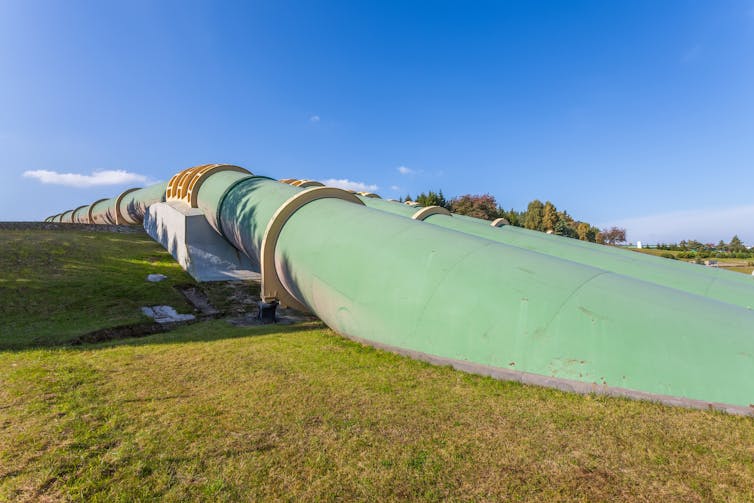
Why Mining Sites?
There are big benefits to converting mining areas into pumped hydro plants.
For a start, the hole has already been dug, reducing construction costs. What’s more, mining sites are typically already serviced by roads and transmission infrastructure. The site usually has access to a water source for which the mine operators may have pumping rights. And the development takes place on land that is already cleared of vegetation, avoiding the need to disturb new areas.
Finally, community support may have already been obtained for the mining operations, which could easily be rolled over into a pumped hydro site.
In Australia, one pumped hydro energy storage project is already being built at a former gold mine site at Kidston in Far North Queensland.
The feasibility of two others is being assessed at Mount Rawdon near Bundaberg in Queensland, and at Muswellbrook in New South Wales. Both would repurpose old mining pits.
What We Found
Our previous research identified suitable locations in undeveloped areas (excluding protected land) and using existing reservoirs. Now, we have turned our attention to mine sites.
Our study used a computer algorithm to search the Earth’s surface for suitable sites. It looked for mining pits, pit lakes and tailings ponds in mining sites which were located near suitable land for a new upper reservoir. The idea is that the reservoir and mining site are “paired” and water pumped between them.
Globally, we identified 904 suitable mining sites across 77 countries.
Some 37 suitable sites are located in Australia. They include the Mount Rawdon and Muswellbrook mining pits already under investigation.
There are a number of potential options in Western Australia: in the iron-ore region of the Pilbara, south of Perth and around Kalgoorlie.
Options in Queensland and New South Wales are mostly located down the east coast, including the Coppabella Mine and the coal mining pits near the old Liddell Power Station. Possible sites also exist inland at Mount Isa in Queensland and at the Cadia Hill gold mine near Orange in NSW.
Potential sites in South Australia include the old Leigh Creek coal mine in the Flinders Ranges and the operating Prominent Hill mine northwest of Adelaide. Tasmania and Victoria also offer possible locations, although many other non-mining options exist in these states for pumped hydro storage.
We are not suggesting that operating mines be closed – rather, that pumped hydro storage be considered as part of site rehabilitation at the end of the mine’s life.
If old mining sites are to be converted into pumped hydro, several challenges must be addressed. For example, mine pits may contain contaminants that, if filled with water, could seep into groundwater. However, this could be overcome by lining reservoirs.
Looking Ahead
Australia has set a readily achievable goal of reaching 82% renewable electricity by 2030.
The Australian Energy Market Operator suggests by 2050, this nation needs about 640 gigawatt-hours of dispatchable or “on demand” storage to support solar and wind capacity. We currently have about 17 gigawatt-hours of electricity storage, with more committed by Snowy 2.0 and other projects.
The 37 possible pumped hydro sites we’ve identified could deliver 540 gigawatt-hours of storage potential. Combined with other non-mining sites we’ve identified previously, the options are far more numerous than our needs.
This means we can afford to be picky, and develop only the very best sites. So what are we waiting for?![]()
Timothy Weber, Research Officer for School of Engineering, Australian National University and Andrew Blakers, Professor of Engineering, Australian National University
This article is republished from The Conversation under a Creative Commons license. Read the original article.
Our native animals are easy prey after a fire. Could artificial refuges save them?
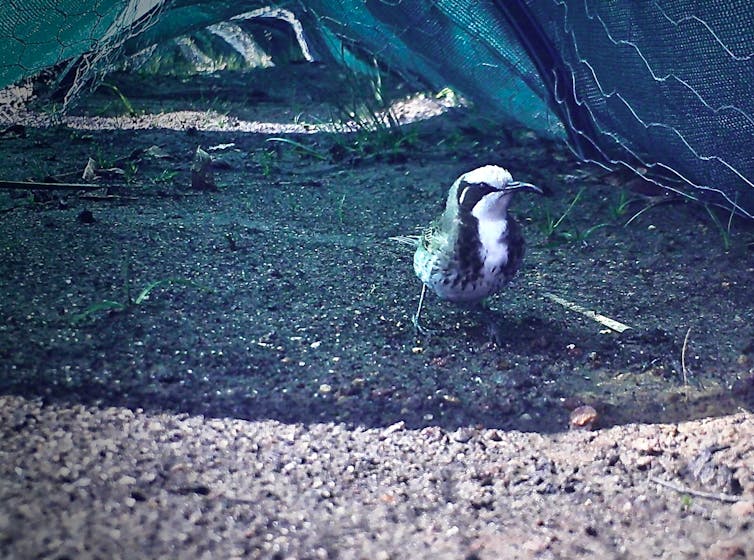
Australia is home to some of the most spectacular and enigmatic wildlife on Earth. Much of it, however, is being eaten by two incredibly damaging invasive predators: the feral cat and the red fox.
Each year in Australia, cats and foxes kill an estimated 697 million reptiles, 510 million birds, and 1.4 billion mammals, totalling a staggering 2.6 billion animals. Since the predators were introduced more than 150 years ago, they have contributed to the extinction of more than 25 species – and are pushing many more to the brink.
Research suggests cats and foxes can be more active in areas recently burnt by fire. This is a real concern, especially as climate change increases the frequency and severity of fire in south-eastern Australia.
We urgently need new ways to protect wildlife after fires. Our study trialled one such tool: building artificial refuges across burnt landscapes. The results are promising, but researchers need to find out more.
Triple Threat: Cats, Foxes And Fire
Many native animals are well-adapted to fire. But the changing frequency and intensity of fire is posing a considerable threat to much of Australia’s wildlife.
Fire removes vegetation such as grass, leaf litter and shrubs. This leaves fewer places for native animals to shelter and hide, making it easier for cats and foxes to catch them.
We conducted our experiment in three Australian ecosystems: the forests of the Otway Ranges (Victoria), the sand dunes of the Simpson Desert (Queensland) and the woodlands of Kangaroo Island (South Australia). Each had recently been burnt by fire.
We built 76 refuges across these study areas. They were 90cm wide and up to 50m long – and backbreaking to install! They were made from wire mesh, mostly covered by shade cloth. Spacing in the mesh of 50mm allowed small animals to enter and exit from any point, while completely excluding cats, foxes and other larger animals. The shade cloth obstructed the vision of predators.
We then placed remote-sensing camera traps both inside and away from each refuge, and monitored them for periods ranging from four months to four years.
The placement of the cameras meant we could compare the effect of the refuges with what occurred outside them.
What We Found
Across the three study areas, the artificial refuges were used by 56 species or species groups. This included the critically endangered Kangaroo Island dunnart, the threatened white-footed dunnart and the threatened southern emu-wren.
For around half the species, we detected more individuals inside the refuges than outside. As we predicted, the activity of small birds and reptiles, in particular, was much higher inside the refuges.
But surprisingly, reptile activity was also generally higher inside the refuges, particularly among skinks. We had not predicted that, because the shade cloth likely made conditions inside the refuges cooler than outside, and reptiles require warmth to regulate their body temperature.
Over time, the number of animals detected inside the refuges generally increased. This was also a surprise. We expected detections inside the refuges to decline through time as the vegetation recovered and the risk of being seen by predators fell.
But there were also a few complicating factors. For example, in the Otway Ranges and Simpson Desert, similar numbers of the mammals were detected inside and away from the refuges. This suggests the species didn’t consider the refuges as particularly safe places, which means the structures may not reduce the risk of these animals becoming prey.
So what’s the upshot of all this? Our findings suggest that establishing artificial refuges after fire may help some small vertebrates, especially small birds and skinks, avoid predators across a range of ecosystems. However, more research is required before this strategy is adopted as a widespread management tool.
Important Next Steps
Almost all evidence for an increase in cat and fox activity after fire comes from Australia, particularly the tropical north. But cats are an invasive species in more than 120 countries and islands.
That means there’s real potential for post-fire damage to wildlife to worsen globally, especially as fire risk increases with climate change.
Our results suggest artificial refuges may be a way to help animals survive after fire. But there are still important questions to answer, such as:
- can artificial refuges improve the overall abundance and survival of individuals and species?
- if so, how many refuges would be required to achieve this?
- in the presence of natural refuges – such as rocks, logs, burrows, and unburnt patches – are artificial refuges needed?
- does their effectiveness vary between low-severity planned burns and high-severity bushfires?
These questions must be answered. Conservation budgets are tight. After fires, funds must be directed towards actions that we know will work. That evidence is not yet there for artificial refuges.
Our team is busy trying to find out more. We urge other ecologists and conservationists to do so as well. We also encourage collaboration with designers and technologists to improve on our refuge design. For example, can such large refuges be made biodegradable and easier to deploy?
Solving these problems is important. It’s almost impossible to rid the entire Australian continent of cats and foxes. So land managers need all the help they can get to stop these predators from decimating Australia’s incredible wildlife. ![]()
Darcy Watchorn, PhD Candidate, Deakin University; Chris Dickman, Professor Emeritus in Terrestrial Ecology, University of Sydney, and Don Driscoll, Professor in Terrestrial Ecology, Deakin University
This article is republished from The Conversation under a Creative Commons license. Read the original article.
Victoria’s fire alert has knocked Australians out of complacency. Under climate change, catastrophic bushfires can strike any time
David Bowman, University of TasmaniaVictorians were braced for the worst on Wednesday amid soaring temperatures and gusty winds, creating the state’s worst fire conditions in years. Authorities have declared a “catastrophic” fire risk in some parts of the state.
At the time of writing, the Bayindeen bushfire near Ballarat was still burning out of control, almost a week after it began. It had razed 21,300 hectares, destroyed six homes and killed livestock. And more than 30,000 people in high-risk areas between Ballarat and Ararat had reportedly been told to leave their homes.
This statewide emergency is noteworthy for several reasons. First, it represent a big test of Australia’s updated fire danger rating system. The new version adopted in 2022 dictates that if a fire takes hold under catastrophic conditions, people should leave an area rather than shelter in place or stay defend their homes.
The second point to note is the timing: late February, when many Australians probably thought the worst of the bushfire season was over. Climate change is bringing not just more frequent and severe fires, but longer fire seasons. That means we must stay on heightened alert for much longer than in the past.
Under Catastrophic Conditions, Leave
The current Australian Fire Danger Rating System was implemented in September 2022. It’s a nationally consistent system based on the latest scientific research.
Authorities hope the system will more accurately predict fire danger. It was also designed to more clearly communicate the danger rating to the public. For example, it involves just four danger ratings, compared to the previous six under the old Victorian regime.
“Catastrophic” fire danger – previously “code red” in Victoria – represents the worst conditions. The main message for the public under these conditions is:
If a fire starts and takes hold, lives are likely to be lost. For your survival leave bushfire risk areas.
Under catastrophic conditions, people are advised to move to a safer location early in the morning or even the day before. Authorities warn “homes cannot withstand fires in these conditions. You may not be able to leave, and help may not be available”.

Lessons From Black Saturday
Australia’s previous fire danger rating system was developed in the 1960s and was formally known as the McArthur Forest Fire Danger Index. It initially comprised five risk levels ranging from low-moderate to extreme. However, states were free to adapt the system to their needs, including adding extra categories.
The devastating 2009 Black Saturday bushfires in Victoria killed 173 people. Many people died after staying to defend their properties.
The tragedy prompted scrutiny of the fire danger ratings system in Victoria, and the “code red” category was added. The message under those conditions was that those living in a bushfire-prone area should leave. The first code red was declared in 2010, then another in 2019.
That system was replaced by the national system in 2022.
Don’t Stay And Defend
Under the current fire danger rating system, catastrophic conditions mean everyone should leave an area. The leave orders currently issued in Victoria cover many thousands of people, and represent a big test of this advice.
We don’t yet know how many people will heed the advice of authorities. However, at least some people have reportedly decided to stay and defend their properties.
If thousands of others do flee, what will result? Will rural roads be blocked? Do we have the infrastructure to temporarily house all those evacuees? Whether or not the fire situation escalates on Wednesday, there will be much to learn about how we deal with such threats.
Certainly, it’s prudent for people in high-risk areas to leave. In hot, windy conditions, a fire could erupt and take hold in minutes. The collapse of electricity transmission towers in Victoria last week showed the vulnerability of such infrastructure in high winds. It doesn’t take long for downed power lines to ignite the surrounding bush.
Is there a potential alternative to the mass relocation of people in response to a major fire risk? Yes: building communities that are sufficiently fire-proofed to withstand catastrophic fire weather.
This could be achieved through adaptation measures such as building fire bunkers and specially-designed houses. It would also involve carefully managed bushland and creating fire breaks by planting non-flammable plants. It may also include targeted cultural burning by Traditional Owners. These options require further discussion and research.
Our Fire Seasons Are Getting Longer
The current emergency in Victoria shows how Australia’s fire seasons are changing.
It’s late February and summer is almost over. The kids are back at school and the adults are back at work. It seemed southeast Australia had escaped the bad fire summer that many had feared. Few people expected this late-season emergency.
But as climate change escalates, we must expect the unexpected. In a fire-prone continent such as Australia, we can never relax in a warming world. We must be in a constant, heightened state of preparedness.
That means know your risk and prepare your home. Draw up a bushfire survival plan – think about details such as what to do with pets and who will check on vulnerable neighbours. And please, heed the advice of authorities.![]()
David Bowman, Professor of Pyrogeography and Fire Science, University of Tasmania
This article is republished from The Conversation under a Creative Commons license. Read the original article.
What we know about last year’s top 10 wild Australian climatic events – from fire and flood combos to cyclone-driven extreme rain
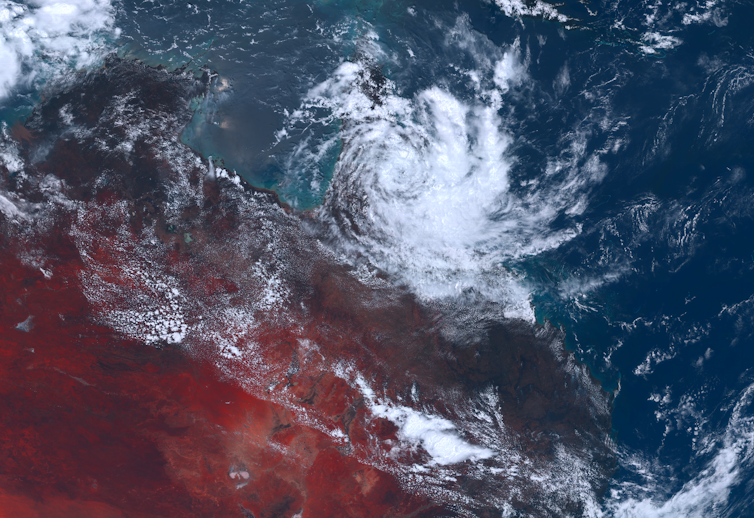
Fire. Flood. Fire and flood together. Double-whammy storms. Unprecedented rainfall. Heatwaves. Climate change is making some of Australia’s weather more extreme. In 2023, the country was hit by a broad range of particularly intense events, with economy-wide impacts. Winter was the warmest in a record going back to 1910, while we had the driest September since at least 1900.
We often see extreme weather as distinct events in the news. But it can be useful to look at what’s happening over the year.
Today, more than 30 of Australia’s leading climate scientists released a report analysing ten major weather events in 2023, from early fires to low snowpack to compound events.
Can we say how much climate change contributed to these events? Not yet. It normally takes several years of research before we can clearly say what role climate change played. But the longer term trends are well established – more frequent, more intense heatwaves over most of Australia, marine heatwave days more than doubling over the last century, and short, intense rainfall events intensifying in some areas.
What Happened In 2023?
January. Event #1: Record-breaking rain in the north (NT, WA, QLD)
The year began with above-average rainfall in northern Australia influenced by the “triple-dip” La Niña phase.
Some parts of the country were already experiencing heavy rainfall even before Cyclone Ellie arrived. From late December 2022 to early January 2023, Ellie brought heavy rainfall to Western Australia, the Northern Territory and Queensland, resulting in a one-in-100-year flooding of the Fitzroy River. Interestingly, Cyclone Ellie was only a “weak” Category 1 tropical cyclone. So why did it cause so much damage? In their analysis, climate scientists suggest it was actually low wind speeds in the mid-troposphere which allowed the system to stall and keep raining.
February–March. Event 2: Extreme rain and food shortages (NT, QLD)
Climate scientists observed the same behaviour from late February to early March 2023, when a persistent slow-moving low-pressure system known as a monsoonal low dumped heavy, widespread rain over the Northern Territory and north-west Queensland. The resulting floods cut transport routes in the NT, and led to food shortages.
June–August. Event 3 and 4: Warmest winter, little snow (NSW)
After a wet start to the year, conditions became drier and warmer in southern and eastern Australia. New South Wales experienced its warmest winter on record, with daily maximums more than 2°C above the long-term average.
The unusual heat and lack of precipitation translated into the second-worst snow season on record (the worst was 2006).
September. Event 5: Record heatwave (SA)
In September, South Australia faced a record-breaking heatwave. Temperatures reached as high as 38°C in Ceduna. As warming continues, scientists suggest unusual heat and heatwaves during the cool season will become more frequent and intense.
September also saw El Niño and a positive Indian Ocean Dipole declared by the Bureau of Meteorology. When these two climate drivers combine, we have a higher chance of a warm and dry Australia, particularly during late winter and spring.
October. Event 6, 7 and 8: Fire-and-flood compound event (VIC), compound wind and rain storms (TAS), unusually early fires (QLD)
Dry conditions gave rise to an unseasonably early fire season in Victoria and Queensland. In October, Queensland’s Western Downs region was hit hard. Dozens of houses and two lives were lost in the town of Tara.
The same month, Victoria’s Gippsland region was hit by back-to-back fires and floods, a phenomenon known as a compound event.
While it’s difficult to attribute these events to climate change, scientists say hot and dry winters make Australia more prone to early season fires.
Also in October, a different compound event struck Tasmania in the form of successive low-pressure systems. The first dumped a month’s worth of rain in a few days over much of the state, while the second brought strong winds. The rain from the first storm loosened the soil, making it easier for trees to be blown down.
Scientists say the combined effects were more severe than if just one of these events occurred without the other. Such extreme wind-and-rain compound events are expected to occur more frequently in regions such as the tropics as the climate continues to change.
November. Event 9: Supercell thunderstorm trashed crops (QLD)
In November, a supercell thunderstorm hit Queensland’s south-east, destroying A$50 million worth of crops and farming equipment. Initial research suggests extreme winds and thunderstorms may become more likely under climate change, but more work is needed.
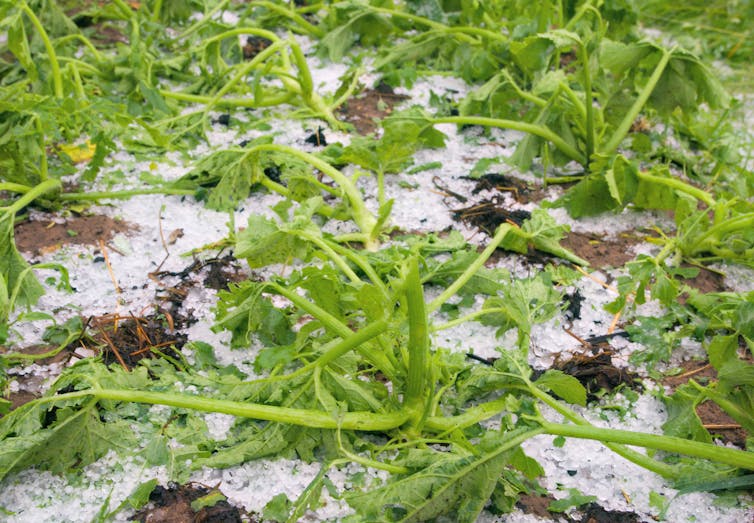
December. Event 10: Unprecedented flooding from Cyclone Jasper (QLD)
In mid-December, Tropical Cyclone Jasper made landfall as a Category 2 tropical cyclone in north Queensland. The system weakened into a tropical low and then stalled over Cape York. The weather system’s northerly winds drew in moist air from the Coral Sea, which collided with drier winds from the south-east. This caused persistent heavy rainfall over the region – up to 2 metres in places. Catchments flooded across the region, causing widespread damage to roads, buildings and crops. Similar to ex-Tropical Cyclone Ellie, most damage occurred after landfall as the system stalled and dumped rain.
Climate Change Can Make Extreme Weather Even More Extreme
It’s generally easier to identify and understand the role of human-caused climate change in large-scale extreme events, particularly temperature extremes. So we can say 2023’s exceptional winter heat was probably intensified by what we have done to the climate system.
For smaller-scale extremes, it is often harder to determine the role of climate change, but there’s some evidence short, intense rainfall events are getting even more intense as the world warms. Early-season bushfires and low snow cover are consistent with what we expect under global warming.
There’s also an increasing threat from the risk of compound events where concurrent or consecutive extreme events can amplify damage.
Australia’s intense weather events during 2023 are broadly what we can expect to see as the world keeps getting hotter and hotter due to the heat-trapping greenhouse gases humanity continues to emit. ![]()
Laure Poncet, Research officer, UNSW Sydney and Andrew King, Senior Lecturer in Climate Science, The University of Melbourne
This article is republished from The Conversation under a Creative Commons license. Read the original article.
Not such a bright idea: cooling the Earth by reflecting sunlight back to space is a dangerous distraction

The United Nations Environment Assembly this week considered a resolution on solar radiation modification, which refers to controversial technologies intended to mask the heating effect of greenhouse gases by reflecting some sunlight back to space.
Proponents argue the technologies will limit the effects of climate change. In reality, this type of “geoengineering” risks further destabilising an already deeply disturbed climate system. What’s more, its full impacts cannot be known until after deployment.
The draft resolution initially called for the convening of an expert group to examine the benefits and risks of solar radiation modification. The motion was withdrawn on Thursday after no consensus could be reached on the controversial topic.
A notable development was a call from some Global South countries for a “non-use agreement” on solar radiation modification. We strongly support this position. Human-caused climate change is already one planetary-scale experiment too many – we don’t need another.
A Risky Business
In some circles, solar geoengineering is gaining prominence as a response to the climate crisis. However, research has consistently identified potential risks posed by the technologies such as:
unpredictable effects on climate and weather patterns
biodiversity loss, especially if use of the technology was halted abruptly
undermining food security by, for example, reducing light and increasing salinity on land
the infringement of human rights across generations – including, but not limited to, passing on huge risks to generations that will come after us.
Here, we discuss several examples of solar radiation modification which exemplify the threats posed by these technologies. These are also depicted in the graphic below.
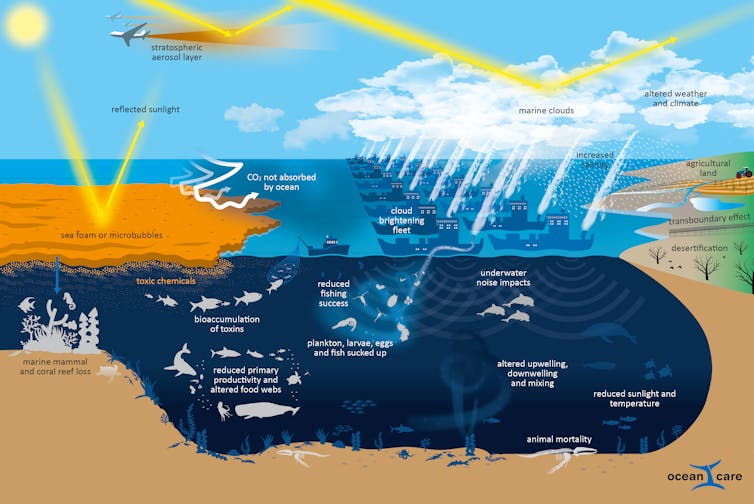
A Load Of Hot Air
In April 2022, an American startup company released two weather balloons into the air from Mexico. The experiment was conducted without approval from Mexican authorities.
The intent was to cool the atmosphere by deflecting sunlight. The resulting reduction in warming would be sold for profit as “cooling credits” to those wanting to offset greenhouse gas pollution.
Appreciably cooling the climate would, in reality, require injecting millions of metric tons of aerosols into the stratosphere, using a purpose-built fleet of high-altitude aircraft. Such an undertaking would alter global wind and rainfall patterns, leading to more drought and cyclones, exacerbating acid rainfall and slowing ozone recovery.
Once started, this stratospheric aerosol injection would need to be carried out continually for at least a century to achieve the desired cooling effect. Stopping prematurely would lead to an unprecedented rise in global temperatures far outpacing extreme climate change scenarios.
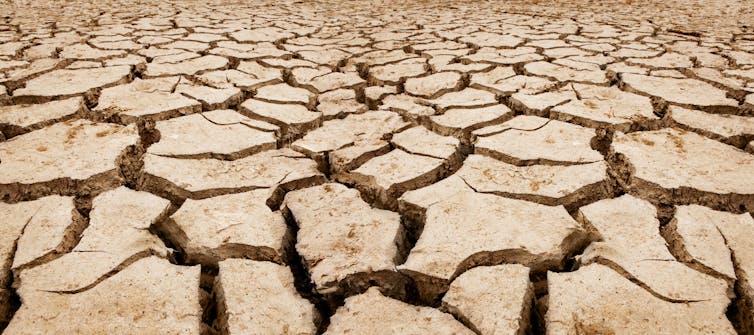
Heads In The Clouds
Another solar geoengineering technology, known as marine cloud brightening, seeks to make low-lying clouds more reflective by spraying microscopic seawater droplets into the air. Since 2017, trials have been underway on the Great Barrier Reef.
The project is tiny in scale, and involves pumping seawater onto a boat and spraying it from nozzles towards the sky. The project leader says the mist-generating machine would need to be scaled up by a factor of ten, to about 3,000 nozzles, to brighten nearby clouds by 30%.
After years of trials, the project has not yet produced peer-reviewed empirical evidence that cloud brightening could reduce sea surface temperatures or protect corals from bleaching.
The Great Barrier Reef is the size of Italy. Scaling up attempts at cloud brightening would require up to 1,000 machines on boats, all pumping and spraying vast amounts of seawater for months during summer. Even if it worked, the operation is hardly, as its proponents claim, “environmentally benign”.
The technology’s effects remain unclear. For the Great Barrier Reef, less sunlight and lower temperatures could alter water movement and mixing, harming marine life. Marine life may also be killed by pumps or negatively affected by the additional noise pollution. And on land, marine cloud brightening may lead to altered rainfall patterns and increased salinity, damaging agriculture.
More broadly, 101 governments last year agreed to a statement describing marine-based geoengineering, including cloud brightening, as having “the potential for deleterious effects that are widespread, long-lasting or severe”.
Balls, Bubbles And Foams
The Arctic Ice Project involves spreading a layer of tiny glass spheres over large regions of sea ice to brighten its surface and halt ice loss.
Trials have been conducted on frozen lakes in North America. Scientists recently showed the spheres actually absorb some sunlight, speeding up sea-ice loss in some conditions.
Another proposed intervention is spraying the ocean with microbubbles or sea foam to make the surface more reflective. This would introduce large concentrations of chemicals to stabilise bubbles or foam at the sea surface, posing significant risk to marine life, ecosystem function and fisheries.
No More Distractions
Some scientists investigating solar geoengineering discuss the need for “exit ramps” – the termination of research once a proposed intervention is deemed to be technically infeasible, too risky or socially unacceptable. We believe this point has already been reached.
Since 2022, more than 500 scientists from 61 countries have signed an open letter calling for an international non-use agreement on solar geoengineering. Aside from the types of risks discussed above, the letter said the speculative technologies detract from the urgent need to cut global emissions, and that no global governance system exists to fairly and effectively regulate their deployment.
Calls for outdoor experimentation of the technologies are misguided and detract energy and resources from what we need to do today: phase out fossil fuels and accelerate a just transition worldwide.
Climate change is the greatest challenge facing humanity, and global responses have been woefully inadequate. Humanity must not pursue dangerous distractions that do nothing to tackle the root causes of climate change, come with incalculable risk, and will likely further delay climate action.![]()
James Kerry, Adjunct Senior Research Fellow, James Cook University, Australia and Senior Marine and Climate Scientist, OceanCare, Switzerland, James Cook University; Aarti Gupta, Professor of Global Environmental Governance, Wageningen University, and Terry Hughes, Distinguished Professor, James Cook University
This article is republished from The Conversation under a Creative Commons license. Read the original article.
As Varroa spreads, now is the time to fight for Australia’s honey bees – and you can help
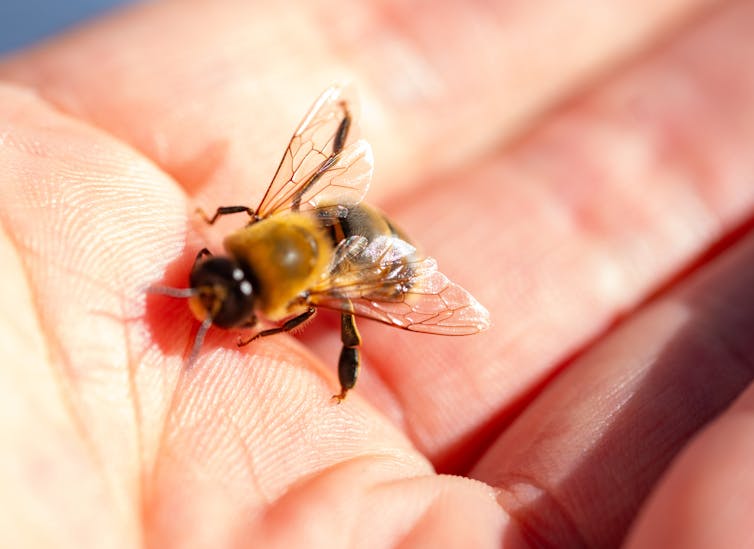
A tiny foe threatens Australian beekeepers’ livelihood, our food supply and the national economy. First detected in New South Wales in 2022, the Varroa mite is now established in Australia.
The parasitic mite, which feeds on honey bees and transmits bee viruses, has since spread across New South Wales.
It is expected to kill virtually all unmanaged honey bees living in the bush (also known as “feral” honey bees), which provide ecosystem-wide pollination. Honey bees managed by beekeepers will survive only with constant and costly use of pesticides.
As the last holdout against Varroa, Australia has a key advantage – we can still take action that was impossible elsewhere. We know Varroa-resistant bees would be the silver bullet. Despite decades of research, no fully resistant strains exist, largely because the genetics of Varroa resistance are complex and remain poorly understood.
A recently released national management plan places a heavy focus on beekeeper education, aiming to transition the industry to self-management in two years. This leaves research gaps that need to be urgently filled – and we can all work together to help tackle these.
Unlocking The Genetic Key To Resistance
Without human intervention, Varroa kills around 95% of the honey bees it infects, but the survivors can evolve resistance. However, losing almost all bees would decimate Australia’s agriculture.
Our feral honey bees will have no choice but to evolve resistance, as they have in other countries. However, feral honey bees are not suited for beekeeping as they are too aggressive, don’t stay with the hive and don’t produce enough honey.
In principle, we could breed for a combination of feral resistance and domestic docility. But figuring out the genetics of how feral bees resist Varroa has been a challenge. As most bees exposed to the parasite will die, the survivors will be genetically different.
Some of these differences will be due to natural selection, but most will be due to chance. Identifying the genes responsible for resistance in this scenario is difficult. The best way to find them is to measure genetic changes before and after Varroa infestation. But to do that, we need bee populations largely unaffected by Varroa.
This is where our unique Australian opportunity comes in. We have a small and vanishing window to collect bees before the inevitable rapid spread of the mites, and the mass die-offs, occur.
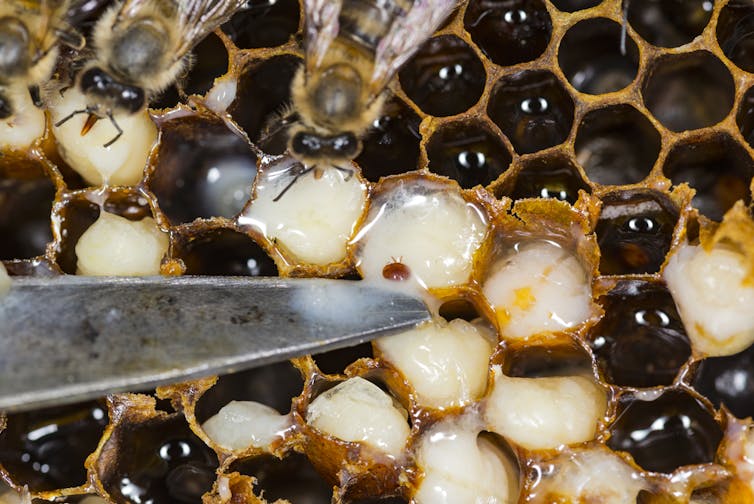
We Are Collecting Information… And Bees
My lab at the Australian National University’s Research School of Biology has started collecting data on feral bee populations around New South Wales to identify pre-Varroa genetic diversity.
We will also monitor changes in bee population size and the spread of viruses and mites.
The most efficient way to collect bees is to go to a local clearing, such as a sports oval surrounded by forest. Unbeknownst to the cricket players, honey bee males (that is, drones) congregate at these sites by the thousands on sunny afternoons looking for mates.
You can lure them with some queen pheromone suspended from a balloon, and sweep them up with a butterfly net. Bee drones have no stinger and only come out for a couple of hours when the weather is fantastic, making collecting them literally a walk in the park, suitable for nature enthusiasts of all ages.
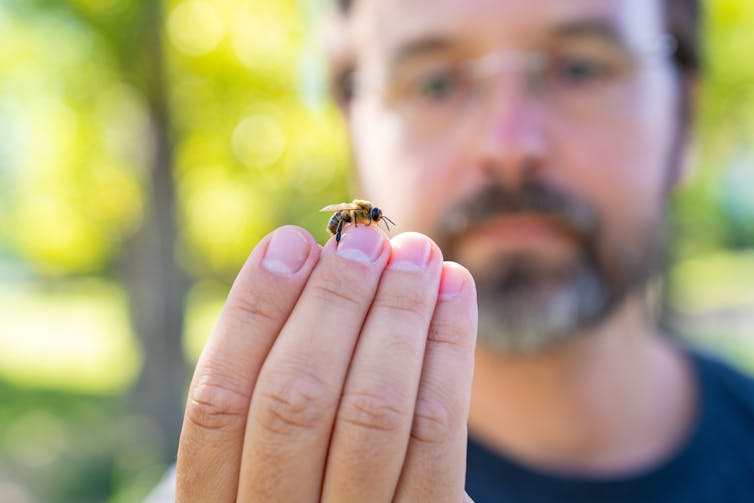
Anyone Can Help
You can help this effort by collecting some drones in your local area – this would save us time and carbon emissions from driving all over the country. We will provide pheromone lures, instructions, and materials for sending the bees back via mail. By sacrificing a few drones for the research now, we might save millions of bees in the future.
If you can spare just a couple of summer afternoons, this would give two timepoints at your location, and we can monitor any changes as the Varroa infestation progresses. More information can be found on our website.
Apart from our project, there are also other urgent research questions. For example, how will native forests respond to the loss of their dominant pollinators? Will honey bee viruses spread into other insects?
Work on these and other projects also requires pre-Varroa data. Unfortunately, Varroa falls through our research infrastructure net. Most of Australia’s agricultural funding is industry-led, however, the beekeeping industry is small and lacks the resources to tackle Varroa research while also reeling from its impacts.
Other industries that rely on honey bees for pollination, including most fruit, nut and berry growers, have diverse research needs and are one step removed from the actual problem.
Together, we can take action to save Australia’s honey bees and assure security for our key pollinators.![]()
Alexander Mikheyev, Professor, ANU Bee lab, Australian National University
This article is republished from The Conversation under a Creative Commons license. Read the original article.
Secrets in the canopy: scientists discover 8 striking new bee species in the Pacific
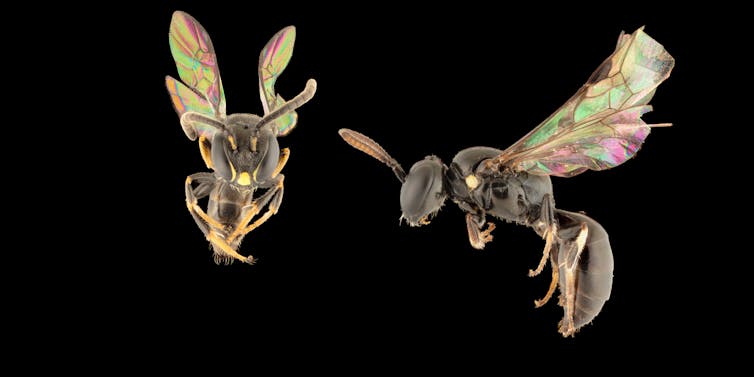
After a decade searching for new species of bees in forests of the Pacific Islands, all we had to do was look up.
We soon found eight new species of masked bees in the forest canopy: six in Fiji, one in French Polynesia and another in Micronesia. Now we expect to find many more.
Forest-dwelling bees evolved for thousands of years alongside native plants, and play unique and important roles in nature. Studying these species can help us better understand bee evolution, diversity and conservation.
Almost 21,000 bee species are known to science. Many more remain undiscovered. But it’s a race against time, as the twin challenges of habitat loss and climate change threaten bee survival. We need to identify and protect bee species before they disappear forever.
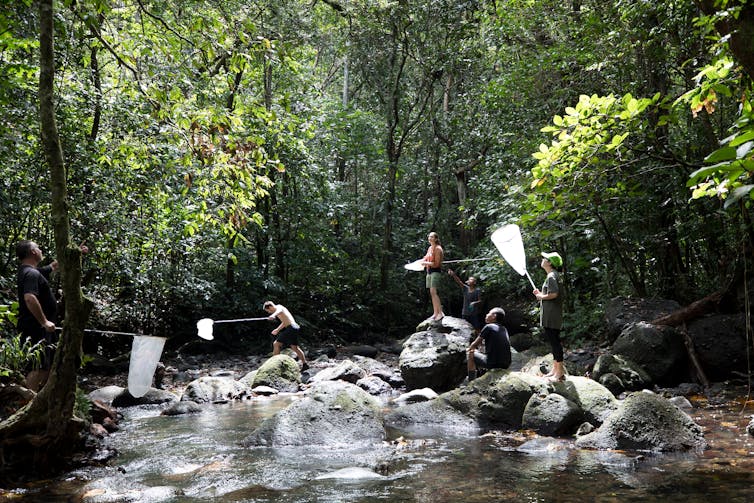
Introducing The New Masked Bees
Pollinators abound in forests. But scientific research has tended to focus on bees living closer to the ground.
We believe this sampling bias is replicated across much of the world. For example, another related Oceanic masked bee, Pharohylaeus lactiferus (a cloaked bee), was recently found in the canopy after 100 years in hiding.
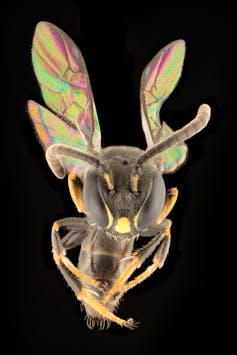
Our first decade of bee sampling in Fiji turned up only one bee from the genus Hylaeus. This bee probably belonged in the canopy so we were very lucky to catch it near the ground. Targeted attempts over the next few years, using our standard short insect nets, failed to find any more.
But this changed when we turned our attention to searching the forest canopy.
Sampling in the canopy is physically challenging. Strength and skill are required to sweep a long, heavy net and pole through the treetops. It’s quite a workout. We limit our efforts to the edges of forests, where branches won’t tangle the whole contraption.
By lifting our gaze in this way, we discovered eight new bee species, all in the genus Hylaeus. They are mostly black with stunning yellow or white highlights, especially on their faces – hence the name, masked bees.
They appear to rely exclusively on the forest canopy. This behaviour is striking and has rarely been identified in bees before (perhaps because few scientists have been looking for bees up there).
Because the new species live in forests and native tree tops, they’re likely to be vulnerable to land clearing, cyclones and climate change.
More work is needed to uncover the secrets hidden in these dense tropical treetops. It may require engineering solutions such as canopy cranes and drones, as well as skilful tree-climbing using ropes, pulleys and harnesses.
Michener’s Missing Links
The journey of bees across the Pacific region is a tale of great dispersals and isolation.
Almost 60 years ago, world-renowned bee expert Charles Michener described what was probably the most isolated masked bee around, Hylaeus tuamotuensis.
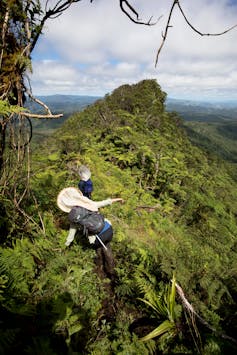
The specimen was found in French Polynesia. At the time, Michener said that was “entirely unexpected”, because the nearest relatives were, as the bee flies, 4,000km north in Hawaii, 5,000km southwest in New Zealand, and 6,000km west in Australia.
So how did it get there and where did it come from?
Our research helps to answer these questions. We found eight new Hylaeus species including one from French Polynesia. Using genetic analysis and other methods, we found strong links between these species and H. tuamotuensis.
So Michener’s bee was probably an ancient immigrant from Fiji, 3,000km away. A journey of that magnitude is no mean feat for bees smaller than a grain of rice.
Of course, there are more than 1,700 islands in the Pacific, which can serve as stepping stones for bees on their long journeys.
We don’t yet know how many new Hylaeus species might exist in the South Pacific, or the routes they took to get to their island homes. But we suspect there are many more to be found.
Our Pacific Emissaries
The early origins of Fijian bees – both ground-dwelling Homalictus and forest-loving Hylaeus – can be traced to the ancient past when Australia and New Guinea were part of one land mass, known as Sahul. The ancestors of both groups then undertook epic oceanic journeys to travel from Sahul to the furthest reaches of the Pacific, where they diversified. But the Hylaeus travelled furthest, by thousands of kilometres.
These little emissaries have similarly brought together researchers across the region. We resolved difficulties sampling and gathering knowledge by working with people across the Pacific, including Fiji, French Polynesia, and Hawaii. It shows what can be accomplished with international collaboration.
Together we are making great strides towards understanding our shared bee biodiversity. Such collaborations are our best chance of discovering and conserving species while we can.
We would like to thank Ben Parslow and Karl Magnacca for their contribution to this article. We would further like to thank our collaborators and their home institutions, the Hawiian Department of Land and Natural Resources, Muséum national d’Histoire naturelle, University of the South Pacific, the South Australian Museum and Adelaide University.![]()
James B. Dorey, Lecturer in Biological Sciences, University of Wollongong; Amy-Marie Gilpin, Lecturer in Invertebrate Ecology, Western Sydney University, and Olivia Davies, , Flinders University
This article is republished from The Conversation under a Creative Commons license. Read the original article.
From crickets in Melbourne to grasshoppers in Cairns, here’s what triggers an insect outbreak
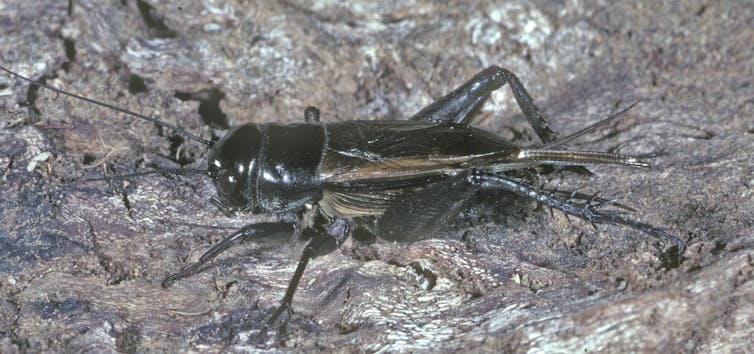
In recent weeks, Melburnians have reported thousands of crickets showing up in large numbers after dark, flying into homes and shops and taking up residence.
The insect in question is the widespread, native black field cricket (Teleogryllus commodus).
Some media reports have described the swarms as a “plague”. This is not quite accurate, because scientists in Australia reserve that term for serious pests such as mice and some locusts. It’s best to call the present phenomenon an “outbreak”.
So what triggers these outbreaks, and how can we best live alongside insects as they go through these cycles of boom and bust?
Why The Crickets Moved To Melbourne
Black field crickets are not usually pests – the insects belong here and their song is that of the Australian bush. Crickets are a valuable food source for birds, reptiles and mammals.
Males sing every night by rubbing their wings together. They can easily be distinguished from females by the absence of the needle-like organ called an ovipositor that the females use for laying eggs.
Black field crickets are notorious for breeding in large numbers then flying to new sites at night.
Recent unseasonal and persistent rain fostered the growth of plants and insects, supplying ample food for the crickets. This is the most likely trigger for the extraordinarily large numbers we’re seeing.
The crickets may have flown in on persistent winds, or maybe the city lights attracted them. Nocturnal insects use light to work out which way is up, so they find artificial light confusing.
Cooler weather will help keep crickets in their natural habitat, where they belong. The hot weather would have stimulated their movement and spurred them on, because crickets are more active when it’s warm.
Tips For Dealing With The Crickets
Crickets are naturally attracted to light sources during the night. This can lead them to enter indoor spaces – often through small openings such as cracks around doors, or through windows or vents.
Keeping crickets out of your home can be challenging. Start by turning off outdoor lights and closing curtains and blinds. Seal entry points and install insect screens.
Changing outdoor lights from bright white to yellow will also help to deter insects.
If crickets do enter your home, they can easily be caught in a jar and taken outside.
A lack of humidity means crickets don’t survive indoors for more than a few days. Females require soil to lay their eggs, which means they won’t breed inside the home.
As an aside, if you fancy a cricket as a pet, they can be kept alive for a few weeks in a takeaway plastic container with some air holes. Captive crickets should be provided with a source of water such as a wet cotton ball in a jar lid. They can be fed muesli and a bit of apple, which provides another source of moisture. The water and the moist food raises the humidity to a suitable level.
Other Insects Swarm, Too
Rain often triggers insect outbreaks.
In Far North Queensland, where I live, we had almost 2 metres of rain in less than a week during Cyclone Jasper. And the rain persists. This has caused some insects that normally occur in small numbers to reproduce abnormally.
Cairns is a favoured destination for multiple grasshopper species that thrive in warm, wet conditions. They have been known to trouble Cairns Airport, but authorities there now have a good Wildlife Hazard Management Plan in place.
In Canberra, huge numbers of bogong moths have been known to infiltrate Parliament House for few weeks en route to the Australian Alps, where they spend the summer. The moths reproduce during wet years and the following season, they migrate in great numbers.
The widespread little Upolu meadow katydid (Conocephalus upoluensis) also breeds in large numbers after good rain. Adults fly to lights, often in their hundreds, and can be seen at outback petrol stations and cafes. As with most of these outbreaks, their presence is shortlived.
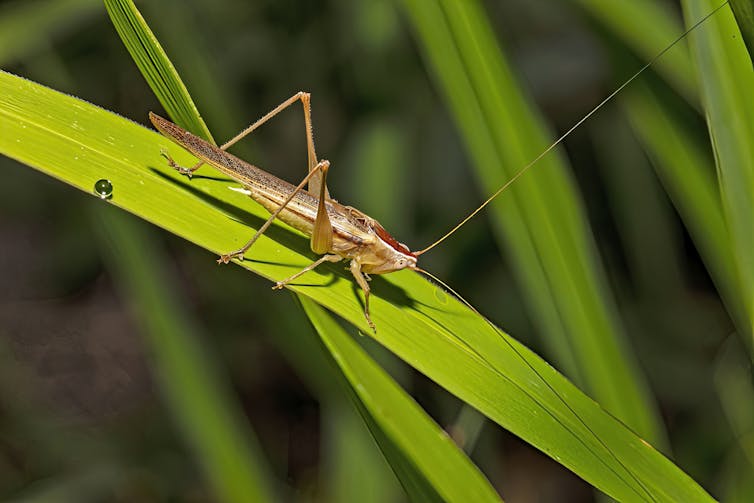
Looking Ahead
Under climate change, plagues of some insects such as locusts are expected to worsen as a result of increased heat and extreme rains.
However, climate change is also expected to lead to declines in some insect species. This compounds other harms caused by humans such as habitat loss and pollution.
Those pressures mean insect populations may be moving into new, populated areas in search of more favourable conditions.
All that said, we can expect insect outbreaks to happen again. My advice for those in Melbourne is just to wait until the crickets move on – and in the meantime, enjoy the spectacle of nature.![]()
David Rentz, Adjunct Professorial Research Fellow, School of Marine and Tropical Biology, James Cook University
This article is republished from The Conversation under a Creative Commons license. Read the original article.
On fisheries, Australia must be prepared for New Zealand as opponent rather than ally
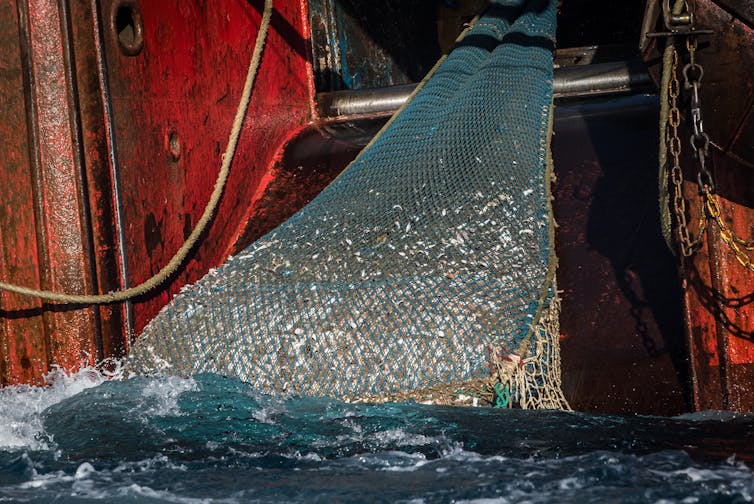
On February 1, senior Australian and New Zealand ministers signed a Joint Statement of Cooperation, acknowledging the long history of collaboration between the two nations.
The same week, New Zealand rejected an Australian proposal on sustainable fishing at the annual fisheries meeting of nations that fish in the high seas of the South Pacific. The move has driven a wedge between these traditional allies.
At stake was an agreement by those nations to protect 70% of special and vulnerable marine ecosystems, such as ancient corals, from destructive fishing practices like bottom-trawling.
Until December 2023, NZ was jointly leading the work to implement this agreement with Australia. But New Zealand’s new government, a coalition of conservative parties, rejected the proposed restrictions, citing concerns about jobs and development.
This sudden about-face raises many questions for Australia, and for progress on sustainable fishing more generally. On fishing, Australia must now be prepared to consider New Zealand an opponent rather than ally.
Sustainable Fishing Alliance No More?
In 2009, Australia, New Zealand and Chile led successful negotiations for a convention governing sustainable fishing in the South Pacific high seas beyond a nation’s marine exclusive economic zones, meaning more than 370km off the coast. The goal was to make sure fish stocks were not fished out and to protect marine ecosystems. (Tuna are not included, as they are dealt with under a separate convention.)
Since then, New Zealand and Australia have led much of the development of regulations governing the sustainable use of deepwater fish species and the conservation of vulnerable marine ecosystems in the South Pacific region. Their work led to the first measures governing deepwater fisheries, science-based catch limits for deepwater species, and a joint assessment of seafloor fishing methods such as trawling.
But the idea of banning or restricting trawling was controversial. Bottom-trawling, in which boats deploy giant nets that scrape along the ocean floor, is very effective – so much so that it can devastate everything in its path.
In 2015, the United Nations’ first worldwide ocean assessment found bottom-trawling causes widespread, long-term destruction to deep-sea environments wherever it is done. Scientists have compared it to clear-felling a forest. The practice is banned in the Mediterranean and in shallow waters of the Southern Ocean, and is increasingly restricted by many nations, including Australia.
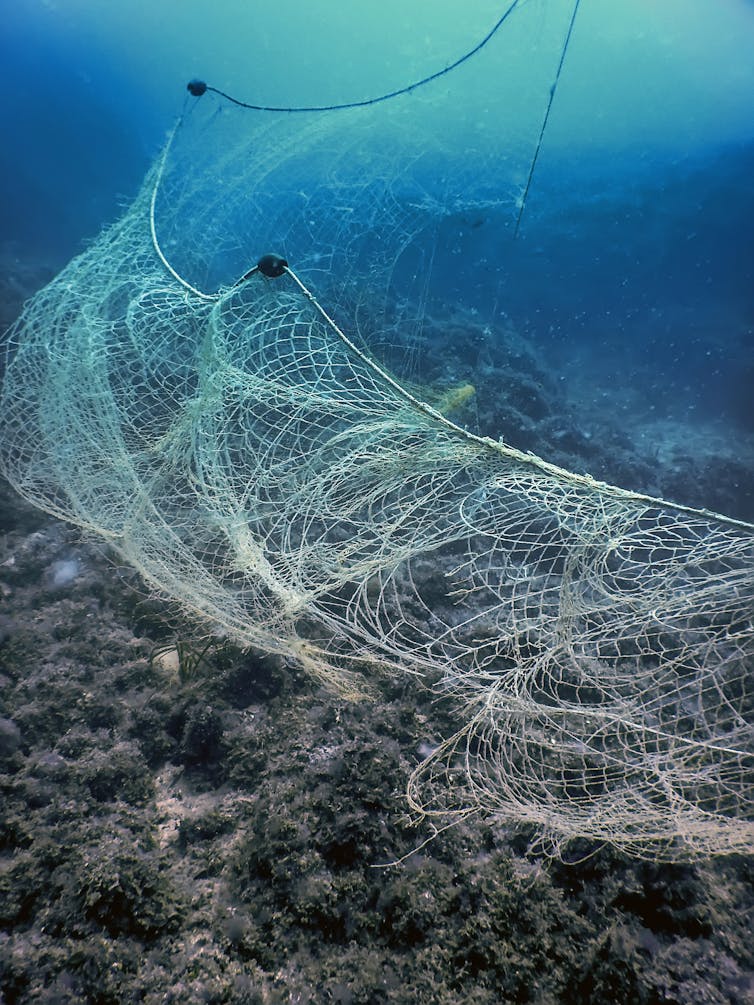
The UN has repeatedly called for better protection, as well as specific actions to make it a reality. And many nations and organisations are heeding that call.
The science is clear. But the politics is not. International waters in the South Pacific are one of the few areas where deepwater bottom-trawling is still permitted on seamounts – underwater mountains rich in life – and similar features.
Last year, South Pacific nations agreed to protect a minimum of 70% of marine ecosystems vulnerable to damage from fishing. This agreement came from research done largely by New Zealand.
Other countries pushed for a higher level of protection, but New Zealand insisted on 70% to ensure its fishing could continue. These kinds of compromises are common at meetings like this.
The meeting in February was meant to agree on how to make the consensus decision a reality. But it was not to be. Now that NZ has withdrawn support, the original decision remains but without the mechanisms to make it happen. Bottom-trawling will likely continue in the South Pacific.
Why? The new NZ fisheries minister, Shane Jones, has publicly stated he was “keen to ensure that, number one, we’re looking after our own people, looking after jobs and opportunities for economic development to benefit New Zealand.”
While high seas fishing is an important industry for New Zealand, their bottom trawling activity in the South Pacific is small. One vessel fished the bottom in 2021-2022, catching only 20 tonnes of orange roughy. No bottom trawling has happened since then.
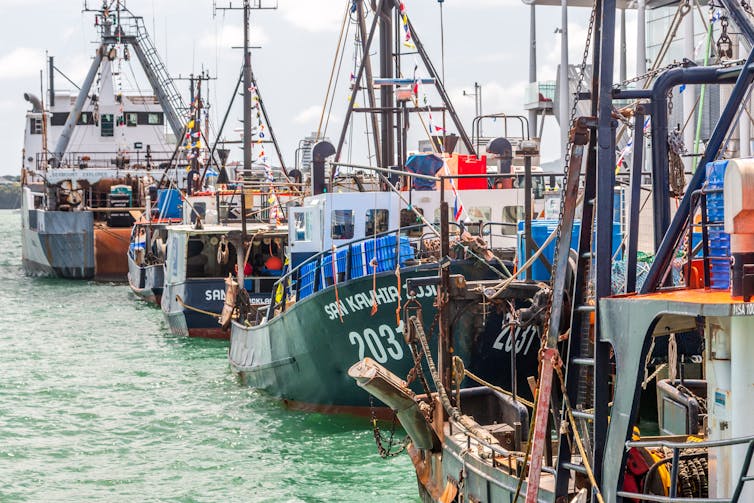
Since coming to power, New Zealand’s new government has questioned 2030 renewable energy targets, promised to “address climate change hysteria”, declared mining more important than nature protection – and supported bottom-trawling.
Many of these changes will be of considerable concern to Australia. For the past 15 years, Australia has taken a prominent leadership role – alongside New Zealand – in sustainable ocean management.
With Pacific island nations, Australia and NZ worked long and hard to progress the High Seas Treaty – a breakthrough opening new legal avenues to protect up to 30% of the unregulated high seas where illegal and exploitative fishing practices are common.
The NZ government’s willingness to jettison long collaborative work, abandon agreed commitments and risk existing agreements bodes poorly for cooperation across the Tasman. Australia must sadly now treat New Zealand as an opponent when it comes to protecting the seas and managing fisheries for the long term. ![]()
Lynda Goldsworthy, Research Associate, University of Tasmania
This article is republished from The Conversation under a Creative Commons license. Read the original article.
Is there an alternative to 10,000 kilometres of new transmission lines? Yes – but you may not like it
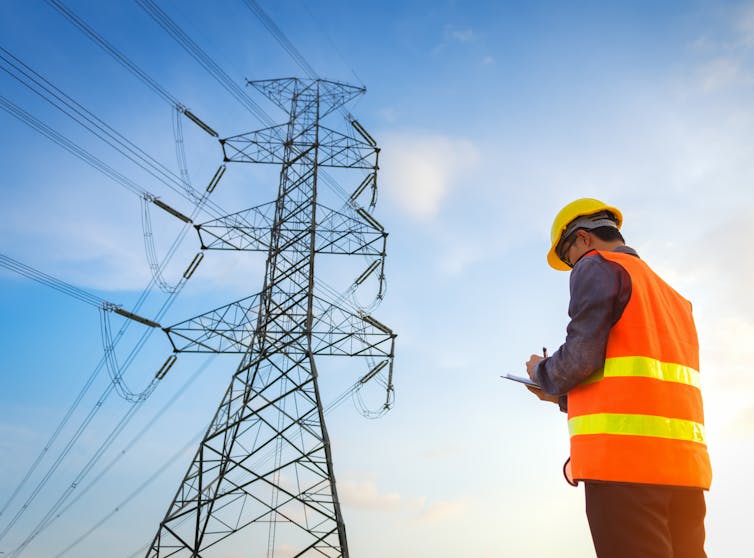
Building transmission lines is often controversial. Farmers who agree to host new lines on their property may be paid, while other community members protest against the visual intrusion. Pushback against new lines has slowed development and forced the government to promise more consultation.
It’s not a new problem. Communities questioned the routes of earlier transmission lines built during the 1950s-70s to link new coal and hydroelectric plants to the cities.
But this time, the transition has to be done at speed. Shifting from the old coal grid to a green grid requires new transmission lines. In its future system planning, Australia’s energy market operator sees the need for 10,000 kilometres of new transmission lines in the five states (and the Australian Capital Territory) which make up the National Energy Market.
Do we need all of these new transmission lines? Or will the “staggering growth” of solar on houses and warehouses coupled with cheaper energy storage mean some new transmission lines are redundant?
The answer depends on how we think of electricity. Is it an essential service that must be reliable more than 99.9% of the time? If so, yes, we need these new lines. But if we think of it as a regular service, we would accept a less reliable (99%) service in exchange for avoiding some new transmission lines. This would be a fundamental change in how we think of power.
Why Do We Need These New Transmission Lines?
The old grid was built around connecting a batch of fossil fuel plants via transmission lines to consumers in the towns and cities. To build this grid – one of the world’s largest by distance covered – required 40,000 km of transmission lines.
The new grid is based around gathering energy from distributed renewables from many parts of the country. The market operator foresees a nine-fold increase in the total capacity of large scale solar and wind plants, which need transmission lines.
That’s why the market operator lays out integrated systems plans every two years. The goal is to give energy users the best value by designing the lowest-cost way to secure reliable energy able to meet any emissions goals set by policymakers.
To avoid having to build transmission lines everywhere, policymakers have opted to group renewables in “renewable energy zones” with good wind or solar resources, and build transmission lines just to the zones.
According to the market operator, the major reasons why we need such a strong transmission network are:
– to harness flows of variable renewable power from different regions to make sure the system is reliable
– to cope with outages or shortfalls in supply. If a cloud band cuts solar farm output in one state, the grid can draw on solar from another state.
– boosting regional economies with advanced manufacturing and production of emerging green products and technologies.
So while 10,000 km sounds like a lot, it’s been kept to the minimum.

What If Rooftop Solar Takes Over?
Even so, some energy insiders question whether we need all these new transmission lines.
What if the growth of behind-the-meter energy resources such as rooftop solar, grid-connected home batteries and electric cars begin to cut demand from the grid?
About one in three households now have solar on their rooftops – the highest solar take up per capita in the world. And as more electric cars arrive in driveways, we will start using their large batteries as a backup power supply for our homes – or to sell the power on the grid. Could it be that cities could make their own power, as Nationals leader David Littleproud has called for?
Planners at Australia’s market operator do anticipate ever-greater levels of rooftop solar, batteries and electric vehicles. Their latest forecasts see these resources with enough capacity to power 30% of the grid by the end of the decade and 45% by mid-century.
These are substantial contributions, but not enough to power a nation. As we move to electrify everything, we will need to roughly double how much electricity we produce. Electricity is a much more efficient way to power transport, for instance, but switching from petrol to electric vehicles will mean more grid demand.
Having said that, we cannot be certain. When we model ways of giving up fossil fuels and ending emissions, there is always major uncertainty over what shape the future will take. Some technologies may splutter while others surge ahead.

We Could Trade New Transmission Lines For A Less Reliable Supply
At present, electricity is considered an essential service under national electricity laws. That means there has to be enough power 99.998% of the time. To meet that threshold, outages have to be kept to ten minutes in a year.
Making electricity an essential service is a choice. We could choose differently. If we decided electricity should be a regular service, where 99% reliability is OK (translating to outages of up to 87 hours a year), we would be able to get away with fewer new transmission lines.
That’s because wealthier households would likely respond to more outages by investing more in big solar arrays and batteries. Some would become energy self-sufficient and cut ties with the grid.
In this scenario, self-generation by the rich would mean a reduced demand on the grid, and we might be able to get away with building fewer new transmission lines.
But we should be careful here. If we took this approach, we would reshape society. The rich would be insulated while poorer households deal with the pain of power outages. The idea of the grid as a public good would begin to disappear. ![]()
Magnus Söderberg, Professor & Director, Centre for Applied Energy Economics and Policy Research, Griffith University and Phillip Wild, Senior Research Fellow, CAEEPR, Griffith University
This article is republished from The Conversation under a Creative Commons license. Read the original article.
When homes already hit 40°C inside, it’s better to draw on residents’ local know-how than plan for climate change from above
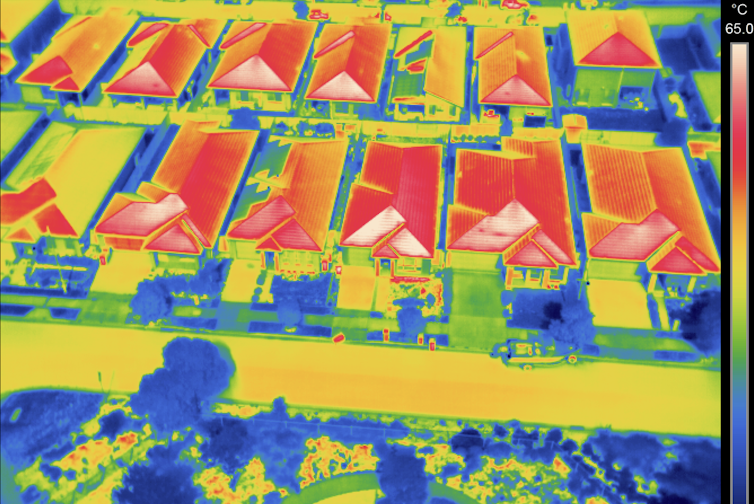
Weather extremes driven by climate change hit low-income communities harder. The reasons include poor housing and lack of access to safe and comfortable public spaces. This makes “climate readiness” a pressing issue for governments, city planners and emergency services in fast-growing areas such as Western Sydney.
We work with culturally diverse residents and social housing providers in Western Sydney to explore how they’re adapting to increasing heat. Residents hosted heat data loggers inside and outside their homes.
Last summer was relatively mild, but we recorded temperatures as high as 40°C inside some homes. Recalling a heatwave in 2019, one resident said: “The clay had cracks in the grass that you could almost twist your ankles.”
We correlated these data with what residents and social housing providers told us about managing the heat and what is needed to do this better. Different cultural groups used different strategies. Through the project, residents shared a wealth of collective knowledge about what they can do to adapt to the extremes of a changing climate.
Air Conditioning Has Limitations
Official responses to climate extremes typically rely on a retreat indoors. These “last resort” shelters depend in most cases on a reliable electricity supply, which can be cut during heatwaves.
There have been efforts, but not in Australia, to establish a “passive survivability” building code. The aim is to ensure homes remain tolerably cool during a heatwave (or warm during a cold snap) even if power is cut for a number of days.
We recognise air conditioning is vital for vulnerable populations, including older people and those with health conditions, but we do not want to give up on going outside!
Outdoors, approaches such as pop-up cooling hubs for the homeless are compassionate. While important, such approaches don’t get beyond “coping”.
There’s also a risk of perpetuating a deficit narrative that sees the city’s poorest as lacking capacity to act on their circumstances. Our strengths-based action research approach looks for alternative solutions that draw on the collective knowledge and practices already found in communities.
How Was The Research Done?
Our project, Living with Urban Heat: Becoming Climate Ready in Social Housing, is part of a broader research program, Cooling the Commons. Its focus is the role of shared spaces and knowledge in designing climate-resilient cities.
We use participatory design methods. Adaptation strategies are developed by working with people who are already attuned to their place and community.
In a first step, to get a better grasp on the micro-climates at each site, residents hosted data loggers in their homes. The data show that the location, degree of urban density and type of housing influence residents’ experience of heat.
In Windsor, for example, the extremes are felt inside the home. Last summer, loggers in Windsor and Richmond recorded 69 days above 30°C. On average, temperatures inside were 6°C warmer than outside and hit 40°C four occasions.
Further east in Riverwood and Parramatta recorded lower temperatures. However, for project researcher Sebastian Pfautsch, these data also highlighted the urban heat island effect. In Riverwood, the average day and night temperatures were 25.8°C and 25.4°C respectively, as brick surfaces hold the heat.
We correlated these data with what residents and social housing providers told us about how they manage heat and comfort in their different places.

So How Do Residents Manage The Heat?
At bilingual design workshops across the locations, themes from the interviews between groups of residents were shared.
Residents who said “I retreat” felt trapped rather than safe in their poorly adapted homes.
“Taking comfort” meant using ice, water spray, sheets and towels to cool spaces and bodies. Chinese residents used foods such as rice porridge congee to cool down. Residents also took comfort from housing providers and neighbours checking on their wellbeing on hot days.
Residents with access to a car “chased the air”. This meant moving between air-conditioned spaces: friends’ homes, coffee shops and supermarkets.
Residents without cars used cool spots, such as public libraries, that they could get to by public transport. Others whose families have lived in the area for decades used their local knowledge to chase the “Dee Why Doctor” and other local breezes, as well as sitting in the river.
Residents often return, though, to a home that has baked in the heat all day.
They had ingenious ways to get air moving with windows, doors and fans. “Making the air” was an important pattern across the groups.
Air movement was as important for bodily comfort as a cooler temperature, particularly for people who found it hard to breathe in the heat. As one participant said: “It’s stuffy in the bedroom. It’s really hard sometimes […] I feel I can’t open the window because of the smells and noise.”
Residents also created “rules” to manage the heat in their homes. These ranged from opening and closing doors and windows at certain times, to keeping lights off, to avoiding baking, to rationing air conditioning.
The groups benefited from sharing these themes. For example, the Chinese community, most of whom did not drive, had never thought of “chasing the air”. On the other hand, using congee to feel cooler was news for others.

Collective Adaptation Works Best
In each community, sharing these approaches prompted a broader conversation about more collective forms of adaptation, including shared spaces and practices in the built and natural environments.
This research is raising questions. There is a tension, for example, between the enclosure that air conditioning requires and the movement of fresh air many residents see as healthy. What implications might this have for a cooling hubs blueprint and the future of social housing, particularly where a need for security often means blocked openings and locked doors?
Climate-readiness does not mean reinforcing inadequate technical solutions that shut us in, or barely remedial solutions. These reduce us to what philosopher Georgio Agamben termed a “bare life”, a condition that precludes the possibility of a good one. That need not be so.
Our research is trialling adaptive practices, drawing on local knowledge of cool spaces (both natural and built), and sharing these practices across cultures. It shows we can reimagine climate-readiness as part of a flourishing community.
The authors would like to acknowledge the contribution of all co-researchers in the Climate-Ready in Social Housing team.![]()
Abby Mellick Lopes, Associate Professor, Design Studies, Faculty of Design, Architecture and Building, University of Technology Sydney; Cameron Tonkinwise, Professor, School of Design, University of Technology Sydney, and Stephen Healy, Associate Professor, Human Geography and Urban Studies School of Social Sciences/ Institute for Culture and Society, Western Sydney University
This article is republished from The Conversation under a Creative Commons license. Read the original article.
We can’t say yet if grid-breaking thunderstorms are getting worse – but we shouldn’t wait to find out

On February 13, six transmission line towers in Victoria were destroyed by extreme wind gusts from thunderstorms, leading to forced electricity outages affecting tens of thousands of people. The intense winds knocked trees onto local power lines or toppled the poles, which caused about 500,000 people to lose power. Some people went without electricity for more than a week. A month earlier, severe thunderstorms and wind took out five transmission towers in Western Australia and caused widespread outages.
Intense thunderstorm events have made news in recent years, including the January 2020 storms that caused the collapse of six transmission towers in Victoria. Perhaps the most far-reaching storms were those in 2016, when all of South Australia lost power for several hours after extreme winds damaged many transmission towers.
So are these thunderstorms with extreme winds getting worse as the climate changes? It’s possible, but we can’t yet say for sure. That’s partly because thunderstorms involve small-scale processes harder to study than bigger weather systems.
How Can Wind Topple A Giant Transmission Tower?
Many people saw the photos of transmission towers bent like thin wire and wondered how it was possible.
The reason is physics. When wind hits a structure, the force it applies is roughly proportional to the wind speed squared. When wind gusts are stronger than about 100 kilometres per hour, even just for a few seconds, there can be a risk of damage to infrastructure.
Direction matters too. Wind has greater force when it blows more directly towards a surface. If strong winds blow from an unusual direction, risk of damage can also increase. Old trees, for instance, may be more firmly braced against prevailing winds – but if storm winds blow from another direction, they might topple onto power lines.
On February 13, a strong cold front was approaching Victoria from the southeast, bringing thunderstorms with extreme wind gusts over 120 km/h after a period of extreme heat. Thunderstorms can create extremely strong and localised gusty winds, sometimes called “microbursts” due to cold heavy air falling rapidly out of the clouds. These winds were enough to bend towers and topple trees and poles.
Are These Thunderstorm Winds Getting Worse?
Scientific evidence clearly shows climate change is steadily worsening hazards such as extreme heatwaves and bushfires, which can damage our grid and energy systems.
On balance, evidence suggests tropical cyclones may become less frequent but more severe on average. All but one of Australia’s tropical cyclones this summer have been severe (Category 3 or higher).
But we aren’t yet certain what climate change does to extreme winds from thunderstorms.
This is because high-quality observations of past thunderstorms are relatively rare, with large variability in how often storms occur and their severity, and because climate models have difficulties simulating the small-scale processes which give rise to thunderstorms.
The evidence we do have suggests continued climate change may potentially increase the risk of extreme winds from thunderstorms. This is partly due to more moist and unstable air, which are essential for thunderstorms to form. We think these conditions could occur more often with climate change, in part because warmer air can hold more moisture.
We also know the severity of thunderstorms can be affected by vertical wind shear, which is the way the wind changes with height. To date, we’re less certain about how wind shear will change in the future.
Recent research by coauthor Andrew Brown and the lead author suggests climate change is likely causing more favourable conditions for thunderstorms with damaging winds, particularly in inland regions of Australia. But the methods used for these predictions are new, meaning more research needs to be done for further insight on what climate change will do to extreme winds.
We Shouldn’t Wait To Find Out
Modelling extreme wind gusts is still in its infancy. But given so much of our electricity grid is exposed to extreme winds, it’s important we try to address this gap in our knowledge.
It’s safe to say we should treat these storms as a warning. We should factor the risks from extreme winds into how we design our energy systems. It’s especially important as we build a grid able to handle clean energy that we anticipate these kinds of risks from extreme weather.
Hardening the grid by burying powerlines and removing vegetation isn’t the only option. We could build a smarter grid, with distributed renewables and energy storage including large as well as relatively smaller (e.g., community-level or household-level) batteries, giving the grid greater resilience including against extreme weather events.
In the wake of South Australia’s devastating 2016 grid outage, authorities moved to boost grid resilience in this way, building big batteries, more renewables and new interconnectors, while Australia’s energy market operator AEMO changed how it dealt with windfarms if grid issues occur.
Power grids are the largest machines in the world. As we move to a clean energy grid, we face complex challenges – not just in building it, but in protecting it against extreme weather.
We would be well served if we work to better understand the risks of compound events, such as combinations of extreme winds, fires or floods hitting a region around the same time.
We also need accurate predictions of risks shortly before extreme winds or other disasters strike, as well as effective long-term planning for the risks likely to increase due to climate change or during different climate cycles such as El Niño and La Niña.
If we get this response wrong, our energy bills will rise too much and, worse, we still might not have a more resilient system. Since our energy networks are regulated by a complex set of government rules, reform is not just something for industry to address. It must ultimately be led by government – and guided by evidence.![]()
Andrew Dowdy, Principal Research Scientist, The University of Melbourne; Andrew Brown, Ph.D. student, The University of Melbourne; Andrew King, Senior Lecturer in Climate Science, The University of Melbourne; Claire Vincent, Senior Lecturer in Atmospheric Science, The University of Melbourne; Michael Brear, Director, Melbourne Energy Institute, The University of Melbourne; Pierluigi Mancarella, Chair Professor of Electrical Power Systems, The University of Melbourne, and Todd Lane, Professor, School of Geography, Earth and Atmospheric Sciences, The University of Melbourne, The University of Melbourne
This article is republished from The Conversation under a Creative Commons license. Read the original article.
Antarctica provides at least $276 billion a year in economic benefits to the world, new research finds
Rachel Baird, University of Tasmania and Natalie Stoeckl, University of TasmaniaAll humanity benefits from Antarctica and the Southern Ocean that surrounds it. To some, these benefits may seem priceless. But in our market-driven world, calculating the economic value of the environment can be a useful tool in garnering support for its protection.
That was the intention of our new research. We crunched the numbers on the value of services Antarctica and the Southern Ocean provide in terms of fisheries, tourism and various natural processes that support Earth’s functioning.
And the result? We calculate the economic value at a whopping US$180 billion (A$276 billion) each year. We hope our findings will help prioritise conservation actions in Antarctica and galvanise international support to protect the region from the ravages of climate change.
Benefits Seen, And Unseen
The many benefits nature provides to humans are known as “ecosystem services”.
Some services provided by Antarctica and the Southern Ocean are invisible to most people. For example, the Southern Ocean absorbs carbon dioxide (CO₂) from the atmosphere, and ice in the region reflects heat. These processes help regulate Earth’s climate
The Southern Ocean also helps transport water around the globe, which helps distribute heat, fresh water, carbon and nutrients. These are known as “regulating” services.
We can think about the value of these services in terms of the cost that would accrue if it was not provided. For example, the Antarctic ice sheet contains 30 million cubic kilometres of ice. If that ice melted as a result of global warming, the effects on coastal communities around the world would be catastrophic.
Other benefits provided by the Antarctic region are more visible. For example, humans rely on toothfish and krill for food, pharmaceuticals and dietary supplements. A warmer and more acidic Southern Ocean would affect fish stocks – both in the region and elsewhere – and some species may become extinct.
The Antarctic region also provides cultural services such as hosting vital scientific research. And in recent years, Antarctica has experienced a surge in tourist numbers.
So how much are these services actually worth to humanity? Our research examined that question.
Crunching The Numbers
We used various methods to estimate the value of each service. Some, such as the provision of food, can be easily calculated by looking at what the market is willing to pay. Others, such as the avoidance of harm due to CO₂ absorption, are more complicated to ascribe value to.
Let’s start with tourism. Visitor numbers to Antarctica – mostly by ship – have increased markedly in recent decades, from about 8,000 a year in 1993–1994 to 105,000 in 2022–2023. We estimate the annual value of the Antarctic tourism industry at about US$820 million.
And what about the benefits of fisheries? Considering the tonnes of toothfish and krill caught in the region, we estimate the value at about US$370 million per year.
Finally, we estimated the economic value of “regulating services” such as carbon storage, sea level regulation and light reflection. We did this by multiplying estimates of the value of carbon stored in the Southern Ocean by estimates of the social cost of carbon.
This was a complex calculation, which we explain in greater detail in our paper. Overall, we estimate the value of the region’s regulating services at about US$179.3 billion a year.
All up, this brings the total value of Antarctica and the Southern Ocean’s ecosystem services to about US$180 billion a year. This is a conservative estimate which excludes some ecosystem services.
For example, the Antarctic Circumpolar Current and neighbouring ocean gyres – which distribute Antarctic nutrients around the world – are thought to help boost the value of global fisheries by about US$2.8 billion. We did not include this in the calculation above to avoid double-counting with other regulating services.
And due to a lack of data, we could not even roughly estimate the value of scientific work in Antarctica, so this is also excluded. But Antarctic research may have prevented significant damage to livelihoods and infrastructure across the world – for example, by monitoring changes in ice and sea levels – and we can expect this contribution to increase in future.
And the region provides other important services that we don’t have enough information to estimate, such as medicinal ingredients yet to be discovered.
What Role For The Antarctic Treaty?
As the Southern Ocean becomes warmer and more acidic, its natural systems will undergo huge changes. This will reduce the many benefits the Antarctic region provides, at great cost to the world. So how should the global community respond?
The Antarctic and Southern Ocean is governed by the Antarctic Treaty, which was adopted in 1959. The threats we’ve outlined were not anticipated at the time, and the treaty does not address them.
Treaty parties have the authority to safeguard some ecosystem services, such as tourism, fishing and science. But are unable to effectively safeguard others, such as regulating services when the threat comes from outside the Antartctic area.
The treaty has evolved over the years. Now it must go further, to safeguard the huge benefits – economic and otherwise – the region provides to the world.![]()
Rachel Baird, Senior Lecturer , University of Tasmania and Natalie Stoeckl, Professor of Economics, University of Tasmania
This article is republished from The Conversation under a Creative Commons license. Read the original article.
Emissions from households’ water use are on a par with aviation. The big cuts and savings they can make are being neglected

Why is there such a big gap between people, industries and government agreeing we need urgent action on climate change, and actually starting? Scope 3 emissions are a great example. These are greenhouse gas emissions that organisations can influence, but don’t directly control.
Our research has identified the benefits of tackling these emissions in Australia’s urban water sector. If we consider the energy we use to heat water, water costs us far more than we think. It’s an issue of cost of living as well as water supply and energy infrastructure.
In Victoria, for example, water utilities are the largest source (about a quarter) of scope 1 and 2 emissions from the government sector. Scope 1 emissions come from activities utilities directly control, such as driving their vehicles. Scope 2 emissions are from the energy they buy.
Our research has found the gains from pursuing scope 3 emissions from the use of water that utilities supply could be about ten times bigger than their planned reductions in scope 1 and 2 emissions.
Extrapolating from Melbourne household data suggests domestic water heating accounts for 3.8% of each person’s share of Australia’s greenhouse gas emissions – on a par with the 4.1% from aviation. Our research indicates that in Melbourne alone a city-wide program to retrofit showerheads could, by reducing water and energy use, have the same impact on emissions as taking tens of thousands of cars off the road.
Such a program would cost much less than all other renewable energy investments water utilities are making. It would also save water users money.
How To Tackle Scope 3 Emissions
Water utilities don’t directly control scope 3 emissions, but they could influence what customers do. If they encourage more efficient water use, customers use less water and, in turn, less energy to heat it.
Water utilities account for 24% of scope 1 and 2 emissions from the Victorian government sector. While the sector has shown leadership in acting on these emissions, there is very little active accountability for, or even quantification of, scope 3 emissions.
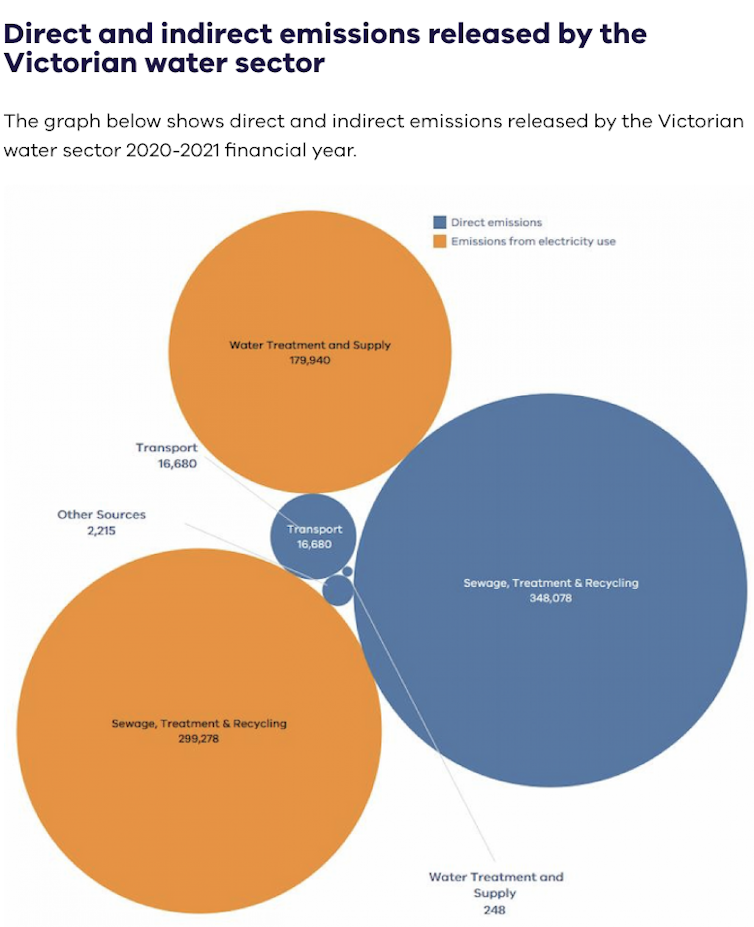
Our research has found a Melbourne-wide program to retrofit showerheads to next-generation technology could save 12-27 billion litres (GL) of water a year (about 6% of current use).
The resulting energy savings would be 380-885GWh per year, cutting emissions by 98,000-226,000 tonnes. That equates to taking 21,000 to 49,000 cars off the roads.
Customers would also save up to $160 a year on their bills. The full economic benefit to society is more than five times the cost of the program.
Who Influences Water Use? Everyone
Helping customers adopt highly efficient showerheads could cut emissions at much lower cost than all other renewable energy investments water utilities are making.
Most households don’t realise hot water systems account for around 24% of their total energy use. Their total energy use for water heating is larger as it includes appliances such as washing machines, dishwashers and kettles. An even larger percentage of household energy use is “water-related” if pool filtration, rainwater tank pumps and so on are included.
We think only of the savings on water bills, but efficient water use also affects our power bills and emissions. But communicating the link isn’t easy.
Showerhead manufacturers tell us they aren’t promoting efficient showerheads because they respond to demand. Water utilities don’t invest in them because it is a present cost for a future benefit – it doesn’t help them balance their budgets. And for policymakers it’s hard to celebrate the water and energy you don’t need to consume.
The combined impact is lack of action on saving water to reduce emissions – even though it’s a great option.
A ‘Tragedy Of The Commons’ Dilemma
Without direct control or accountability by any one organisation, we face a “tragedy of the commons” – individuals overconsuming a shared resource at the wider expense of society. The limited resource today is the ability of our planet to process greenhouse gas emissions before they change our climate.
The tragedy of the commons was used to describe externalities: costs borne by others that a decision-maker does not pay for. Examples include the future costs of increased flooding, more severe droughts and bushfires, and rising sea levels.
If we fully considered the costs and benefits to consumers and society (rather than just costs to utilities), investment priorities would change towards “least cost to the community” solutions.
Many water utilities will be carbon-neutral for scope 1 and 2 by 2025. This means they are at the global forefront of reducing emissions – but the water industry can do much more by tackling scope 3 emissions.
Committing to a scope 3 reduction challenges a water company to move toward things it can only influence rather than control. So, does it pursue all possibilities, without knowing if it can cut emissions? Or does it take a conservative approach and commit to only scope 1 and 2 emissions?
Reducing emissions from water use requires community, industry and government to act together. The stumbling block is decision-making and current legislation.
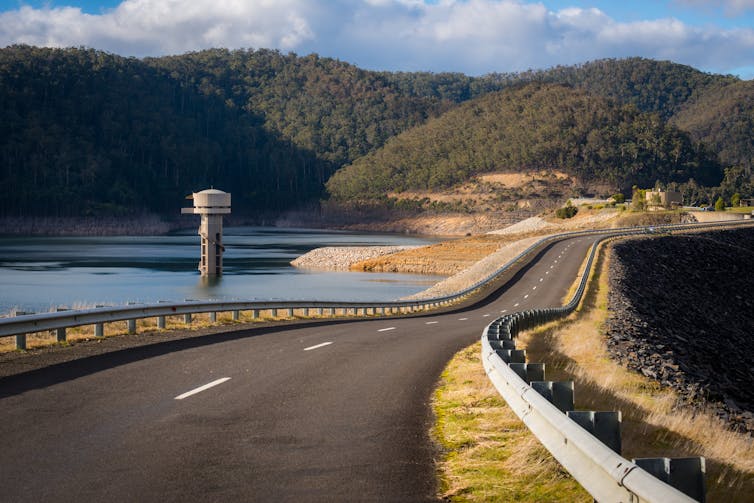
So, What Is The Solution?
First, we need to call out the problem.
Second, we must find a way to ensure the reward for pursuing action is higher than the penalty for failure. A key to this will be highlighting how much cheaper and better many actions are that focus on scope 3 emissions, rather than solely “within business” strategies. We need to find solutions that are genuinely “least cost to community” rather than “least cost to individual business entities”.
Third, as a “commons”, this challenge must be communicated beyond utilities and government to communities. There needs to be broad understanding of the benefits of new approaches and of the pitfalls of a “do nothing” approach.
Big savings are up for grabs in the water industry. More broadly, all industries (from manufacturing to mining) need to consider scope 3 emissions from use of the products they sell.![]()
Steven Kenway, Research Group Leader, Water-Energy-Carbon, The University of Queensland; Liam Smith, Director, BehaviourWorks, Monash Sustainable Development Institute, Monash University; Paul Satur, Research Fellow for Water Sensitive Cities, Monash Sustainable Development Institute, Monash University, and Rob Skinner, Professorial Fellow, Monash Sustainable Development Institute, Monash University
This article is republished from The Conversation under a Creative Commons license. Read the original article.
Pittwater Reserves: Histories + Notes + Pictorial Walks
A History Of The Campaign For Preservation Of The Warriewood Escarpment by David Palmer OAM and Angus Gordon OAM
A Stroll Around Manly Dam: Spring 2023 by Kevin Murray and Joe Mills
A Stroll Through Warriewood Wetlands by Joe Mills February 2023
A Walk Around The Cromer Side Of Narrabeen Lake by Joe Mills
America Bay Track Walk - photos by Joe Mills
An Aquatic June: North Narrabeen - Turimetta - Collaroy photos by Joe Mills
Angophora Reserve Angophora Reserve Flowers Grand Old Tree Of Angophora Reserve Falls Back To The Earth - History page
Annie Wyatt Reserve - A Pictorial
Aquatic Reflections seen this week (May 2023): Narrabeen + Turimetta by Joe Mills
Avalon's Village Green: Avalon Park Becomes Dunbar Park - Some History + Toongari Reserve and Catalpa Reserve
Bairne Walking Track Ku-Ring-Gai Chase NP by Kevin Murray
Bangalley Headland Bangalley Mid Winter
Bangalley Headland Walk: Spring 2023 by Kevin Murray and Joe Mills
Banksias of Pittwater
Barrenjoey Boathouse In Governor Phillip Park Part Of Our Community For 75 Years: Photos From The Collection Of Russell Walton, Son Of Victor Walton
Barrenjoey Headland: Spring flowers
Barrenjoey Headland after fire
Bayview Baths
Bayview Wetlands
Beeby Park
Bilgola Beach
Botham Beach by Barbara Davies
Bungan Beach Bush Care
Careel Bay Saltmarsh plants
Careel Bay Birds
Careel Bay Clean Up day
Careel Bay Playing Fields History and Current
Careel Creek
Careel Creek - If you rebuild it they will come
Centre trail in Ku-ring-gai Chase National Park
Chiltern Track- Ingleside by Marita Macrae
Clareville Beach
Clareville/Long Beach Reserve + some History
Coastal Stability Series: Cabbage Tree Bay To Barrenjoey To Observation Point by John Illingsworth, Pittwater Pathways, and Dr. Peter Mitchell OAM
Cowan Track by Kevin Murray
Curl Curl To Freshwater Walk: October 2021 by Kevin Murray and Joe Mills
Currawong and Palm Beach Views - Winter 2018
Currawong-Mackerel-The Basin A Stroll In Early November 2021 - photos by Selena Griffith
Currawong State Park Currawong Beach + Currawong Creek
Deep Creek To Warriewood Walk photos by Joe Mills
Drone Gives A New View On Coastal Stability; Bungan: Bungan Headland To Newport Beach + Bilgola: North Newport Beach To Avalon + Bangalley: Avalon Headland To Palm Beach
Duck Holes: McCarrs Creek by Joe Mills
Dunbar Park - Some History + Toongari Reserve and Catalpa Reserve
Dundundra Falls Reserve: August 2020 photos by Selena Griffith - Listed in 1935
Elsie Track, Scotland Island
Elvina Track in Late Winter 2019 by Penny Gleen
Elvina Bay Walking Track: Spring 2020 photos by Joe Mills
Elvina Bay-Lovett Bay Loop Spring 2020 by Kevin Murray and Joe Mills
Fern Creek - Ingleside Escarpment To Warriewood Walk + Some History photos by Joe Mills
Iluka Park, Woorak Park, Pittwater Park, Sand Point Reserve, Snapperman Beach Reserve - Palm Beach: Some History
Ingleside
Ingleside Wildflowers August 2013
Irrawong - Ingleside Escarpment Trail Walk Spring 2020 photos by Joe Mills
Irrawong - Mullet Creek Restoration
Katandra Bushland Sanctuary - Ingleside
Lucinda Park, Palm Beach: Some History + 2022 Pictures
McCarrs Creek
McCarr's Creek to Church Point to Bayview Waterfront Path
McKay Reserve
Mona Vale Beach - A Stroll Along, Spring 2021 by Kevin Murray
Mona Vale Headland, Basin and Beach Restoration
Mona Vale Woolworths Front Entrance Gets Garden Upgrade: A Few Notes On The Site's History
Mother Brushtail Killed On Barrenjoey Road: Baby Cried All Night - Powerful Owl Struck At Same Time At Careel Bay During Owlet Fledgling Season: calls for mitigation measures - The List of what you can do for those who ask 'What You I Do' as requested
Mount Murray Anderson Walking Track by Kevin Murray and Joe Mills
Mullet Creek
Narrabeen Creek
Narrabeen Lagoon Catchment: Past Notes Present Photos by Margaret Woods
Narrabeen Lagoon Entrance Clearing Works: September To October 2023 pictures by Joe Mills
Narrabeen Lagoon State Park
Narrabeen Lagoon State Park Expansion
Narrabeen Rockshelf Aquatic Reserve
Nerang Track, Terrey Hills by Bea Pierce
Newport Bushlink - the Crown of the Hill Linked Reserves
Newport Community Garden - Woolcott Reserve
Newport to Bilgola Bushlink 'From The Crown To The Sea' Paths: Founded In 1956 - A Tip and Quarry Becomes Green Space For People and Wildlife
Pittwater Reserves: The Green Ways; Bungan Beach and Bungan Head Reserves: A Headland Garden
Pittwater Reserves, The Green Ways: Clareville Wharf and Taylor's Point Jetty
Pittwater Reserves: The Green Ways; Hordern, Wilshire Parks, McKay Reserve: From Beach to Estuary
Pittwater Reserves - The Green Ways: Mona Vale's Village Greens a Map of the Historic Crown Lands Ethos Realised in The Village, Kitchener and Beeby Parks
Pittwater Reserves: The Green Ways Bilgola Beach - The Cabbage Tree Gardens and Camping Grounds - Includes Bilgola - The Story Of A Politician, A Pilot and An Epicure by Tony Dawson and Anne Spencer
Pittwater spring: waterbirds return to Wetlands
Pittwater's Lone Rangers - 120 Years of Ku-Ring-Gai Chase and the Men of Flowers Inspired by Eccleston Du Faur
Pittwater's Great Outdoors: Spotted To The North, South, East + West- June 2023: Palm Beach Boat House rebuild going well - First day of Winter Rainbow over Turimetta - what's Blooming in the bush? + more by Joe Mills, Selena Griffith and Pittwater Online
Pittwater's Parallel Estuary - The Cowan 'Creek
Resolute Track at West Head by Kevin Murray
Resolute Track Stroll by Joe Mills
Riddle Reserve, Bayview
Salvation Loop Trail, Ku-Ring-Gai Chase National Park- Spring 2020 - by Selena Griffith
Seagull Pair At Turimetta Beach: Spring Is In The Air!
Some late November Insects (2023)
Stapleton Reserve
Stapleton Park Reserve In Spring 2020: An Urban Ark Of Plants Found Nowhere Else
Stony Range Regional Botanical Garden: Some History On How A Reserve Became An Australian Plant Park
The Chiltern Track
The Chiltern Trail On The Verge Of Spring 2023 by Kevin Murray and Joe Mills
The Resolute Beach Loop Track At West Head In Ku-Ring-Gai Chase National Park by Kevin Murray
Topham Track Ku-Ring-Gai Chase NP, August 2022 by Joe Mills and Kevin Murray
Towlers Bay Walking Track by Joe Mills
Trafalgar Square, Newport: A 'Commons' Park Dedicated By Private Landholders - The Green Heart Of This Community
Tranquil Turimetta Beach, April 2022 by Joe Mills
Turimetta Beach Reserve by Joe Mills, Bea Pierce and Lesley
Turimetta Beach Reserve: Old & New Images (by Kevin Murray) + Some History
Turimetta Headland
Turimetta Moods by Joe Mills: June 2023
Turimetta Moods (Week Ending June 23 2023) by Joe Mills
Turimetta Moods: June To July 2023 Pictures by Joe Mills
Turimetta Moods: July Becomes August 2023 by Joe Mills
Turimetta Moods: August Becomes September 2023 ; North Narrabeen - Turimetta - Warriewood - Mona Vale photographs by Joe Mills
Turimetta Moods: Mid-September To Mid-October 2023 by Joe Mills
Warriewood Wetlands - Creeks Deteriorating: How To Report Construction Site Breaches, Weed Infestations + The Long Campaign To Save The Warriewood Wetlands & Ingleside Escarpment March 2023
Warriewood Wetlands and Irrawong Reserve
Whale Beach Ocean Reserve: 'The Strand' - Some History On Another Great Protected Pittwater Reserve
Wilshire Park Palm Beach: Some History + Photos From May 2022
Winji Jimmi - Water Maze
Out Front 2024 – Talented Young Artists Awarded
- Eden Stewart from NBSC Freshwater Senior Campus for a series of paintings entitled Solitude Unveiled
- Henri Tremauville from Narrabeen Sports High School for a ceramic work Symbiotic Depths
.jpg?timestamp=1709326905987)
%20detail%20(002).png?timestamp=1709326962439)
Helping Young Australians Learn About The Harms Of Vaping
- meets the needs of young Australians who are curious or concerned about vaping
- provides young Australians with credible information about vaping
- provides support and resources for young people who want to quit or reduce vaping.
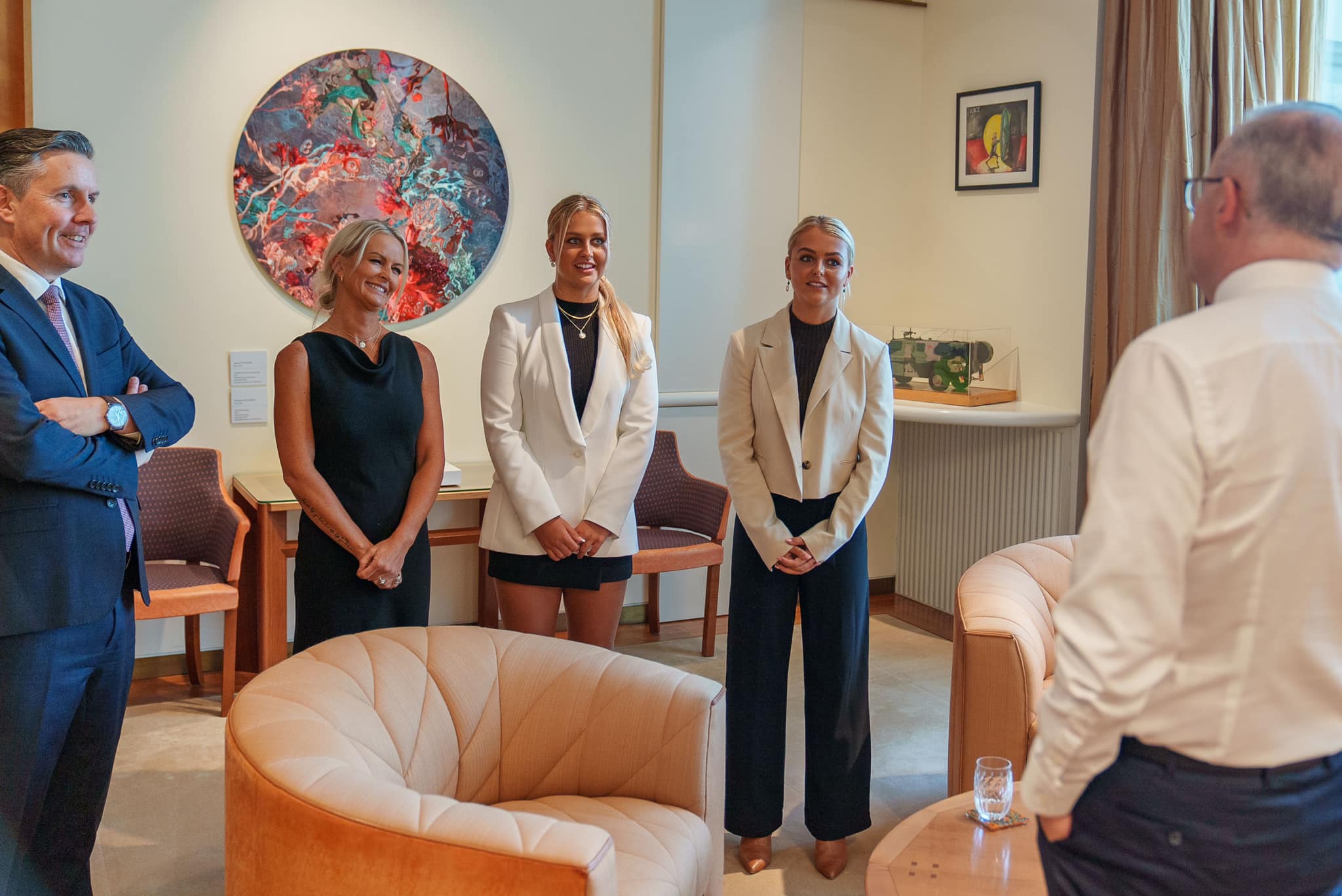

.jpg?timestamp=1709330864347)
How TAFE NSW Yallah Helped Aislinn Thrive In Male-Dominated Landscape Industry
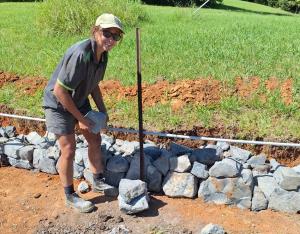 A Wollongong woman who ditched plans for a career in social work to join the male-dominated landscaping sector has urged other young women to get “on the tools” and consider a career in the booming industry.
A Wollongong woman who ditched plans for a career in social work to join the male-dominated landscaping sector has urged other young women to get “on the tools” and consider a career in the booming industry.TAFE NSW Helps Expand Mobile Zoo Aquarium Business
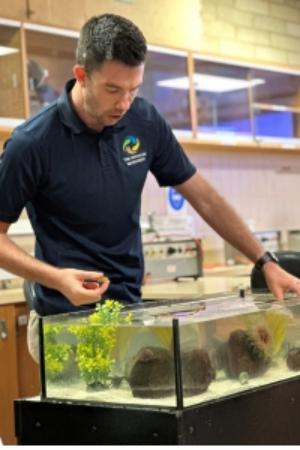 A marine biologist from Western Sydney is bringing the ocean to students of schools and preschools, building awareness about marine life and conservation one starfish and sea cucumber at a time.
A marine biologist from Western Sydney is bringing the ocean to students of schools and preschools, building awareness about marine life and conservation one starfish and sea cucumber at a time.A Sound Future For Music In NSW
- Vyvienne Abla, Director, 4E Hip Hop Festival
- Tanya Ali, Managing Director, FBi Radio
- Tyla Dombroski, Director, Crowbar Sydney
- Jessica Ducrou (Chair), co-CEO, Secret Sounds
- Annabelle Herd, CEO ARIA and PPCA
- Matthew Jeffrey, Delegate, Media Entertainment and Arts Alliance
- Lucy Joseph, Live and Local Program Manager, Live Music Office
- Tim Leha, Independent Indigenous media specialist
- Dean Ormston, CEO, APRA AMCOS
- Kristy Lee Peters, Musician/DJ, KLP
- Jane Slingo, Executive Producer, Electronic Music Conference
- John Watson (Deputy Chair), founder and president of John Watson Management and Eleven: A Music Company
Narrabeen Swim Academy
- Competitive Squads
- Junior Squads
- Adult Squads.
- Public Swimming Mon - Fri 8am -10am.
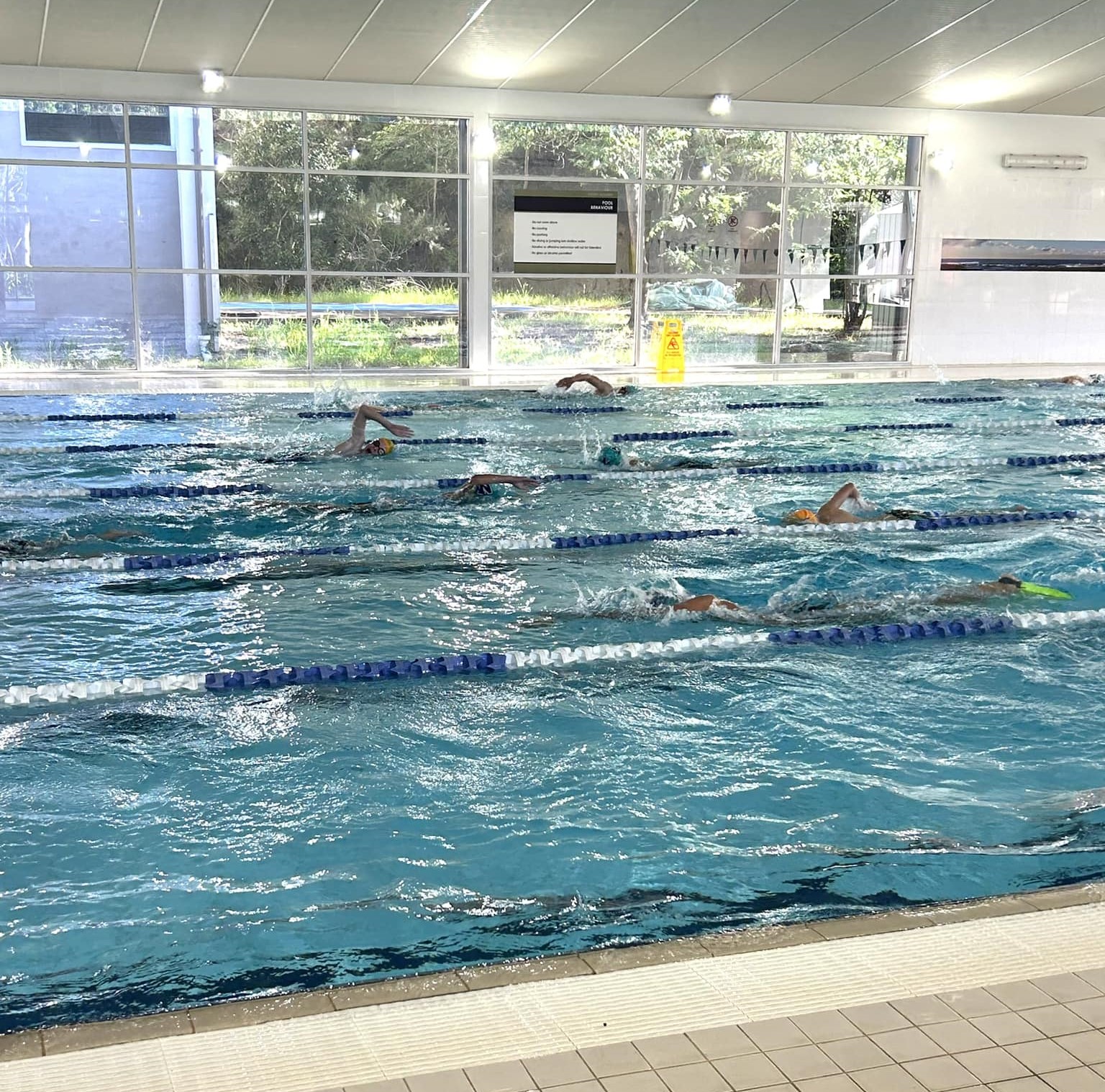
Junior Lifesaver Of The Year (JLOTY) Program 2024
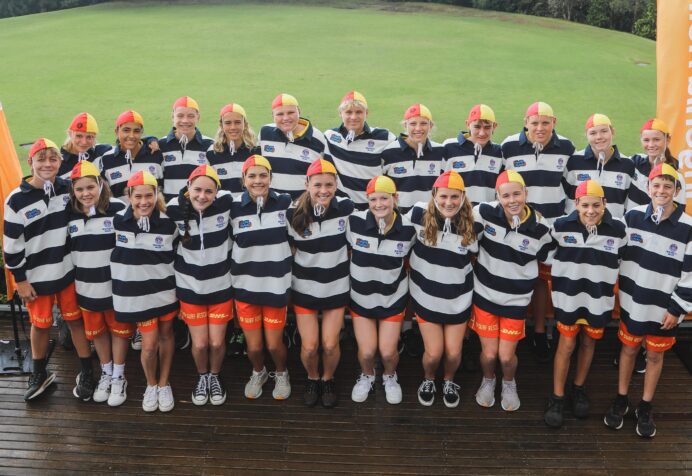 An impressive group of the state’s brightest young lifesavers will come together in our area once again this April for the Ingenia Holiday Parks Junior Lifesaver of the Year (JLOTY) program – Surf Life Saving NSW’s flagship youth development programs.
An impressive group of the state’s brightest young lifesavers will come together in our area once again this April for the Ingenia Holiday Parks Junior Lifesaver of the Year (JLOTY) program – Surf Life Saving NSW’s flagship youth development programs.- Far North Coast – Kayden Muller, Ballina Lighthouse & Lismore SLSC
- Far North Coast – Abigail Matthews, Lennox Head-Alstonville SLSC
- North Coast – James Freeman, Bellinger Valley-North Beach SLSC
- North Coast – Lily-Mei Wong, Woolgoolga SLSC
- Mid North Coast – Cooper Walmsley, Hat Head SLSC
- Mid North Coast – Sienna Ward, Hat Head SLSC
- Lower North Coast – Blake Stewart, Crowdy Head SLSC
- Lower North Coast – Calista Elmer, Crowdy Head SLSC
- Hunter – Max Mietzel, Newcastle SLSC
- Hunter – Abbey Keighran, Tea Gardens Hawks Nest SLSC
- Central Coast – Seamus Devenish Meares, Wamberal SLSC
- Central Coast – Remy Avis, North Avoca SLSC
- Sydney Northern Beaches – Louis Stapf-Giannakis, Freshwater SLSC
- Sydney Northern Beaches – Riley Atkinson, Mona Vale SLSC
- Sydney – Jack Castles, Bondi SBLSC
- Sydney – Ebony Springall, North Cronulla SLSC
- Illawarra – Audrey Steffan, Scarborough Wombarra SLSC
- Illawarra – William Papandreas, Helensburgh-Stanwell Park SLSC
- South Coast – Archie Weir, Kiama Downs SLSC
- South Coast – Poppy Nelson, Kiama SLSC
- Far South Coast – Maxim Savchencko-Ray, Bermagui SLSC
- Far South Coast – Zara Hall, Moruya SLSC
Girls Rugby Open Day
When: Sunday, March 17th, 2-4pm
Where: Rat Park, Warriewood
Local Clubs are uniting for the ultimate girls rugby event!
We are hosting a girls' rugby union open day at Rat Park, grab your friends and head down to see what the game is all about.
Get ready to redefine what it means to be strong. It's not just about tackles and tries, it's about building unshakable confidence and making lifelong friends. We can show you that the field will be your new playground.
GUEST SPEAKERS, GAMES AND PRIZES
We've got the incredible Wallaroo, Waratah and Rat's Women joining us!
Listen to their inspiring journeys, learn from the best, and discover how rugby shaped their fearless path.
We have prize giveaways lined up, so this is your chance to score big on and off the field.
Join us for an action-packed afternoon featuring drill sessions, top Aussie female player guest speakers, and amazing prize giveaways.
Curious about the game? This is your chance to dive in and discover! Don't miss out!

Expressions Of Interest For The 2024 Youth Development Program Are Now Available!
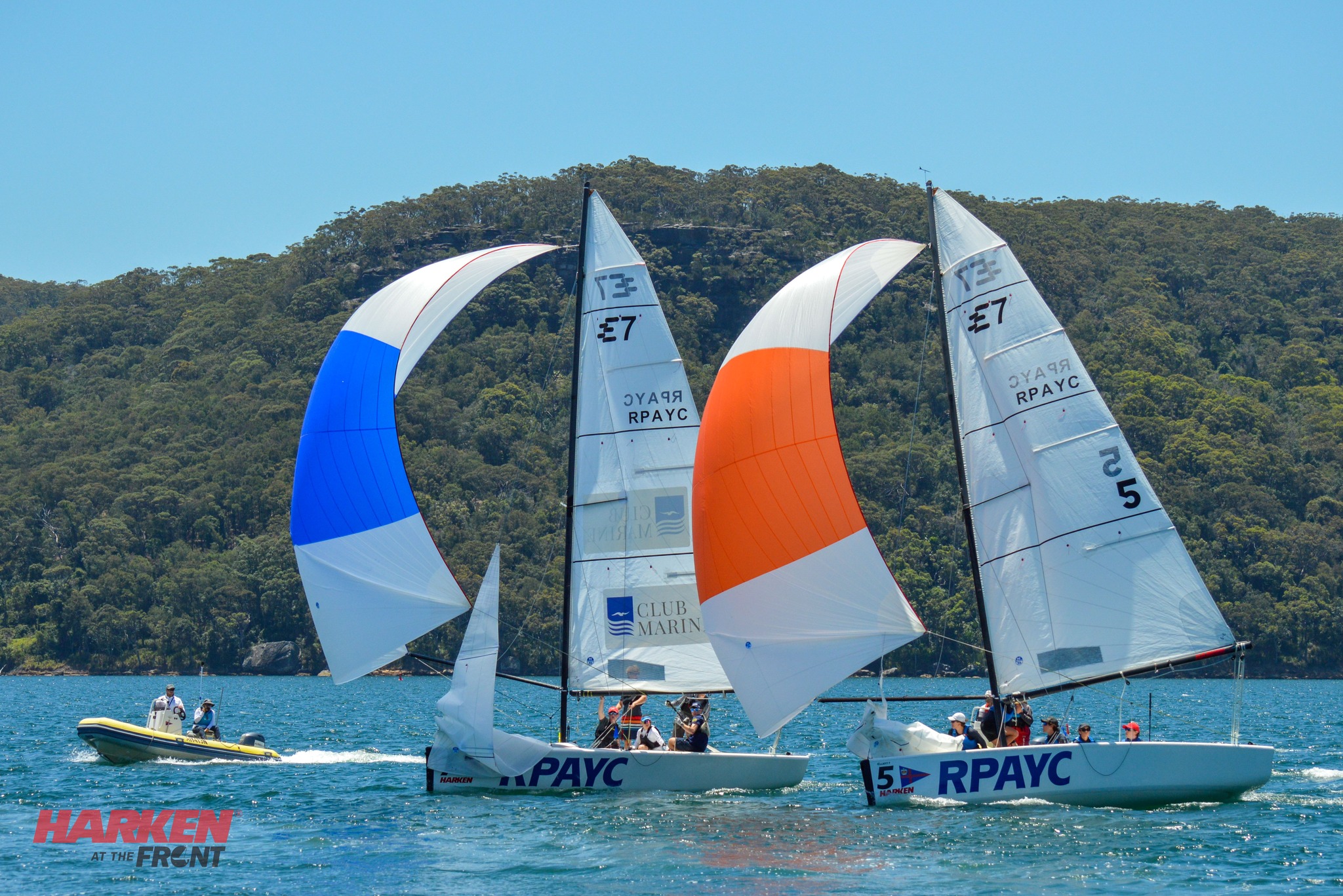
Early Childhood Workforce Given $17 Million Boost After Record Number Of Scholarship Applications
- Up to $25,000 for early childhood teaching (ECT) qualifications.
- Up to $5,000 for diploma and certificate III ECEC and OSHC qualifications.
‘Paddle For Change’ – A Youth Led Climate Action Event: Mona Vale
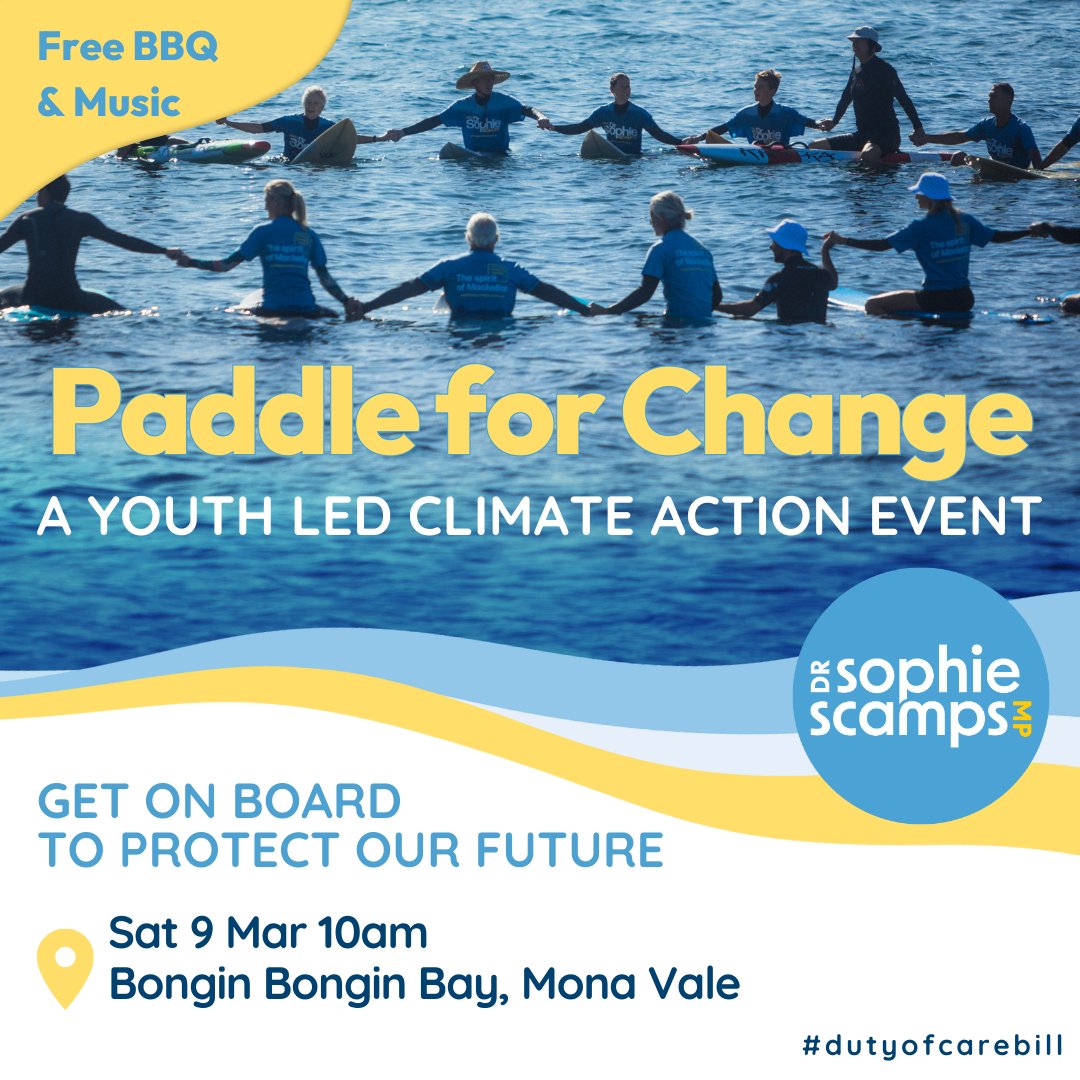
Calling All High School Student Video Makers
.jpg?timestamp=1707430256057)
School Leavers Support
- Download or explore the SLIK here to help guide Your Career.
- School Leavers Information Kit (PDF 5.2MB).
- School Leavers Information Kit (DOCX 0.9MB).
- The SLIK has also been translated into additional languages.
- Download our information booklets if you are rural, regional and remote, Aboriginal or Torres Strait Islander, or living with disability.
- Support for Regional, Rural and Remote School Leavers (PDF 2MB).
- Support for Regional, Rural and Remote School Leavers (DOCX 0.9MB).
- Support for Aboriginal and/or Torres Strait Islander School Leavers (PDF 2MB).
- Support for Aboriginal and/or Torres Strait Islander School Leavers (DOCX 1.1MB).
- Support for School Leavers with Disability (PDF 2MB).
- Support for School Leavers with Disability (DOCX 0.9MB).
- Download the Parents and Guardian’s Guide for School Leavers, which summarises the resources and information available to help you explore all the education, training, and work options available to your young person.
School Leavers Information Service
- navigate the School Leavers Information Kit (SLIK),
- access and use the Your Career website and tools; and
- find relevant support services if needed.
Word Of The Week: Persevere
Verb
1. continue in a course of action even in the face of difficulty or with little or no indication of success. 2. to persist in a state, enterprise, or undertaking in spite of counterinfluences, opposition, or discouragement. 3. to be steadfast, constant.
from late Middle English: from Old French perseverer, from Latin perseverare ‘abide by strictly’, from perseverus ‘very strict’, from per- ‘thoroughly’ + severus ‘severe’, word-root segh- "to have, hold," on the notion of "steadfastness, toughness." Related: persevered; persevering - mid-14c., perseveraunce "will or ability to persevere, tenacity," from Old French perseverance "persistence, endurance" (12c., Modern French persévérance) and directly from Latin perseverantia "steadfastness, constancy," from perseverant- past-participle stem of perseverare "continue steadfastly". From late 14c. as "quality or state of continuing or enduring."
Synonyms/similar phrases: persist, continue, carry on, go on, keep on, keep going, not give up, hammer away, be persistent, be determined, see/follow something through, keep at it, show determination, press on/ahead, stay with something, not take no for an answer, be tenacious, be pertinacious, be patient, stand one's ground, stand fast/firm, hold on, go the distance, stay the course, stick at it, stick it out.

Universities Accord: there’s a push for a Higher Education Future Fund, but some unis ‘hate’ it

The federal government has released the final report on a Universities Accord. Taking more than a year to prepare, it is billed as a “blueprint” for reform for the next decade and beyond. It contains 47 recommendations across student fees, wellbeing, funding, teaching, research and university governance. You can find the rest of our accord coverage here.
One of the most contentious recommendations so far from the Universities Accord final report is for a “Higher Education Future Fund”.
The fund would be established with money from both the federal government and universities, ultimately reaching A$10 billion in assets. The idea is the government would match funding from universities, which would provide money from their own “untied” revenue.
This means universities could not use any of the non-government funding they have gained that they currently spend on research, buildings and other institutional priorities.
So would a fund work and is it a good idea?
Why Have A Future Fund?
The report says the federal government should set a target to more than double the number of government-supported university students in Australia by 2050. The future fund would help support this growth, by providing “built and digital infrastructure, including student housing”. It could also include spaces such as libraries and things like cyber-security.
The fund would be managed by the Board of Guardians of Australia’s Future Fund, Australia’s sovereign wealth fund. This board also manages the Medical Research Future Fund, the Future Drought Fund and four other funds.
Any grants paid by the higher education fund would be approved by an independent board.
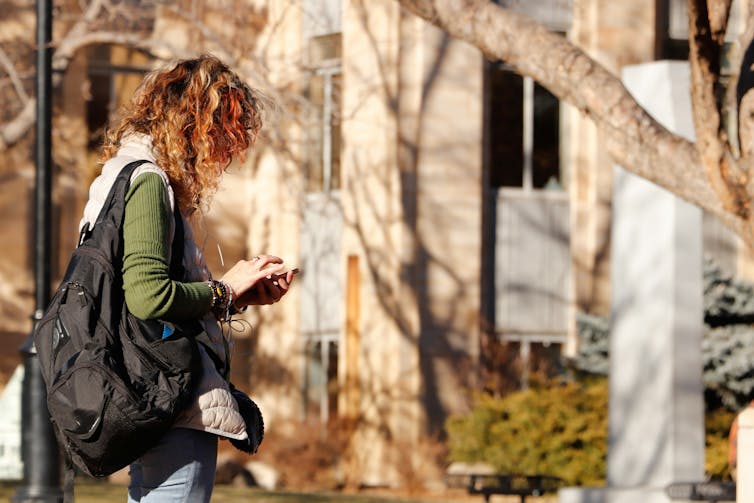
How Would It Work?
The accord final report suggests wealthier universities would pay more as the fund would “recognise universities’ capacity to pay”. The report contains little detail on how this would be achieved, but it seems likely the fund would redistribute resources from universities with more “untied non-government revenue” (from sources such as international student fees and business ventures) to those with less.
This appears to be a development of the proposed levy on international student fee income floated in the accord interim report last year.
This was criticised by higher education experts as being “unhelpful and unworkable”. Wealthier universities also opposed the idea.
So the review panel may not be surprised to see the future fund is being similarly criticised.
As the Group of Eight chair Mark Scott (who is also chair of The Conversation’s board) noted in a statement:
This is extremely poor public policy, and taxing the very system the report identified as underfunded is not a solution.
Scott added it could also undermine Australia’s “successes in international education and damage our global reputation”.
But not all universities think alike. According to The Australian, Western Sydney University Vice-Chancellor Barney Glover (who was also a member of the accord review panel) thinks the fund is “important future proofing” for the sector, but there is work to do on the details.
What About The Impact On Research Funding?
Asking universities to surrender some of their own funds for a communal fund seems to be inconsistent with other areas of the report.
The report calls for increased targets for how much Australia spends on research and development as a proportion of GDP and for a “pathway” to fund the “full economic cost of research”. At the moment, Australia’s university research is significantly subsidised by international student fees.
If funds were taken away from individual universities for a future fund, this would likely take funds away from research. Universities would gain more direct funding for research, but would loose some of their international student fee income which they currently reallocate to research.
Monash University (which is also a member of the Group of Eight) said the fund would “blunt” the impact of its research. As Vice-Chancellor Sharon Pickering said:
[It will] diminish Monash’s ability to deliver on the Accord’s objectives and aspirations.
The fund’s proposed model stands in contrast to that of the Australian Government Future Fund, which was set up in 2006 to soak up big federal government surpluses generated from the mining boom. In other words, it was funded fully by the government.
But A Fund Has Some Merit
Yet there are reasons to support a future fund for higher education. It would be prudent to use some of the revenue from the current boom in international students to generate revenue long into the future.
Collective action from the sector to set itself up for the future could also be more powerful and better coordinated than separate actions of individual institutions. And it is progressive to redistribute resources from those with more to those with less.
We also know affordable housing is a crucial issue for many Australians, and students are among those with the fewest resources. The huge numbers of international students has also increased pressure on student housing.
While Australian universities have not been expected to provide student housing, we already have some structures set up via university colleges and student residences as well as housing services that seek to match good landlords with responsible students.
So it is not unreasonable to expect universities to be part of the solution of student accommodation pressures.
However, history suggests it will be politically difficult. In 1988, the federal government levied universities (or “clawed back” funds) to establish the Australian Research Council.
This was the subject of fraught and prolonged negotiations between universities and the then education minister John Dawkins. In the end, the clawback was largely implemented as planned. But the spread of research funding across universities remains highly disputed.

What Now?
A future fund is not going to be set up anytime soon. The review panel advises it should not be established until after the full implementation of a recommended new needs-based funding model for universities.
This itself has many moving parts and is likely to involve extensive and intensive discussions and negotiations.
So there is plenty of scope for universities to offset what they consider to be disadvantages with other parts of the proposed accord.
In the meantime, the government is considering the report. When asked about the future fund by The Conversation’s Michelle Grattan, Education Minister Jason Clare noted some universities “hate” the idea and others “like it”, before adding, “I’ve got an open mind”.![]()
Gavin Moodie, Adjunct Professor, Department of Leadership, Higher and Adult Education, OISE, University of Toronto
This article is republished from The Conversation under a Creative Commons license. Read the original article.
Universities Accord: early university offers won’t be made until later in Year 12. Is this a good idea?

The federal government has released the final report on a Universities Accord. Taking more than a year to prepare, it is billed as a “blueprint” for reform for the next decade and beyond. It contains 47 recommendations across student fees, wellbeing, funding, teaching, research and university governance. You can find the rest of our accord coverage here.
If you are a Year 12 student this year, you may be hoping to get an early offer for a university place before your final exams even begin.
While the bulk of students receive their university offers in January of the year they plan to start study, it is increasingly common for students to receive an offer while they are still at school. Offers have reportedly been made as early as March.
But this practice is set to change. While the federal government is still considering much of the Universities Accord final report, it has made a decision on its recommendation about early offers to Year 12 students.
Over the weekend, it announced university offers in all states and territories should not be made to school students before September.
What Are Early Offers?
Most (though not all) Year 12 university applicants do their school exams, then their external exams and then apply to university with their ATAR (or Australian Tertiary Entrance Rank).
Universities use this to make an offer to students from January of the year they begin study.
But some universities and some subject areas take a different approach. They look at Year 11 results and factors such as portfolios of work, written responses to questions, demonstration of skills like resilience or motivation and/or letters of recommendation.
Students can apply under an early offer scheme. Then universities can make a provisional offer to Year 12 students before final exams and the release of ATARs.
Students are still required to complete Year 12 and may need to achieve a certain ATAR, have done certain subjects and received certain results in these subjects.
Early offers are not new to universities, particularly in areas such as visual and performing arts where measures beyond exam results are required. But the practice became more widespread during disruptions to learning and teaching during COVID.

Why Are Early Offers Changing?
The Universities Accord review panel found early offers to students at school to be a “contentious practice”. It found there was no consistency or transparency around it and little data.
While they noted they can ease the stress of Year 12, the panel also heard early offers can lead to student disengagement “in the final and important weeks and months” of school.
The panel also noted they can favour students who already have personal or socioeconomic advantages, such as principals, careers counsellors or parents who can advocate for and write letters of recommendation on their behalf.
What Will Happen Now?
At a meeting last week, federal and state education ministers agreed early offers to Year 12 students should change.
For this year and next, no early offers will be made before September. A national approach will be developed by 2027.
Students who suffer from exam anxiety and who are not as confident may lose out as a result of this move.
Some students who become overwhelmed by Year 12, may perform better in the internal Year 11 exams where the pressure is often reduced. Year 11 exams are still significant but they are scored by classroom teachers and likely to take in other dynamics, including the student’s circumstances and background.
Is This Change A Good Idea?
At the moment, the system is geared towards a year of assessments and exams the concludes with an ATAR, which is a student’s ticket into a university course. This sort of incentivisation may prepare students for future challenges in their academic and career journeys.
It does however favour the student who performs well under test conditions and whose life circumstances enable them to work consistently all year.
It may also disadvantage those who already face challenges such as poor mental health, or those who are the first in their family to attend to university.
Drawing more students from underrepresented backgrounds into university is a key goal of the Universities Accord final report. If equity is a priority, it may be wise to rethink early offers for some vulnerable students.
Conscientious students are not likely to reduce their commitment to their study program and will persevere through Year 12 anyway.![]()
Pearl Subban, Associate Professor, Faculty of Education, Monash University
This article is republished from The Conversation under a Creative Commons license. Read the original article.
Leap of imagination: how February 29 reminds us of our mysterious relationship with time and space
Emily O'Hara, Auckland University of TechnologyIf you find it intriguing that February 28 will be followed this week by February 29, rather than March 1 as it usually is, spare a thought for those alive in 1582. Back then, Thursday October 4 was followed by Friday October 15.
Ten whole days were snatched from the present when Pope Gregory XIII issued a papal bull to “restore” the calendar from discrepancies that had crept into the Julian calendar, introduced by Julius Caesar in 45 BCE.
The new Gregorian calendar returned the northern hemisphere’s vernal equinox to its “proper” place, around March 21. (The equinox is when the Earth’s axis is tilted neither toward nor away from the sun, and is used to determine the date of Easter.)
The Julian calendar had observed a leap year every four years, but this meant time had drifted out of alignment with the dates of celestial events and astronomical seasons.
In the Gregorian calendar, leap days were added only to years that were a multiple of four – like 2024 – with an exception for years that were evenly divisible by 100, but not 400 – like 1700.
Simply put, leap days exist because it doesn’t take a neat 365 days for Earth to orbit the Sun. It takes 365.2422 days. Tracking the movement of celestial objects through space in an orderly pattern doesn’t quite work, which is why we have February – time’s great mop.
Time And Space
This is just part of the history of how February – the shortest month, and originally the last month in the Roman calendar – came to have the job of absorbing those inconsistencies in the temporal calculations of the world’s most commonly used calendar.
There is plenty of science, maths and astrophysics explaining the relationship between time and the planet we live on. But I like to think leap years and days offer something even more interesting to consider: why do we have calendars anyway?
And what have they got to do with how we understand the wonder and strangeness of our existence in the universe? Because calendars tell a story, not just about time, but also about space.
Our reckoning of time on Earth is through our spatial relationship to the Sun, Moon and stars. Time, and its place in our lives, sits somewhere between the scientific, the celestial and the spiritual.
It is notoriously slippery, subjective and experiential. It is also marked, tracked and determined in myriad ways across different cultures, from tropical to solar to lunar calendars.
It is the Sun that measures a day and gives us our first reference point for understanding time. But it is the Moon, as a major celestial body, that extends our perception of time. By stretching a span of one day into something longer, it offers us a chance for philosophical reflection.
The Sun (or its effect at least) is either present or not present. The Moon, however, goes through phases of transformation. It appears and disappears, changing shape and hinting that one night is not exactly like the one before or after.
The Moon also has a distinct rhythm that can be tracked and understood as a pattern, giving us another sense of duration. Time is just that – overlapping durations: instants, seconds, minutes, hours, days, weeks, months, years, decades, lifetimes, centuries, ages.
The Elusive Moon
It is almost impossible to imagine how time might feel in the absence of all the tools and gadgets we use to track, control and corral it. But it’s also hard to know what we might do in the absence of time as a unit of productivity – a measurable, dispensable resource.
The closest we might come is simply to imagine what life might feel like in the absence of the Moon. Each day would rise and fall, in a rhythm of its own, but without visible reference to anything else. Just endless shifts from light to dark.
Nights would be almost completely dark without the light of the Moon. Only stars at a much further distance would puncture the inky sky. The world around us would change – trees would grow, mammals would age and die, land masses would shift and change – but all would happen in an endless cycle of sunrise to sunset.
The light from the Sun takes eight minutes to reach Earth, so the sunlight we see is always eight minutes in the past.
I remember sitting outside when I first learned this, and wondering what the temporal delay might be between me and other objects: a plum tree, trees at the end of the street, hills in the distance, light on the horizon when looking out over the ocean, stars in the night sky.
Moonlight, for reference, takes about 1.3 seconds to get to Earth. Light always travels at the same speed, it is entirely constant. The differing duration between how long it takes for sunlight or moonlight to reach the Earth is determined by the space in between.
Time on the other hand, is anything but constant. There are countless ways we characterise it. The mere fact we have so many calendars and ways of describing perceptual time hints at our inability to pin it down.
Calendars give us the impression we can, and have, made time predictable and understandable. Leap years, days and seconds serve as a periodic reminder that we haven’t.![]()
Emily O'Hara, Senior Lecturer, Spatial Design + Temporary Practices, Auckland University of Technology
This article is republished from The Conversation under a Creative Commons license. Read the original article.
Pope Gregory XIII gave us the leap year – but his legacy goes so much further

On this day, February 29, conversations the world over may conjure the name of Pope Gregory XIII – widely known for his reform of the calendar that bears his name.
The need for calendar reform was driven by the inaccuracy of the Julian calendar. Introduced in 46 BC, the Julian calendar fell short of the solar year – the time it takes Earth to orbit the Sun – by about 12 minutes each year.
To correct this, Gregory convened a commission of experts who fine-tuned the leap-year system, giving us the one we have today.
But the Gregorian calendar isn’t the only legacy Pope Gregory left. His papacy encompassed a broad spectrum of achievements that have left a lasting mark on the world.
Rise To Papacy
Born in 1502 as Ugo Boncompagni, Gregory made many contributions to the life of the Catholic Church, the city of Rome, education, arts and diplomacy.
Before ascending to the papacy, Boncompagni had a distinguished career in law in Bologna where he received his doctorate in both civil and canon law. He also taught jurisprudence, which is the theory and philosophy of law.

His intellectual influence positioned him as a trusted figure in legal and diplomatic circles even before his election as pope in the 1572 conclave. Upon being elected he adopted the name Gregory, in honour of Pope Gregory the Great who lived in the sixth century.
Movement In The Church
One of Gregory’s major undertakings was reforming the Catholic Church in response to the Reformation, a movement which established a distinct new branch of Christianity, Protestantism, separated from the Catholic Church.
Gregory aimed to implement the decisions of the Council of Trent, which met between 1545 and 1563, and defined key Christian doctrines and practices, including scripture, original sin, justification, the sacraments and saint veneration. Its outcomes directed the church’s future for centuries.
Gregory’s administrative reforms were aimed at centralising church governance and its operations. As pope, he relished the practice of law, personally engaging in judicial deliberations and surprising his contemporaries with his legal acumen.
His papacy also marked a revision of Gratian’s Decretals, a collection of 12th-century church laws that served as a textbook for lawyers. Gregory aimed to correct numerous errors and unify the various versions of this foundational text of canon law. This culminated in the publication of an amended edition in 1582.
Gregory’s Dragon
Pope Gregory lived at a time when emblematic and symbolic interpretations were central to the political and cultural discourse. In particular, monsters were interpreted as omens or divine signs and played a significant role in religious and political debate.
Gregory’s coat of arms, the heraldic emblem of the Boncompagni family, featured a dragon. As such, it drew criticism from Protestant propaganda.

Anti-Catholic publications featured the Boncompagni dragon as an emblem of the Antichrist, drawing on the seven-headed monster in the Book of Revelation.
Rooted in biblical and mythological references, the negative imagery of Gregory’s dragon became a focal point for debates over the nature of papal authority, the legitimacy of Protestant criticisms, and the broader struggle to define truth and meaning in a rapidly changing world.
A Legacy Enshrined In Art
Gregory’s legal legacy is celebrated in art, particularly in the Sala Bologna of the Vatican Palace, which commemorates his and other popes’ contributions to the study and codification of law.
Gregory XIII’s pontificate (term of office) was marked by a comprehensive effort to renew and beautify Rome, improving both the city’s functionality and aesthetics. He had a particular focus on the Capitoline Hill, the political and religious heart of Rome since the Antiquity.
Gregory’s initiatives – which included restoring essential infrastructure such as gates, bridges and fountains – were part of a broader vision to emphasise the centrality of law in Rome’s history and culture.
This is demonstrated by him being honoured by a statue in the Aula Consiliare of the Senator’s Palace. This hall was designed to showcase the importance of judicial proceedings.
Alongside his urban planning initiatives, Gregory’s commissioning of artworks and architectural projects showcased his commitment to fostering a city that was not only the spiritual centre of Catholicism, but also a beacon of Renaissance culture.
In the Sala Regia hall in Vatican City, he commissioned a series of mural frescoes showcasing the triumph of Christianity over its enemies. He also commissioned an entire map gallery for the Apostolic Palace, to demonstrate the extent of Christianity’s spread over the world.
Reforming The Calendar
Because the Julian calendar fell short by about 12 minutes each year, it was increasingly out-of-sync with the solar year. By the time Gregory’s reign began, this discrepancy had accumulated to more than 10 days.
To correct this, Gregory convened a commission of experts. Their work led to the publication of a formal papal decree in the form of the bull Inter Gravissimas on February 24 1582.
This decree not only fine-tuned the leap-year system, but also mandated the elimination of ten days to realign the calendar with the solar year.

The Gregorian calendar reform signified a monumental shift in timekeeping. In 1582, October 4 was followed directly by October 15, correcting the calendar’s alignment with astronomical reality.
This adjustment, slowly adopted by Protestant nations, has had a lasting impact on how the world measures time.
Faith, Intellect And Reform
In St Peter’s Basilica, Vatican City, you will find a remarkable funerary monument to Pope Gregory XIII. Completed in 1723 by Milanese sculptor Camillo Rusconi, it incorporates representations of both Religion and Wisdom, personified by two statues flanking the pope.
Wisdom is shown drawing attention to a relief beneath the enthroned pope which illustrates the promulgation of the new calendar – the pope’s most significant achievement. At the base of the monument, a dragon crouches unapologetically.
It’s a fitting tribute to a pope whose tenure was characterised by the interaction of faith, intellect and reform – and which can now be marked as a cornerstone in European history.![]()

Darius von Guttner Sporzynski, Historian, Australian Catholic University
This article is republished from The Conversation under a Creative Commons license. Read the original article.
70% of Australians don’t feel in control of their data as companies hide behind meaningless privacy terms

Australian consumers don’t understand how companies – including data brokers – track, target and profile them. This is revealed in new research on consumer understanding of privacy terms, released by the non-profit Consumer Policy Research Centre and UNSW Sydney today.
Our report also reveals 70% of Australians feel they have little or no control over how their data is disclosed between companies. Many expressed anger, frustration and distrust.
These findings are particularly important as the government considers long-overdue reforms to our privacy legislation, and the consumer watchdog finalises its upcoming report on data brokers.
If Australians are to have any hope of fair and trustworthy data handling, the government must stop companies from hiding their practices behind confusing and misleading privacy terms and mandate fairness in data handling.
We Are All Being Tracked
Our activities online and offline are constantly tracked by various companies, including data brokers that trade in our personal information.
This includes data about our activity and purchases on websites and apps, relationship status, children, financial circumstances, life events, health concerns, search history and location.
Many businesses focus their efforts on finding new ways to track and profile us, despite repeated evidence that consumers view this as misuse of their personal information.
Companies describe the data they collect in confusing and unfamiliar terms. Much of this wording seems designed to prevent us from understanding or objecting to the use and disclosure of our personal information, often collected in surreptitious ways.
Businesses can use your data to make more profit at your expense. This includes
- charging you a higher price
- preventing you from seeing better offers
- micro-targeting political messages or ads based on your health information
- reducing the priority you’re given in customer service
- creating a profile (which you’ll never see) to share with a prospective employer, insurer or landlord.
Anonymised, Pseudonymised, Hashed
Businesses commonly try to argue this information is “de-identified” or not “personal”, to avoid running afoul of the federal Privacy Act in which these terms are defined.
But many privacy policies muddy the waters by using other, undefined terms. They create the impression data can’t be used to single out the consumer or influence what they’re shown online – even when it can.
Privacy policies commonly refer to:
- anonymised data
- pseudonymised information
- hashed emails
- audience data
- aggregated information.
These terms have no legal definition and no fixed meaning in practice.
Data brokers and other companies may use “pseudonymised information” or “hashed email addresses” (essentially, encrypted addresses) to create detailed profiles. These will be shared with other businesses without our knowledge. They do this by matching the information collected about us by various companies in different parts of our lives.
“Anonymised information” – not a legal term in Australia – may sound like it wouldn’t reveal anything about an individual consumer. Some companies use it when only a person’s name and email have been removed, but we can still be identified by other unique or rare characteristics.
What Did Our Survey Find?
Our survey showed Australians do not feel in control of their personal information. More than 70% of consumers believe they have very little or no control over what personal information online businesses share with other companies.
Only a third of consumers feel they have at least moderate control over whether businesses use their personal information to create a profile about them.
Most consumers have no understanding of common terms in privacy notices, such as “hashed email address” or “advertising ID” (a unique ID usually assigned to one’s device).
And it’s likely to be worse than these statistics suggest, since some consumers may overestimate their knowledge.
The terms refer to data widely used to track and influence us without our knowledge. However, when consumers don’t recognise descriptions of personal information, they’re less likely to know whether that data could be used to single them out for tracking, influencing, profiling, discrimination or exclusion.
Most consumers either don’t know, or think it unlikely, that “pseudonymised information”, a “hashed email address” or “advertising ID” can be used to single them out from the crowd. They can.
Most consumers think it’s unacceptable for businesses they have no direct relationship with to use their email address, IP address, device information, search history or location data. However, data brokers and other “data partners” not in direct contact with consumers commonly use such data.
Consumers are understandably frustrated, anxious and angry about the unfair and untrustworthy ways organisations make use of their personal information and expose them to increased risk of data misuse.
Fairness, Not ‘Education’
Simply educating consumers about the terms used by companies and the ways their data is shared may seem an obvious solution.
However, we don’t recommend this for three reasons. Firstly, we can’t be sure of the meaning of undefined terms. Companies will likely keep coming up with new ones.
Secondly, it’s unreasonable to place the burden of understanding complex data ecosystems on consumers who naturally lack expertise in these areas.
Thirdly, “education” is pointless when consumers are not given real choices about the use of their data.
Urgent law reform is needed to make Australian privacy protections fit for the digital era. This should include clarifying that information that singles an individual out from the crowd is “personal information”.
We also need a “fair and reasonable” test for data handling, instead of take-it-or-leave-it privacy “consents”.
Most of us can’t avoid participating in the digital economy. These changes would help ensure that instead of confusing privacy terms, there are substantial, meaningful legal requirements for how our personal information is handled.![]()
Katharine Kemp, Associate Professor, Faculty of Law & Justice, UNSW Sydney
This article is republished from The Conversation under a Creative Commons license. Read the original article.
How people get sucked into misinformation rabbit holes – and how to get them out

As misinformation and radicalisation rise, it’s tempting to look for something to blame: the internet, social media personalities, sensationalised political campaigns, religion, or conspiracy theories. And once we’ve settled on a cause, solutions usually follow: do more fact-checking, regulate advertising, ban YouTubers deemed to have “gone too far”.
However, if these strategies were the whole answer, we should already be seeing a decrease in people being drawn into fringe communities and beliefs, and less misinformation in the online environment. We’re not.
In new research published in the Journal of Sociology, we and our colleagues found radicalisation is a process of increasingly intense stages, and only a small number of people progress to the point where they commit violent acts.
Our work shows the misinformation radicalisation process is a pathway driven by human emotions rather than the information itself – and this understanding may be a first step in finding solutions.
A Feeling Of Control
We analysed dozens of public statements from newspapers and online in which former radicalised people described their experiences. We identified different levels of intensity in misinformation and its online communities, associated with common recurring behaviours.
In the early stages, we found people either encountered misinformation about an anxiety-inducing topic through algorithms or friends, or they went looking for an explanation for something that gave them a “bad feeling”.
Regardless, they often reported finding the same things: a new sense of certainty, a new community they could talk to, and feeling they had regained some control of their lives.
Once people reached the middle stages of our proposed radicalisation pathway, we considered them to be invested in the new community, its goals, and its values.
Growing Intensity
It was during these more intense stages that people began to report more negative impacts on their own lives. This could include the loss of friends and family, health issues caused by too much time spent on screens and too little sleep, and feelings of stress and paranoia. To soothe these pains, they turned again to their fringe communities for support.
Most people in our dataset didn’t progress past these middle stages. However, their continued activity in these spaces kept the misinformation ecosystem alive.

When people did move further and reach the extreme final stages in our model, they were doing active harm.
In their recounting of their experiences at these high levels of intensity, individuals spoke of choosing to break ties with loved ones, participating in public acts of disruption and, in some cases, engaging in violence against other people in the name of their cause.
Once people reached this stage, it took pretty strong interventions to get them out of it. The challenge, then, is how to intervene safely and effectively when people are in the earlier stages of being drawn into a fringe community.
Respond With Empathy, Not Shame
We have a few suggestions. For people who are still in the earlier stages, friends and trusted advisers, like a doctor or a nurse, can have a big impact by simply responding with empathy.
If a loved one starts voicing possible fringe views, like a fear of vaccines, or animosity against women or other marginalised groups, a calm response that seeks to understand the person’s underlying concern can go a long way.
The worst response is one that might leave them feeling ashamed or upset. It may drive them back to their fringe community and accelerate their radicalisation.
Even if the person’s views intensify, maintaining your connection with them can turn you into a lifeline that will see them get out sooner rather than later.
Once people reached the middle stages, we found third-party online content – not produced by government, but regular users – could reach people without backfiring. Considering that many people in our research sample had their radicalisation instigated by social media, we also suggest the private companies behind such platforms should be held responsible for the effects of their automated tools on society.
By the middle stages, arguments on the basis of logic or fact are ineffective. It doesn’t matter whether they are delivered by a friend, a news anchor, or a platform-affiliated fact-checking tool.
At the most extreme final stages, we found that only heavy-handed interventions worked, such as family members forcibly hospitalising their radicalised relative, or individuals undergoing government-supported deradicalisation programs.
How Not To Be Radicalised
After all this, you might be wondering: how do you protect yourself from being radicalised?
As much of society becomes more dependent on digital technologies, we’re going to get exposed to even more misinformation, and our world is likely going to get smaller through online echo chambers.
One strategy is to foster your critical thinking skills by reading long-form texts from paper books.
Another is to protect yourself from the emotional manipulation of platform algorithms by limiting your social media use to small, infrequent, purposefully-directed pockets of time.
And a third is to sustain connections with other humans, and lead a more analogue life – which has other benefits as well.
So in short: log off, read a book, and spend time with people you care about. ![]()
Emily Booth, Research assistant, University of Technology Sydney and Marian-Andrei Rizoiu, Associate Professor in Behavioral Data Science, University of Technology Sydney
This article is republished from The Conversation under a Creative Commons license. Read the original article.
Why and how often do I need to wash makeup brushes and sponges?

From the bristles of brushes to the porous surfaces of sponges, your makeup kit can harbour a host of bacteria and fungi.
These potentially hazardous contaminants can originate not only from the cosmetics themselves, but also from the very surface of our skin.
So, how can we keep things hygienic and avoid microbial growth on makeup brushes and sponges? Here’s what you need to know.
How Do Germs And Fungi Get In My Brushes And Sponges?
Germs and fungi can make their way into your makeup kit in lots of ways.
Ever flushed a toilet with the lid open with your makeup brushes nearby? There’s a good chance faecal particles have landed on them.
Perhaps a family member or housemate has used your eyeshadow brush when you weren’t looking, and transferred some microbes across in the process.
Bacteria that trigger a pimple outbreak can be easily transferred from the surface of your skin to a makeup brush or sponge.
And tiny little mites called Demodex mites, which have been linked to certain rashes and acne, live on your skin, as well, and so may end up in your sponge or brushes.

Bacterial contamination of lip cosmetics, in particular, can pose a risk of skin and eye infections (so keep that in mind if you use lip brushes). Lipsticks are frequently contaminated with bacteria such as Staphylococcus aureus, E. coli, and Streptococcus pneumoniae.
Low-quality cosmetics are more likely to have higher and more diverse microbial growth compared to high-quality cosmetics.
Brushes exposed to sensitive areas like the eyes, mouth and nose are particularly susceptible to being potential sources of infection.
The range of conditions caused by these microorganisms includes:
abscesses
skin and soft tissue infections
skin lesions
rashes
and dermatitis.
In severe cases, infections can lead to invasion of the bloodstream or deep tissues.
Commercially available cosmetics contain varying amounts and types of preservatives aimed at inhibiting the growth of fungi and bacteria.
But when you apply makeup, different cosmetics with unique formulations of preservatives can become mixed. When a preservative meant for one product mixes with others, it might not work as well because they have different water amounts or pH levels.
So preservatives are not foolproof. We also need to observe good hygiene practices when it comes to brushes and other cosmetics applicators.

Keeping Brushes Clean
Start with the basics: never share makeup brushes or sponges. Everyone carries different microbes on their skin, so sharing brushes and sponges means you are also sharing germs and fungi.
If you need to share makeup, use something disposable to apply it, or make sure any shared brushes are washed and sterilised before the next person uses it.
Clean makeup brushes by washing with hot soapy water and rinsing thoroughly.
How often? Stick to a cleaning routine you can repeat with consistency (as opposed to a deep clean that is done annually). Once a week might be a good goal for some, while others may need to wash more regularly if they are heavy users of makeup.
Definitely wash straight away if someone else has used your brushes or sponges. And if you’ve had an eye infection such as conjunctivitis, ensure you clean applicators thoroughly after the infection has resolved.
You can use bactericidal soap, 70% ethanol or chlorhexidine solutions to wash. Just make sure you wash very thoroughly with hot water after, as some of these things can irritate your skin. (While some people online say alcohol can degrade brushes and sponges, opinion seems to be mixed; in general, most disinfectants are unlikely to cause significant corrosion.)
For some brushes, heating or steaming them and letting them dry may also be an effective sterilisation method once they are washed with detergent. Microwaving sponges isn’t a good idea because while the heat generated by a domestic microwave would kill microbes, it would need temperatures approaching 100°C for a decent period of time (at least several minutes). The heat could melt some parts of the sponge and hot materials could be a scalding hazard.
Once clean, ensure brushes and sponges are stored in a dry place away from water sources (and not near an open toilet).
If you’re having makeup applied professionally, brushes and applicators should be sterilised or changed from person to person.

Should I Wash Them With Micellar Water?
No.
Not only is this expensive, it’s unnecessary. The same benefits can be achieved with cheaper detergents or alcohol (just rinse brushes carefully afterwards).
Disinfection methods such as using bactericidal soap, 70% ethanol, or chlorhexidine are all very good at reducing the amount of microbes on your brushes and sponges.![]()
Enzo Palombo, Professor of Microbiology, Swinburne University of Technology and Rosalie Hocking, , Swinburne University of Technology
This article is republished from The Conversation under a Creative Commons license. Read the original article.
Young people are drinking less in real life. But film and TV paints a different picture
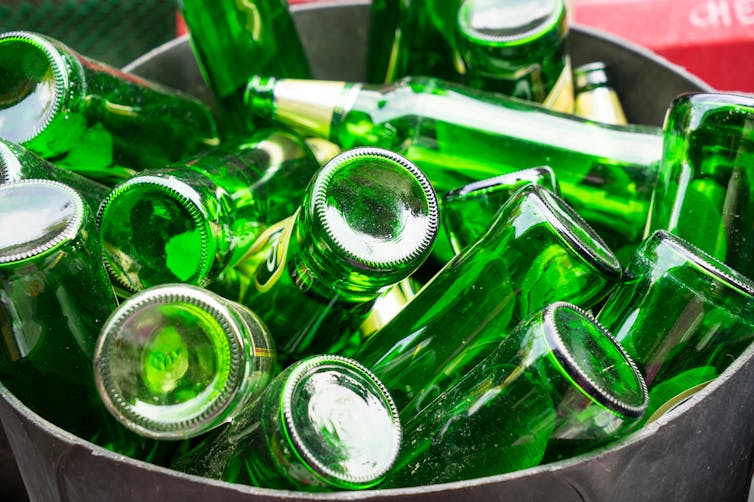
The new Mean Girls is a fresh take on a classic teen comedy, this time appealing to a new audience: Gen Z. So how does the film paint the new generation? As one that loves to drink.
Mean Girls is filled with references to and depictions of alcohol. There’s drinking at parties, a scene where Cady gets drunk, and even a joke about a vodka-filled inhaler.
On-screen alcohol exposure is an important issue, particularly when underage drinking is shown. Greater on-screen exposure to alcohol is associated with an increased risk of beginning to drink alcohol at a younger age, and increased likelihood of weekly drinking and binge drinking among young people.
But despite the attempts to appeal to a young audience, the new Mean Girls film doesn’t reflect most of Gen Z’s attitudes towards drinking. In fact, research shows young people are increasingly rejecting alcohol, especially when compared to older generations. So why does alcohol retain a chokehold on our screens?
Drinks All Round?
A 2023 Cancer Council report found in 1996, 90% of Australian secondary school students aged 16–17 reported drinking alcohol in the past year. By 2023, this had dropped to 64%.
The report also found recent risky drinking – that is, consuming five or more alcoholic drinks on any day within the past week – among 16- and 17-year-olds has particularly declined, dropping from 22% in 1996 to 9% in 2023.
This trend isn’t unique to Australia. Gen Z-ers across the world are drinking much less alcohol than previous generations.
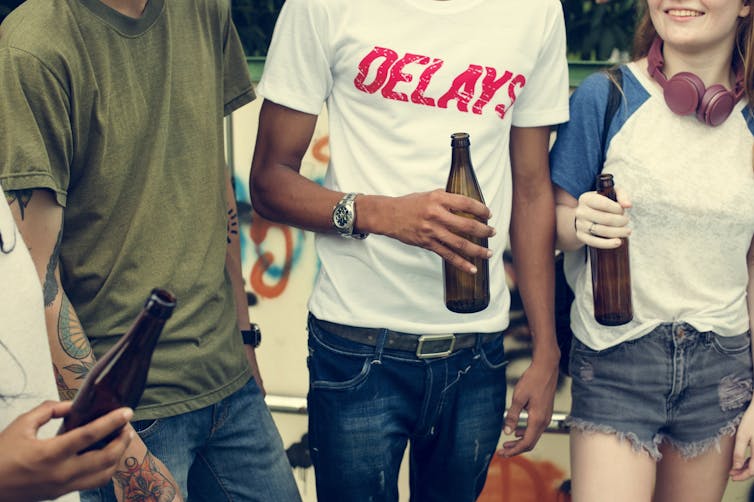
But we’re yet to see this decline reflected in films and television targeting young people.
A 2019 analysis found alcohol remains the most frequently portrayed substance in films, and substance use (including alcohol) on screen was more often portrayed as having either neutral or rewarding consequences (such as increased popularity), in comparison to unrewarding consequences (such as vomiting or headaches).
One-fifth of teenage characters in PG-13 (roughly equivalent to an Australia M rating) and R-rated films are shown drinking alcohol, and nearly half of G-rated animated films show alcohol use.
One prime example is Ratatouille (2007). This Disney-Pixar film is so beloved by Gen Z it got turned into a TikTok musical. The film shows alcohol a whopping 60 times, even though it’s rated PG and aimed at children.
Alcohol imagery isn’t limited to film or broadcast TV. Recent research found more alcohol in streaming content from Amazon and Netflix than in broadcast television.
And despite the sheer volume of on-screen alcohol depictions, our research shows films depict alcohol exposure nearly five times more frequently than the average Australian adult thinks they do.
Lack Of Regulation – And Young Filmmakers
Locally, alcohol exposure in films is governed by the Australian Classification Board. The board considers six classifiable elements, such as sex and violence, when deciding on a rating.
Currently, alcohol is not explicitly represented among these, although excessive consumption and alcohol dependency is considered under the element of “themes”.
This has an impact: alcohol brand placements have nearly doubled in the last two decades, and alcohol brands appear in 41% of children’s films.
When we consider why young people are so often shown drinking in films, it’s not just a matter of what can be shown under Australian regulations. Film and television is largely not yet directed, written or created by Gen Z-ers. A lack of representation can lead to young people’s perspectives not being understood, or unaccounted for.
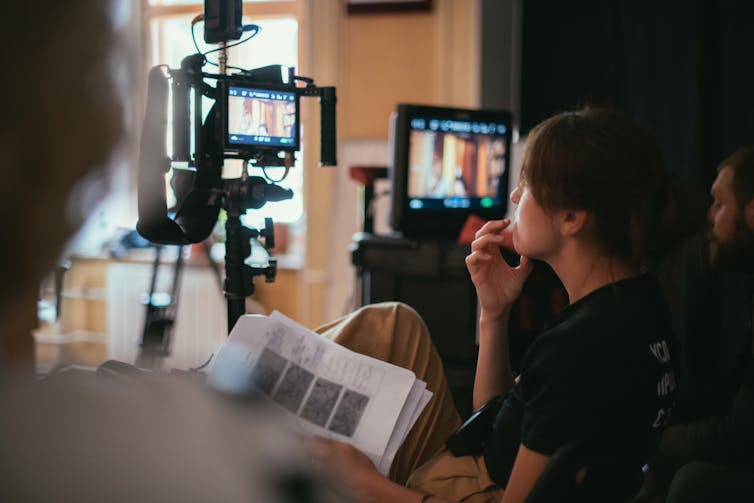
The mismatch between Gen Z’s drinking habits and the overexposure of alcohol in films is also surprising when we consider most adults in our research were supportive of a range of policies restricting alcohol exposure in films. A significant number of adult Australians support policies de-glorifying alcohol consumption and beverages in films – especially in films aimed at children.
Australia intends to reform its National Classification Scheme. Perhaps these changes – along with Gen Z entering the film industry themselves – will allow for young people’s actual drinking habits to be reflected more accurately on screen. ![]()
Maree Patsouras, , La Trobe University; Amy Pennay, Research Fellow, Centre for Alcohol Policy Research, La Trobe University; Benjamin Riordan, Research fellow, La Trobe University, and Emmanuel Kuntsche, Director of the Centre for Alcohol Policy Research, La Trobe University
This article is republished from The Conversation under a Creative Commons license. Read the original article.
Gail Jones’ One Another explores the life of Joseph Conrad and the transformative potential of reading

Joseph Conrad (1857-1924), the famous Polish-born author of Heart of Darkness, Lord Jim and The Secret Agent, among many other novels and short stories, is not a writer usually associated with Australia. Yet lying just off the banks of the River Derwent near Hobart there remains a haunting reminder of his presence – the partially submerged wreck of the Otago, a sailing ship he once captained when he was a roaming seafarer serving in the British merchant navy.
As a mariner, Conrad visited Australia numerous times (though, ironically, not Tasmania). The Otago, as with other ships on which he served, became the subject of many of the works he wrote in England when his sailing career ended.
A fictionalised version of Conrad, the man and the writer, forms half of Gail Jones’s new novel One Another. Significantly, Jones wrote the novel in Hobart, while taking up a writing fellowship at the University of Tasmania.
The Otago wreck is a pivotal image in the book, providing a symbolic meeting-space between the novel’s two main characters and marking a place where the past intrudes, in a bodily way, into the present.
A Tale Of Two Lives

One Another interleaves the life of the celebrated writer (born Jósef Teodor Konrad Korseniowski) with that of Helen Ross, a young Australian postgraduate student of literature, who is writing her PhD thesis at Cambridge University on “Cryptomodernism and Empire” in the works of Joseph Conrad.
The narrative moves between them, reconstructing fragments of Conrad’s life and works, while narrating Helen’s attempts to write her thesis in the middle of her increasingly toxic relationship with Justin, a psychologically damaged fellow Australian.
Although these two lives are separated by time and distance, the narrative gradually and non-chronologically reveals parallels and crossings between them. The motif of journeying and outsider status is shared by both.
The orphaned Joseph is helped by his Uncle Tadeusz to leave Poland on the death of his father. He embarks on his peripatetic life, first in the French and then the British merchant navy. Later, he becomes a British subject.
Helen leaves what she sees as the constriction of Hobart to study in England, the colonial centre, in 1992. Although the text only occasionally draws attention to specific dates, the year is significant. While overseas, Helen hears of the Australian High Court’s Mabo decision, something that she recognises as “momentous”.

This underlines another common thread between the two characters: their awareness of the violence of colonialism. Each has been complicit, however tangentially, in imperial and colonial practices. Conrad witnessed the “historical cruelty” in the Belgian Congo in his role as a steamboat captain on the Congo River. Helen is a settler-colonial Australian from Tasmania, a site of violent dispossession of its Indigenous peoples.
As dislocated “foreigners” in Britain, Joseph and Helen both experience British culture as unfriendly. Joseph never loses his Eastern European accent and is self-conscious about his “broken English”; Helen’s Australian accent is regarded as “uncouth”.
Both characters are writers, and both lose a crucial manuscript – a traumatic loss that has apparently afflicted a number of other authors listed in the text. Joseph leaves the only copy of his first book, Almayer’s Folly, in a café in Berlin’s Friedrichstrasse train station; Helen leaves her thesis on a train.
Reading As Encounter
Helen’s “profound attachment” to Conrad has its childhood beginning when her father takes her on an unexpected road trip to show her the wreck of the Otago. But Helen does not attribute her interest in the writer to this sighting of the sunken ship. It is not an “epiphanic moment” or a “neat or mythic beginning”. Rather, as Jones writes: “What began was a kind of dreaming towards this emptied body, the boat.”
Helen’s absorption of Conrad’s life and work is indicated towards the end of the novel when she mirrors his language of the sea, alluding to a dream she has had as
the dark shipwreck that she has been caught in. No shape here: just her own mind tossed and unsettled.
This oceanic language of global and personal flow is a feature of the novel. In less skilful hands, it could become somewhat predictable, but Jones’s poetic way with words and imagery keeps it fresh and relevant.
To read a Gail Jones novel is to become absorbed in narrative patterns of looping time, often cinematic imagery, and interrelated literary allusions. The motif of immersion is particularly apt in this novel, not only for its connection to Joseph’s ocean voyaging and the references to a number of drownings and near-drownings.
The immersive experience of reading itself is a strong thematic thread, as it is in much of Jones’ work. It is evoked as an intimate aesthetic and philosophical encounter between reader and writer, or reader and text – and is perhaps another implication of the “one another” of the title.
The novel gradually introduces the reader to the complex pasts of its two main characters and, in the case of Joseph, his literary works. One Another includes some wonderfully perceptive and often intriguing short analyses of Conrad’s novels and short stories. These interpretations draw out the thematic connections between the stories of Joseph and Helen: loss, loneliness, friendship, violence.
There is one section that simply lists, in order, all the words from Heart of Darkness that have the negative prefixes “in-”, “im-” and “un-”. Other sections enumerate details of Conrad’s life and world under headings such as “Illnesses he suffers”, “The body” and “Accidents”.
These snippets can be read as extracts from the handwritten index cards that Helen has compiled for her thesis. Early on, she describes her lost manuscript as “fragments of a life intersected by literary-critical notations” – an accurate description of parts of the novel we are reading.
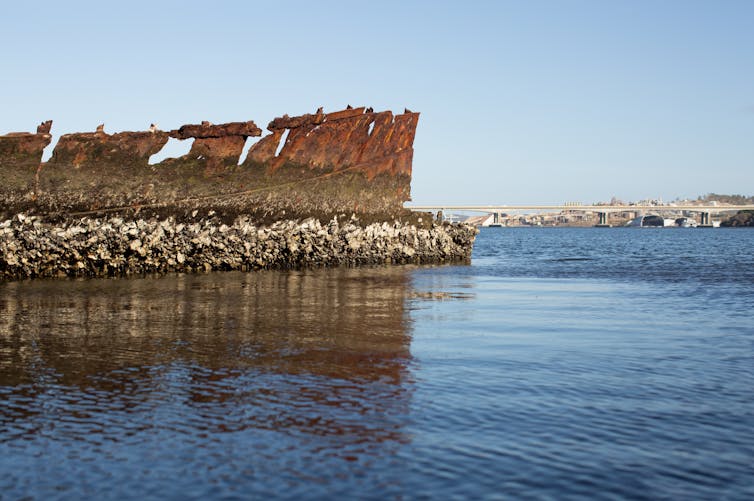
Creative Biography
In many ways, then, One Another is a novel about the transformative potential of reading. It expresses the sense of intimate connection poetically, describing Helen’s “conjuring” of Conrad as “a flow into fiction’s otherness that welcomed and accommodated her”.
Jones has based the events in Joseph’s life on Conrad’s autobiographical writings in A Personal Record, his published letters, and numerous biographies and works of literary criticism. But the novel is an imaginative reconstruction of significant moments in Conrad’s world, not a historical study.
The genre of biofiction is one in which Jones has particular skill. Her early short-story collection Fetish Lives (1997) reimagines in fictional form the lives and deaths of famous writers and artists. In her recent novel, Salonika Burning (2022), she rewrites the World War I experiences of four real-life characters, including Australian writer Stella Miles Franklin, as a fictional thought experiment. But as she writes in the author’s note, Salonika Burning “takes many liberties and is not intended to be read as history”.
In One Another, Jones is similarly inspired by historical events and people to write her own version of their interior lives – their thoughts and emotions, as well as of their bodily being.
The novel begins, for example, with Joseph’s dream of his parents, “the unquiet dead”, and ends with a moving imagining of his dying thoughts, as he “sinks as he has always wanted to sink, washed by kind waves, closed over by sway, hearing no language at all but that of the ocean”.
Unlike a conventional biography, One Another suggests that “for both Joseph and his biographers, there will always be the element of the hidden”. And as Helen comes to realise, the life of another is always only partially accessible:
Seeing in fragments. That was how she now thought of it. Seeing one’s own life, and another’s […] those forms of shaped meaning that might found the merest understanding.
This fractured vision – referenced in the text’s approximation of T.S. Eliot’s line in The Waste Land about fragments “shored against ruins” – implies a modernist sensibility, whereby fragmentation can create its own “forms of shaped meaning”.
Once again, Jones has written a richly evocative novel that warrants attention, both for its fascinating subject-matter and for its outstanding writerly qualities. One Another adds to her already impressive, diverse and highly-regarded oeuvre. Importantly, too, it is also a novel that adds to our understanding of the processes of writing and reading the lives of others – and one that situates Australian literature within a globalised world.![]()
Sue Kossew, Emeritus Professor of Literary Studies at School of Languages, Literatures, Cultures and Linguistics, Faculty of Arts, Monash University
This article is republished from The Conversation under a Creative Commons license. Read the original article.
We discovered a ‘gentle touch’ molecule is essential for light tactile sensation in humans – and perhaps in individual cells
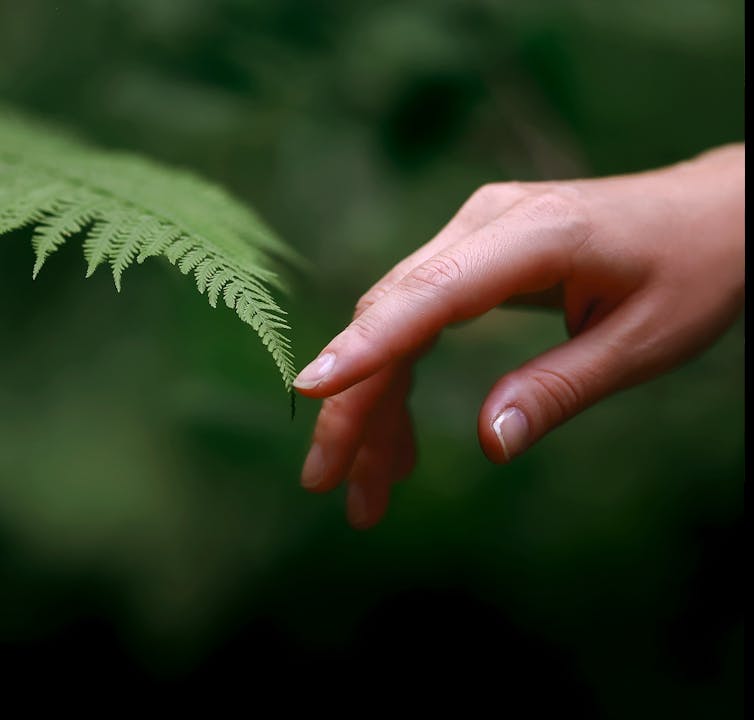
You were probably taught that we have five senses: sight, sound, smell, taste and touch. This is not quite right: “touch” is not a single sense, but rather several working together.
Our bodies contain a network of sensory nerve cells with endings sitting in the skin that detect an array of different physical signals from our environment. The pleasant sensation of a gentle touch feels distinct from the light pressure of our clothes or the hardness of a pencil gripped between our fingers, and all of these are quite different from the pain of a stubbed toe.
How do these sensory neurons communicate such a wide range of different inputs?
In new research published in Science, the two co-authors of this article and our colleagues have found a force-sensing molecule in nerve cells called ELKIN1, which is specifically involved in detecting gentle touch. This molecule converts gentle touch into an electrical signal, the first step in the process of gentle touch perception.
How We Sense Gentle Touch
Sensing gentle touch begins with tiny deformations of the skin due to a light brush. While they may not seem like much, these deformations generate enough force to activate sensory molecules that are found in specialised nerve endings in the skin.
These molecular force sensors form a pore in the surface of the cell that is closed until a force is applied. When the cell is indented, the pore opens and an electrical current flows.
This electrical current can generate a signal that moves along the sensory nerve to the spinal cord and up to the brain.
Our new research, led by Gary Lewin and Sampurna Chakrabarti from the Max Delbruck Center in Berlin, showed the force sensor ELKIN1 is necessary for us to detect very gentle touch.
They found mice lacking the ELKIN1 molecule did not appear to sense a cotton bud being gently drawn across their paw. The mice retained their ability to sense other environmental information, including other types of touch.
Different Molecules For Different Kinds Of Touch
This new finding reveals one reason we can sense multiple types of “touch”: we have multiple, specialised force-sensing proteins that can help us distinguish different environmental signals.
ELKIN1 is the second touch-receptor molecule discovered in sensory neurons. The first (PIEZO2) was found in 2010 by Ardem Patapoutian, who was later awarded the Nobel Prize for the work. PIEZO2 is involved in sensing gentle touch, as well as a sense known as “proprioception”. Proprioception is the sense of where our limbs are in space that helps us regulate our movements.

Identifying these force-sensing molecules is a challenge in itself. We need to be able to study nerve cells in isolation and measure electrical currents that flow into the cell while simultaneously applying controlled forces to the cells themselves.
Do Cells Feel?
While much of our research studied mouse neurons, not all scientific data obtained from mice can be directly translated to humans.
With team members at the University of Wollongong, one of us (Mirella Dottori) tried to determine whether ELKIN1 worked the same way in humans. They reprogrammed human stem cells to produce specialised nerve cells that respond to “touch” stimuli. In these human cells, ELKIN1 had similar functional properties of detecting touch.

While this research expands our understanding of how we make sense of the world around us, it also raises an additional, intriguing possibility.
ELKIN1 was first identified by one of us (Kate Poole) and her team at UNSW, with Gary Lewin and his team, while studying how melanoma cells break away from model tumours and “feel” their way through their surroundings. This could mean these tiny molecular force sensors give not only us, but our individual cells, a nuanced sense of touch.
Future research will continue to search for more molecular force sensors and endeavour to understand how they help our cells, and us, navigate our physical environment.![]()
Kate Poole, Associate Professor in Physiology, UNSW Sydney and Mirella Dottori, Professor, University of Wollongong
This article is republished from The Conversation under a Creative Commons license. Read the original article.
Drinking olive oil: a health and beauty elixir or celebrity fad in a shot glass?

In the ever-changing world of wellness trends and celebrity endorsed health fads there is a new trend on the scene: daily olive oil shots.
Celebrities such as Kourtney Kardashian, Beyonce, Gwyneth Paltrow and Jennifer Lopez all extol the virtues of swigging extra virgin as well as slathering it on their skin, crediting olive oil for their glowing complexions.
Lopez even based her JLo Beauty brand around the kitchen staple, claiming that her age-defying looks were not the result of botox or surgery but the family beauty secret: moisturising with olive oil.
And she’s in good company. Hollywood star Goldie Hawn reportedly drinks olive oil before bed and uses it topically as a moisturiser, while beauty icon Sophia Loren really goes to town by bathing in the stuff.
While these celebrities swear by the skin beautifying properties of olive oil, some skin types should give it a swerve. Those prone to acne or eczema, for example, might find the olive oil exacerbates their problems. Some dermatologists warn against using it as skin care altogether – bad news for JLo.
Thanks largely to celebrity promotion, drinking olive oil has now become a worldwide TikTok sensation. Viral videos show influencers tossing back shots of cult olive oil brands, and proclaiming a wide range of health benefits from improving digestion to clearing up acne.
Celebrity and influencers are sold on liquid gold but what about the rest of us? Can drinking olive oil really work on miracles for our health?
The Benefits Of Olive Oil
There’s no doubt that olive oil is full of good stuff. It’s high in polyphenols and antioxidants, which have protective qualities for the body’s tissues. It’s also a rich source of essential fatty acids, including oleic acid, which is known for lowering cholesterol so reducing the chances of heart disease.
Research has found that the inclusion of olive oil in the diet shows encouraging effects in a variety of inflammatory and medical diseases and can support weight management if used correctly.
Replacing butter, margarine, mayonnaise and dairy fat with olive oil has been linked to a lower risk of mortality. There’s also evidence to suggest that the protective compounds in olive oil may help guard against cancer, dementia and support the liver and kidneys.
But none of this is new information to health professionals. The health benefits of extra virgin olive oil are well researched and nutritionists have promoted olive oil as a swap for saturated cooking fat for years.
After all, the Mediterranean diet has been touted as one of the healthiest diets in the world for decades. The diet itself can vary from region to region, but virgin olive oil is a consistent element. It’s used as the main source of cooking fat and included in everything from salad dressings to bread.
Can Fat Be Healthy? Yes And No
Fats are crucial for a balanced diet, aiding in the absorption of fat-soluble vitamins A,D,E,K and enhancing the nutritional value of meals.
However, fat of any kind is also dense in calories and excessive consumption can lead to weight gain. According to the World Health Organization, to prevent unhealthy weight gain, adults should limit their intake of fat to 30% of total energy intake with no more than 10% coming from saturated fats.
Two tablespoons of olive oil – the standard amount in the shots taken by celebrities and social media influencers – contain 28g of fat (238 calories) and 3.8g of saturated fat equating to 19% of the recommended daily intake.
That daily shot of extra virgin, then, might not be the best idea. Adding small amounts of olive oil to meals throughout the day is a more balanced – and appetising – approach to incorporating healthy fats into your diet.
But what about Kourtney Kardashian’s claim that: “It’s recommended to consume extra virgin olive oil in the morning on an empty stomach so the oil can coat your system and neutralize your stomach walls for optimal benefits?”
Some brands have also echoed the idea that consuming olive oil on an empty stomach offers unique health benefits. But no. There’s no scientific evidence to suggest this is true.
For a healthy but more satisfying snack, Kourtney might try including a handful of olives into her daily diet. Olives offer the same rich array of nutrients, including vitamins E, A and K, alongside essential minerals such as iron, calcium, magnesium, potassium and amino acids.
Unlike olive oil, olives have the added benefit of a high fibre content. The combination of fat and fibre enhances feelings of satiety, making olives a nutritious addition to the diet.![]()
Hazel Flight, Programme Lead Nutrition and Health, Edge Hill University
This article is republished from The Conversation under a Creative Commons license. Read the original article.
An ode to the social realism of ‘boring’ lyrics – from The Kinks to The Streets
Glenn Fosbraey, University of WinchesterThe majority of chart artists content themselves with writing lyrics about relationships, breakups or their lavish lifestyles. Take the current top 10 song, Prada by Cassö, RAYE & D-Block Europe. As one might expect from the title, it speaks of designer clothes, fancy hotels and expensive cars. Other artists, however, satisfy themselves with something a little less glamorous – songs about the everyday, with lyrics about the ordinary and banal.
Social and literary realism have long been valuable tools in detailing the everyday lives of people, and they have been a staple in popular music for decades. When The Kinks released The Kinks Are the Village Green Preservation Society in 1968, it was perhaps the first album to actively focus on the mundane, everyday aspects of life as lived by the average person in Britain.
It was about as far removed as it was possible to be from the psychedelic introspection that was popular among the biggest selling bands of the time (led, of course, by The Beatles’ Sgt. Pepper’s Lonely Hearts Club Band). The Kinks Are the Village Green Preservation Society delighted in detailing the smaller joys of life, with songwriter Ray Davies singing about strawberry jam, draught beer, custard pies and Desperate Dan in songs that gave an insight into a world that was familiar and relatable to its listeners.
The Smiths To The Streets
The Kinks started a trend. In the 1980s, The Smiths chose the name to be as unglamorous and bland as possible, positioning themselves as the antithesis to the Spandau Ballets and Orchestral Manoeuvres in the Darks of the music world. Lead singer Morrissey told an interviewer: “It was the most ordinary name and I thought it was time that the ordinary folk of the world showed their faces.”
With lyrics that portrayed a life of rented rooms, high-rise estates and motorway service stations, Morrissey was writing lyrics about unexceptional, everyday experiences that jarred with the glitz and glamour the New Romantic bands were singing about.
And while The Smiths provided an alternative to the pomposity of early 1980s music, The Streets’ debut album Original Pirate Material was released in 2002 into a UK music market dominated by cheesy lyrics like “I’m flying high ‘cause your love’s made me see” and “Baby I would climb the Andes solely to count the freckles on your body”. Its lead vocalist Mike Skinner instead wanted “to write good lyrics about contemporary British life”.
His songs about Playstations, London Underground travel cards, cans of Carling, bottles of Smirnoff Ice, smoke-reeking jeans, McDonald’s and KFC documented the lives many of us were actually living.
When COVID swept the world in 2020 and we were confined to our houses, gazing out of our windows at a world that was off limits, songs with everyday lyrics became even more important.
After all, did we really want to be listening to Ed Sheeran’s boast about how he’d found love in a bar when we couldn’t go to bars, or Dua Lipa going on about how she was once again dancing her ass off when we couldn’t go to clubs? What many of us really wanted were lyrics that showed solidarity with our situation and represented the lives we were living, with all the glamour, excitement and gloss wiped off.
Lyrics to 2021 songs like Niko B’s Who’s That, What’s That? (“Copped a Big Mac, milkshake and some large fries … take the gherkin out of the inside”) or Lady Leshurr’s Quarantining (“I went Sainsbury’s just to get bog roll”) became poignant.
Even love song supremo Paul McCartney got on board, pondering in the track When Winter Comes (2021) how he must “dig a drain by the carrot patch” and “fix the fence”. Not a hint of “patron”, “poolside drinking”, or “Margarita rounds” in sight (sorry, Drake).
The Future Of The Banal
Sixty years since champions of the everyday The Kinks came onto the scene, the ordinary lyric is alive and well. Mike Skinner is back releasing albums as The Streets after a decade-long hiatus, and new pretenders to the throne of the mundane, Leeds’s Yard Act, are about to release their second album Where’s My Utopia.
The band have been praised for how their songs have documented modern life in Britain. With lyrics like: “We’re gonna put Poundshop terracotta frogs everywhere / And wrap solar power fairy lights round the gutter … I got a prosecco o’clock poster half price in Ikea”, they continue to fly the flag of joyous banality.
Songs about love, breakups and extravagance will undoubtedly continue to dominate the charts, but in among it all, it seems, there’s always room something a little more ordinary.

Looking for something good? Cut through the noise with a carefully curated selection of the latest releases, live events and exhibitions, straight to your inbox every fortnight, on Fridays. Sign up here.![]()
Glenn Fosbraey, Associate Dean of Humanities and Social Sciences, University of Winchester
This article is republished from The Conversation under a Creative Commons license. Read the original article.
Alopecia in art history: the many ways women’s hair loss has been interpreted
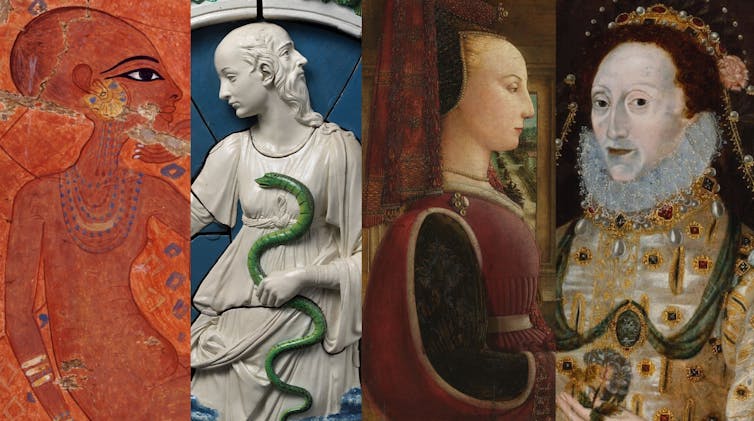
At least 40% of women experience hair loss or alopecia over their lifetimes. This could be alopecia areata (patchy hair loss), traction alopecia (strained hair loss) or another form. The different ways that women’s hair loss has been depicted across art history demonstrates the many different ways it has been interpreted over the years.
In 16th and 17th century Britain, for example, women’s alopecia was sometimes interpreted as retribution for sins, including adultery.
Some historical art, however, depicts a more neutral, or even positive, attitude towards women’s alopecia. In religious or mythical art, it was sometimes idealised as divine.

Madonna and Child, painted in the 15th century by Italian Rennaisance artist Carlo Crivelli, shows Jesus and Mary embracing in a gold, stylised setting. The pair sit behind a religious altar surrounded by ripe fruit and adorned with halos. Madonna has a high forehead and her blonde hair recedes, particularly on her right temple.
This association between alopecia and divinity is echoed in a work by another Renaissance Italian artist, Cosmè Tura. His Madonna and Mary Magdalene (circa 1490) depicts both mother and child with prominent foreheads.

A glazed terracotta piece created by the Italian sculptor Andrea della Robbia in 1475 features Prudence, a human embodiment of Christian morality, as a balding two-headed person.
Baldness in women has been connected to the divine for various reasons. It took the emphasis off of personal appearance in favour of deeper, more spiritual, priorities. But intentional hair removal played a role too. For some religious people, such as Buddhist nuns and Haredi Jewish wives, a bald head is thought to be purer and shaving can represent a regular, sacrificial ritual.
Ancient Depictions

Artwork on the walls of the tomb of the ancient Egyptian pharaoh, Akhenaten who ruled from 1351 to 1334BC, depicts two of his daughters, naked, with bald heads. Head shaving as well as natural baldness was common among the ancient Egyptians, including women.

In fact, ancient Egyptians had distinct terms for female and male alopecia. This attests to just how common baldness, head shaving and wig wearing were for both sexes in ancient Egypt.
And it isn’t just Egypt. Partial and full head shaving has historically been common among women across sub-Saharan Africa. As one traveller observed among the inhabitants of the 18th century Kingdom of Issini (modern-day Ghana): “Some only shave one half of the head … Others leave broad patches here and there unshaved.”
Medieval And Renaissance Alopecia
The 15th century painting, Portrait Of A Woman With A Man At A Casement, by the Italian artist, Fra Filippo Lippi, features an aristocratic profile of a woman facing a man. She has a prominent forehead and high hairline.

The appearance of recessed frontal hairlines in Medieval and Renaissance Europe may have been fashionable and even considered a sign of intelligence, encouraging customs of forehead shaving and eyebrow plucking.
The 16th century queen of England, Elizabeth I, was often painted in this way. One undated oil portrait of the British monarch depicts her in bejewelled robes, with a pearl emblazoned veil and a prominent forehead.
The removal of female bodily hair at this time, including on the forehead, wasn’t just a matter of fashion. It also arguably arose due to patriarchal ideas that women’s body hair was dirty and even dangerous to men.
Modern Alopecia
Adverts and research today tend to discuss hair loss exclusively through medical terms, as a kind of detrimental disease. A recent BBC article refers to people with alopecia areata as “patients” and their experience of it as “profoundly challenging”. This certainly reflects some experiences, but not those who interpret their hair loss more neutrally, or even with pride.
Pharmaceutical and cosmetic products are promoted as “necessary” treatments. A newly licensed drug, litfulo or ritlecitinib, has been hailed this week as the “first treatment” and “medicine” for alopecia. But as many forms of alopecia are not delimiting and as the “treatments” on offer have limited efficacy and potential safety issues, this should not be the default response. For example, the European Medicine Agency notes that ritlecitinib results in 80% hair regrowth but only for 36% of people taking it. About 10% are at risk of diarrhoea, acne and throat infections.
Another study noted that similar alopecia drugs, that operate through immunosuppression, only seem to work if they are taken continuously, yet their long-term safety has not been established.
Depictions of alopecia throughout art history are a reminder of the many complicated ways women’s hair loss has been viewed. Sometimes weaponised as a way to shame women, sometimes venerated as a sign of the divine, the truth is that hair loss really indicates nothing about a woman’s worth, morality or status.
But historical depictions of women’s alopecia and baldness provide hope. They show that alopecia has been conceptualised differently at different times. This means the current framing of alopecia as an inevitably disadvantaging disease in need of certain “treatments” might be biased too. They suggest if our societal interpretation of alopecia improves (as something that shouldn’t be stigmatised), then so too may the individual experience (as something that shouldn’t be dreaded).

Looking for something good? Cut through the noise with a carefully curated selection of the latest releases, live events and exhibitions, straight to your inbox every fortnight, on Fridays. Sign up here.![]()
Glen Jankowski, Senior Lecturer in the School of Social Sciences, Leeds Beckett University
This article is republished from The Conversation under a Creative Commons license. Read the original article.
If you get your financial advice on social media, watch out for misinformation

When your parents had financial troubles or questions about planning for the future, they may have sought the help of a financial adviser, their bank, or other professional. Today, many people turn to social media.
TikTok in particular has become a hub of financial advice, from money saving hacks and personal stories to investment and stock market advice. But this information is not always reliable. A recent report found that more than 60% of videos shared using the hashtag #StockTok contain inaccurate or misleading information.

This article is part of Quarter Life, a series about issues affecting those of us in our twenties and thirties. From the challenges of beginning a career and taking care of our mental health, to the excitement of starting a family, adopting a pet or just making friends as an adult. The articles in this series explore the questions and bring answers as we navigate this turbulent period of life.
You may be interested in:
Future graduates will pay more in student loan repayments – and the poorest will be worst affected
Four ways you can design social media posts to combat health misinformation
Management lessons from Ted Lasso: the importance of clear goals and positive feedback
These days young people experience greater financial insecurity than previous generations. So it’s not surprising that many are anxious about financial matters and want to learn more about money.
I’ve conducted research with young people aged 18-24 years old about their financial and borrowing habits. Around half of the 80 people my team and I spoke to had used social media for money advice and financial guidance.
Young People’s Money Beliefs
We observed several trends in the money messages they were absorbing. Many understood the importance of saving but there was a great interest in investing. Some perceived that if they didn’t invest in the stock market or cryptocurrency, they would be at a significant disadvantage compared to their peers. One 24-year-old participant described investing as a “rat race”, and said that politicians and news coverage of inflation added to the pressure.
Many interviewees had strong views on home ownership – property was viewed as “an investment”, while renting was seen as “wasting” money. Some we spoke to suggested that greater protection from significant and unaffordable rent increases was needed, so that they could have an opportunity to save more.
Some reported feelings of “fomo” (fear of missing out) if they didn’t invest in cryptocurrency. On social media, they saw influencers promoting their luxury lifestyles, shopping hauls, holidays and new cars supposedly funded by their “savvy” investments. However, our participants were also aware that such content could be a ploy to get people to pay for a course on how to invest, which funded the influencers’ lifestyle rather than crypto. One participant said:
Even my [younger] sister, she’s even investing in things like crypto coins, and she knows nothing about it, so I think it’s the younger generation, everyone knows about it, but I don’t know enough about it … to invest confidently.
Investing in something just because others are is not a reason to do the same. Not understanding the risks involved in investing as well as the potential benefits is dangerous. Cryptocurrency is often touted as an easy way to make money on social media because it is highly volatile. But, because the value can rise and fall dramatically, investors can lose all their money.
Researchers have argued that regulators should track emerging trends on #FinTok and #StockTok to proactively regulate consumer finance information and products where needed.
Buy Now Pay Later (BNPL) is an example of an unregulated financial product promoted on social media that can cause financial harm if people do not understand that it is a credit product and how they should use it. Evidence suggests that people are paying off their BNPL loans using credit and deepening their debt.
Sifting Through Financial Advice Online
As I found in my research, young people do not know where to go for financial advice – but this isn’t necessarily their fault. The UK financial services landscape is hugely complex, so it is not surprising if you are not sure who to trust or where to get accurate information.
The independent, government-backed website MoneyHelper is a good place to start. They have specifically created a guide for young people on how to support themselves financially and produced a beginners guide to investing.

MoneyHelper is active on Twitter, Facebook and YouTube, but could expand to TikTok and Instagram, meeting young people where they are and helping them make good financial decisions.
TikTok has urged users to #FactCheckYourFeed, to encourage people to use critical thinking when it comes to news and other informative content on the app. When engaging with financial advice, this can mean asking yourself the five w’s – who, what, when, where and why:
- Who is this person? Are they a regulated financial advisor?
- What are they saying?
- When was this posted?
- Where are they getting their information?
- Why are they sharing this? Is it an ad or are they asking me to sign up to something?
Think about your financial goals and what small steps you can take to help you reach those goals. For example, if you are under 40 years of age, you can save £4,000 tax-free each year in a Lifetime ISA where the government will add a 25% bonus (up to £1000) each year.
Before you make any financial decisions, either talk to someone about your finances before you take action or look at the resources available at independent, charitable organisations such as MoneyHelper, Stepchange and Citizens Advice.![]()
Lindsey Appleyard, Assistant Professor, Coventry University
This article is republished from The Conversation under a Creative Commons license. Read the original article.
Young people are losing sleep over energy drinks – but a ban won’t be enough to protect them

There’s no calming the buzz around energy drinks. And it’s not just because of their notoriously high caffeine content.
In the first few weeks of 2024, the UK Labour party proposed including a ban on energy drinks for under-16s in their election manifesto due to concerns about their health impact. Soldiers belonging to the Blues & Royals – part of the king’s ceremonial bodyguards, the Household Cavalry – have also been ordered to stop consuming energy drinks.
Since then, one of Hollywood’s highest paid actors, Dwayne “The Rock” Johnson has launched a new campaign for his “healthy” energy drink brand, Zoa. No doubt Johnson is hoping to capitalise on the thirst for energy drinks that helped Prime, a brand promoted by popular but controversial YouTube personalities KSI and Logan Paul, achieve cult status among school-aged children, especially boys.
But young people’s consumption of energy drinks isn’t likely to be completely driven by influencer trends. If we want to help young people suffering the health consequences of consuming energy drinks too often, regulation is no doubt part of the picture. But we also need to examine the root causes of young people’s attraction to energy drinks.
Recent evidence suggests that in the UK up to a third of children and young adults consume energy drinks regularly. A 2016 systemic review of energy drink consumption by children and young people found boys are more likely to consume higher amounts than girls.
Energy drinks can contain as much as 505mg of caffeine per serving (equivalent to over fourteen cans of cola), with most containing around 160mg per can. For comparison, a typical 250ml cup of coffee contains about 90-140mg.
Owing to this high caffeine content, the consumption of energy drinks has been linked to poor sleep quality. Research has found that the drinks may also contribute to mental health issues among young people, including anxiety, stress, irritability, and depression. All of which are almost certainly linked to disrupted sleep patterns.
So why are young people so keen on energy drinks? Academic research shows that reasons for consumption include enjoying the taste, as a measure to deal with fatigue and boost mood – and to improve mental and sporting performance.
Another common use for energy drink is as a mixer. Energy drinks are often combined with alcohol and consumed at parties to give an extra buzz. The energy drink counteracts the depressive effect of the alcohol so the drinker feels more alert than they might otherwise.
But this trend also has its dangers. People can end up drinking more alcohol than they realise because its effects are suppressed by the energy drinks.
Branding, marketing and peer influence encourage their use among young people, many of whom are unaware of possible harms of energy drink usage. A UK study conducted in 2022 found that only about half of children knew that energy drinks contained caffeine.
Young People Lacking In Sleep
Though some academic studies have reported a link between young people’s use of energy drinks and a lack of sleep, the exact relationship between the two isn’t clear.
Numerous factors such as night-time screen use and social media scrolling, academic pressures, and mismatches between school start times and natural sleep-wake rhythms conspire to see many of the world’s young people falling short of recommended sleep targets.
Whetever the cause of young people’s lack of sleep, energy drinks offer a fast and convenient way to counteract the effects of poor sleep on mood and day-to-day functioning. It’s possible, then, that young people can become trapped in vicious cycles of energy drink use, poor sleep, and deteriorating mental health.
Energy drink use has also been linked to attention deficit hyperactivity disorder (ADHD). However, while some acute effects of energy drinks, such as increased activity, resemble ADHD symptoms, it is currently unclear whether there is any long term increased risk of developing ADHD as a result of energy drink consumption.
Young people with ADHD symptoms might also be more likely to use energy drinks as a form of “self-medication” or because they enjoy the feeling or lower impulse control. As young people with ADHD are already more likely to experience sleep difficulties, they might also be an especially vulnerable group for whom energy drink use could exacerbate pre-existing sleep issues.
Bans And Regulation Are Only Part Of The Answer
In light of the accumulating evidence for the harms of energy drinks, several countries have started to regulate or outright ban their sale minors. In Lithuania and Turkey, for example, sales of energy drinks to under 18s is not allowed.
In the UK, a 2018 social media campaign spearheaded by celebrity chef Jamie Oliver led to many supermarkets implementing a voluntary ban on sales to under-16s. The following year, the UK government said they would ban energy drinks for under-16s in England. But the ban has not been implemented.
Bans and regulation can help to change behaviour, but they are usually not enough on their own. Equipping young people with the knowledge and skills to manage their sleep and energy cycles will play a crucial role in tackling the global shortage of sleep among young people.
Most crucial of all, we need to listen to young people and understand their motivations for using energy drinks so that we can design effective strategies to support them to reduce their consumption.![]()
Aja Murray, Reader in Psychology, The University of Edinburgh and Ingrid Obsuth, Senior Lecturer in Clinical Psychology, The University of Edinburgh
This article is republished from The Conversation under a Creative Commons license. Read the original article.
Books Of The Month - March 2024: Oscar And Lucinda + Popular Mechanics ~ 1946
Oscar And Lucinda
by Peter Carey
Publication date 2011
Oscar Hopkins is an Oxford seminarian with a passion for gambling. Lucinda Leplastrier is a Sydney heiress with a fascination for glass. The year is 1864. When they meet on the boat to Australia their lives will be forever changed ... Daring, rich, intense and bizarre, Peter Carey's Booker prize-winning novel is a brilliant achievement - a moving love story and a historical tour de force that is also powerfully contemporary - Pittwater mentioned!
Popular Mechanics ~ 1946
January: (Telephone Microwave Relays), FIDO Fights Fog, (Minesweepers), (Post War Photography), (Wire Rope), They Police California's Rain, Five-Tube Super Radio (Flattened mini tubes)
February: RADAR Cues the Navy Fighters, (Americium and Curium), On Guard Against Death Rays (Radioactivity), Science Pins Down the Weather, "Brabazon 1" Flying Hotel, Will Malaria Strike at Home?, Fighting Flying Ice
March: Unlocking the Universe (Cosmic Rays), By RADAR to the Moon, (Aluminum and Magnesium), The Genius of Shinagawa (Harry Petterson), (War Coffee), RADAR "Bat" Bomb Chased Jap Ships, (WWII Smart Bomb?), All the Answers at Your Fingertips (MIT Computer), Raising the Dead Ships,
April: "Operation Crossroads" (Atomic Bomb Test), Flying Water Bugs (Hydroplanes), Industry Cooks with Electrons, (Indianapolis Auto Race), (Private Aircraft), Seeds for the Wide World, Designs for Better Living, 25 Insect Pests and How to Control Them, Ultra-Sensitive Television "Camera" Pickup Tube (Image Orthicon)
May: (Flying Automobile), (Aircraft Carrier Arresting Method), Do's and Don'ts of DDT, Ice Cube Flattop, How the Iron Pin Boy Works, How Deep is the Ocean? (Photo Reconnaissance) Hands for the Handicapped, (Concrete House Construction), The Gold Bug Strikes Again, (Vending Machines), (Stars), (Flat Front CRTs)
June: RADAR Lands Them Blind, (1947 Studebaker), (Farm Electrification), (Inventor has Car Phone, Smart House), Print Your Own Color Photos, At Home in a Round House (Buckminster Fuller), Have We Outgrown the Panama Canal?, Flying Mailcar, 10,000 Mile Flying Wing (XB-35), ENIAC, (Cancer Research), Mudslingers Bring Up Oil, LITHIUM... The Hungry Metal, (TV Smart Bomb) (Slot Loading Phonograph)
July: (SONAR), Eyes On Bikini (Atomic Bomb Test), "Prep School" for Rocket Warfare, (High Speed Navy Camera), Forecasting the Ocean Waves, (UN News Radio, TV, Print), "Printed" Radio Circuits
August: Report From Bikini, Speed Planes, Sailing in the Sky, (Newspaper by FAX), (Coated Lenses and Mirrors), Transatlantic Flying Wing (Nice Illustration), Putting Earth Waves to Work, The Bridge Born in a Wind Tunnel (Tacoma Narrows), (Movie Stuntmen)
October: Power From Atoms: How Soon?, New Queens of the Skyways, Luxury Goes Back to Sea, Mother Ship of the Cable Lines, Throwing Light on Mother Nature, Platinum on Four Feet, Will the Atom Drive Us Underground?, The Dust Bowl Is Restless Again, (Explosive Decompression Tests)
November: (Tucker Automobile), (22 to 66lbs of Pu), Speed Unlimited (Supersonic Flight), On The Air (1920-1946), Scientific Fortune Tellers (Aptitude Testing), (17 cars made into one as in the Johnny Cash song), The Home That's Run by Pushbuttons, Making Money by the Ton (Coins), (Improved CRTs)
December: (Non-Stop Australia to USA), Narrow Gauge Movies (16mm), (The Slinky!), Inside the "Atom City" (Oak Ridge), Station M-O-O-N (Soft Landed Transmitter Proposed), (The Slinky Again. Page 302 "Mr. Walker")
Avalon Beach Historical Society: March 2024 Meeting

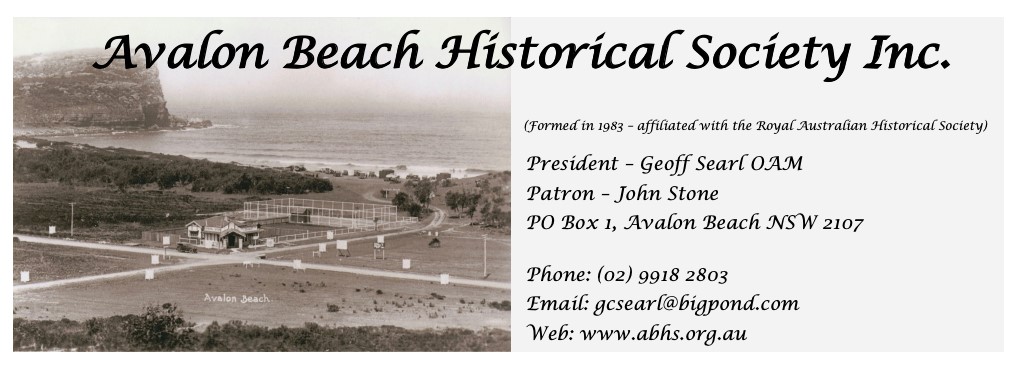
Local Seniors Festival Events 2024
- Wednesday 13 March, 10.30am to 1.30pm – Forestville Memorial Hall and Forestville Seniors Centre
- Friday 22 March, 1pm to 4pm – Newport Community Centre
Celebrate Seniors Festival - March 11-24

Computer Pals For Seniors At Narrabeen: What Is AI?

Dr. Scamps Offering Free Anti-Scam Seminars
Sedentary Behaviour Increases Mortality Risk
How 40Hz Sensory Gamma Rhythm Stimulation Clears Amyloid In Alzheimer's Mice
Nicotine pouches are being marketed to young people on social media. But are they safe, or even legal?

Flavoured nicotine pouches are being promoted to young people on social media platforms such as TikTok and Instagram.
Although some viral videos have been taken down following a series of reports in The Guardian, clips featuring Australian influencers have claimed nicotine pouches are a safe and effective way to quit vaping. A number of the videos have included links to websites selling these products.
With the rapid rise in youth vaping and the subsequent implementation of several reforms to restrict access to vaping products, it’s not entirely surprising the tobacco industry is introducing more products to maintain its future revenue stream.
The major trans-national tobacco companies, including Philip Morris International and British American Tobacco, all manufacture nicotine pouches. British American Tobacco’s brand of nicotine pouches, Velo, is a leading sponsor of the McLaren Formula 1 team.
But what are nicotine pouches, and are they even legal in Australia?
Like Snus, But Different
Nicotine pouches are available in many countries around the world, and their sales are increasing rapidly, especially among young people.
Nicotine pouches look a bit like small tea bags and are placed between the lip and gum. They’re typically sold in small, colourful tins of about 15 to 20 pouches. While the pouches don’t contain tobacco, they do contain nicotine that is either extracted from tobacco plants or made synthetically. The pouches come in a wide range of strengths.
As well as nicotine, the pouches commonly contain plant fibres (in place of tobacco, plant fibres serve as a filler and give the pouches shape), sweeteners and flavours. Just like for vaping products, there’s a vast array of pouch flavours available including different varieties of fruit, confectionery, spices and drinks.
The range of appealing flavours, as well as the fact they can be used discreetly, may make nicotine pouches particularity attractive to young people.
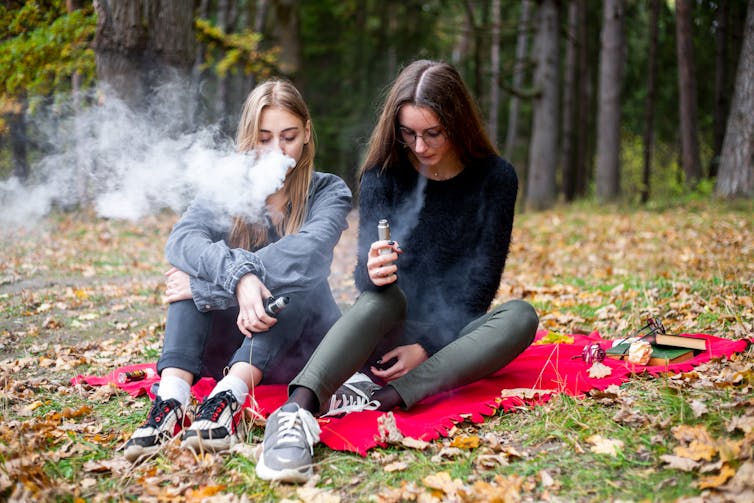
Users absorb the nicotine in their mouths and simply replace the pouch when all the nicotine has been absorbed. Tobacco-free nicotine pouches are a relatively recent product, but similar style products that do contain tobacco, known as snus, have been popular in Scandinavian countries, particularly Sweden, for decades.
Snus and nicotine pouches are however different products. And given snus contains tobacco and nicotine pouches don’t, the products are subject to quite different regulations in Australia.
What Does The Law Say?
Pouches that contain tobacco, like snus, have been banned in Australia since 1991, as part of a consumer product ban on all forms of smokeless tobacco products. This means other smokeless tobacco products such as chewing tobacco, snuff, and dissolvable tobacco sticks or tablets, are also banned from sale in Australia.
Tobacco-free nicotine pouches cannot legally be sold by general retailers, like tobacconists and convenience stores, in Australia either. But the reasons for this are more complex.
In Australia, under the Poisons Standard, nicotine is a prescription-only medicine, with two exceptions. Nicotine can be used in tobacco prepared and packed for smoking, such as cigarettes, roll-your-own tobacco, and cigars, as well as in preparations for therapeutic use as a smoking cessation aid, such as nicotine patches, gum, mouth spray and lozenges.
If a nicotine-containing product does not meet either of these two exceptions, it cannot be legally sold by general retailers. No nicotine pouches have currently been approved by the Therapeutic Goods Administration as a therapeutic aid in smoking cessation, so in short they’re not legal to sell in Australia.
However, nicotine pouches can be legally imported for personal use only if users have a prescription from a medical professional who can assess if the product is appropriate for individual use.
We only have anecdotal reports of nicotine pouch use, not hard data, as these products are very new in Australia. But we do know authorities are increasingly seizing these products from retailers. It’s highly unlikely any young people using nicotine pouches are accessing them through legal channels.
Health Concerns
Nicotine exposure may induce effects including dizziness, headache, nausea and abdominal cramps, especially among people who don’t normally smoke or vape.
Although we don’t yet have much evidence on the long term health effects of nicotine pouches, we know nicotine is addictive and harmful to health. For example, it can cause problems in the cardiovascular system (such as heart arrhythmia), particularly at high doses. It may also have negative effects on adolescent brain development.
The nicotine contents of some of the nicotine pouches on the market is alarmingly high. Certain brands offer pouches containing more than 10mg of nicotine, which is similar to a cigarette. According to a World Health Organization (WHO) report, pouches deliver enough nicotine to induce and sustain nicotine addiction.
Pouches are also being marketed as a product to use when it’s not possible to vape or smoke, such as on a plane. So instead of helping a person quit they may be used in addition to smoking and vaping. And importantly, there’s no clear evidence pouches are an effective smoking or vaping cessation aid.

Further, some nicotine pouches, despite being tobacco-free, still contain tobacco-specific nitrosamines. These compounds can damage DNA, and with long term exposure, can cause cancer.
Overall, there’s limited data on the harms of nicotine pouches because they’ve been on the market for only a short time. But the WHO recommends a cautious approach given their similarities to smokeless tobacco products.
For anyone wanting advice and support to quit smoking or vaping, it’s best to talk to your doctor or pharmacist, or access trusted sources such as Quitline or the iCanQuit website.![]()
Becky Freeman, Associate Professor, School of Public Health, University of Sydney
This article is republished from The Conversation under a Creative Commons license. Read the original article.
The US just returned to the Moon after more than 50 years. How big a deal is it, really?

In the few short years since the COVID pandemic changed our world, China, Japan and India have all successfully landed on the Moon.
Many more robotic missions have flown past the Moon, entered lunar orbit, or crashed into it in the past five years. This includes spacecraft developed by South Korea, the United Arab Emirates, and an Israeli not-for-profit organisation.
Late last week, the American company Intuitive Machines, in collaboration with NASA, celebrated “America’s return to the Moon” with a successful landing of its Odysseus spacecraft.
Recent Chinese-built sample return missions are far more complex than this project. And didn’t NASA ferry a dozen humans to the Moon back when microwaves were cutting-edge technology? So what is different about this mission developed by a US company?
Back To The Moon
The recent Odysseus landing stands out for two reasons. For starters, this is the first time a US-built spacecraft has landed – not crashed – on the Moon for over 50 years.
Secondly, and far more significantly, this is the first time a private company has pulled off a successful delivery of cargo to the Moon’s surface.
NASA has lately focused on destinations beyond the Earth–Moon system, including Mars. But with its Commercial Lunar Payload Services (CLPS) program, it has also funded US private industry to develop Moon landing concepts, hoping to reduce the delivery costs of lunar payloads and allow NASA engineers to focus on other challenges.
Working with NASA, Intuitive Machines selected a landing site about 300 kilometres from the lunar south pole. Among other challenges, landing here requires entering a polar orbit around the Moon, which consumes additional fuel.
At this latitude, the land is heavily cratered and dotted with long shadows. This makes it challenging for autonomous landing systems to find a safe spot for a touchdown.
NASA spent about US$118 million (A$180 million) to land six scientific payloads on Odysseus. This is relatively cheap. Using low-cost lunar landers, NASA will have an efficient way to test new space hardware that may then be flown on other Moon missions or farther afield.
Ten Minutes Of Silence
One of the technology tests on the Odysseus lander, NASA’s Navigation Doppler Lidar experiment or NDL, appears to have proved crucial to the lander’s success.
As the lander neared the surface, the company realised its navigation systems had a problem. NASA’s NDL experiment is serendipitously designed to test precision landing techniques for future missions. It seems that at the last second, engineers bodged together a solution that involved feeding necessary data from NDL to the lander.
Ten minutes of silence followed before a weak signal was detected from Odysseus. Applause thundered through the mission control room. NASA’s administrator released a video congratulating everyone for returning America to the Moon.
It has since become clear the lander is not oriented perfectly upright. The solar panels are generating sufficient power and the team is slowly receiving the first images from the surface.
However, it’s likely Odysseus partially toppled over upon landing. Fortunately, at the time of writing, it seems most of the science payload may yet be deployed as it’s on the side of the lander facing upwards. The unlucky payload element facing downwards is a privately contributed artwork connected to NFTs.
The lander is now likely to survive for at least a week before the Sun sets on the landing site and a dark, frigid lunar night turns it into another museum piece of human technology frozen in the lunar regolith.
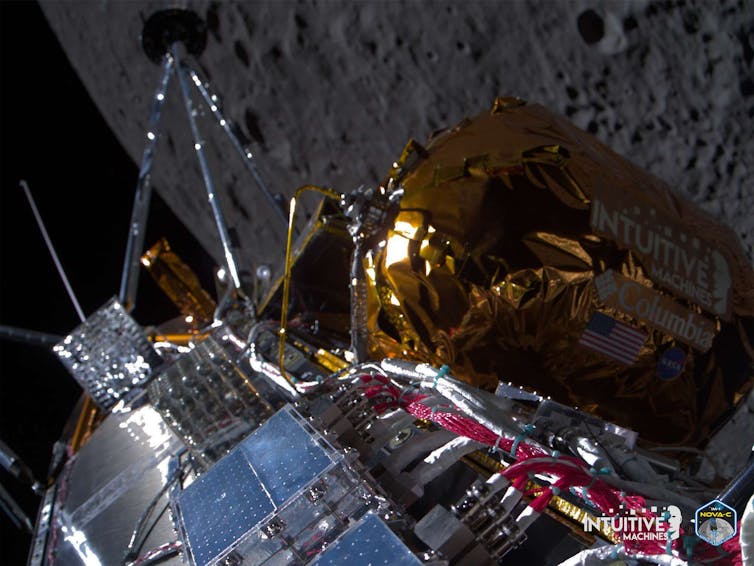
Win Some, Lose Some
NASA’s commercial approach to stimulating low-cost payload services all but guarantees some failures. But eventually NASA hopes that several commercial launch and landing providers will emerge from the program, along with a few learning experiences.
The know-how accumulated at organisations operating hardware in space is at least as important as the development of the hardware itself.
The market for commercial lunar payloads remains unclear. Possibly, once the novelty wears off and brands are no longer able to generate buzz by, for example, sending a piece of outdoor clothing to the Moon, this source of funding may dwindle.
However, just as today, civil space agencies and taxpayers will continue to fund space exploration to address shared science goals.
Ideally, commercial providers will offer NASA an efficient method for testing key technologies needed for its schedule of upcoming scientific robotic missions, as well as human spaceflight in the Artemis program. Australia would also have the opportunity to test hardware at a reduced price.
It’s worth noting that US budgetary issues, funding cuts and subsequent lay-offs do threaten these ambitions.
Meanwhile, in Australia, we may have nothing to launch anyway. We continue to spend less than the OECD average on scientific research, and only a few Australian universities – who traditionally lead such efforts – have received funding provided by the Australian Space Agency.
If we do support planetary science and space exploration in the future, Australians will need to decide if we want to allocate our limited resources, competing with NASA and US private industry, to supply launch, landing and robotic services to the global space industry.
Alternatively, we could leverage these lower-cost payload providers to develop our own scientific space program, and locally developed space technologies associated with benefits to the knowledge economy, education and national security.![]()
David Flannery, Planetary Scientist, Queensland University of Technology
This article is republished from The Conversation under a Creative Commons license. Read the original article.
Vale Martin McCallum FRSA
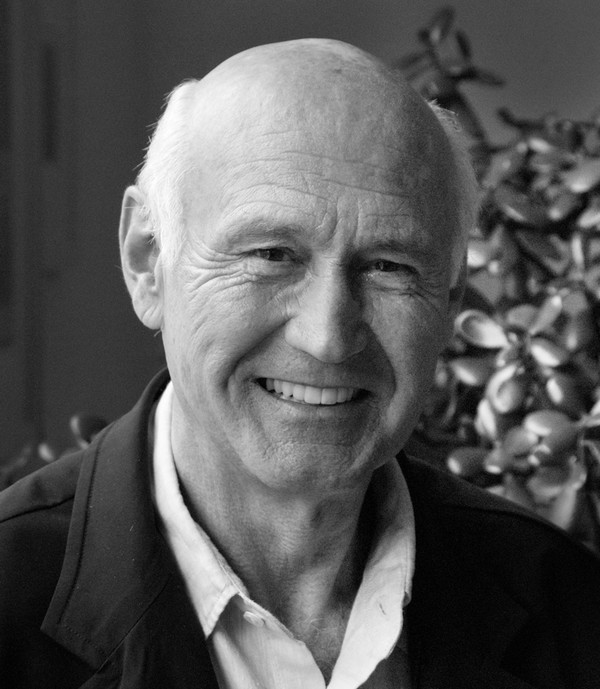
- Acknowledge the wonderful contribution made by the late Martin McCallum.
- Send its condolences to the family of the late Martin McCallum, the Palm Beach Whale Beach Association and the Barrenjoey Alliance for Arts and Culture.
- Work with the family of the late Martin McCallum, the Palm Beach Whale Beach Association and the Barrenjoey Alliance for Arts and Culture to find a fitting tribute that recognises his long-standing contribution to our community.
COVID-19 2024 Vaccine Advice
2024 National Immunisation Program Influenza Vaccination – Early Advice For Health Professionals
- children aged 6 months to less than 5 years
- pregnant women at any stage of pregnancy
- First Nations people aged 6 months and over
- people aged 65 years and over
- people aged 6 months and over with certain medical conditions that increase their risk of severe influenza and its complications.
- discarding expired vaccines and disposing of them in line with local protocols
- ordering 2024 vaccines through your state or territory health department
- promoting the free vaccine to eligible people and priority groups
- considering opportunities to co-administer vaccines – you can give influenza vaccines on the same day as any COVID-19 vaccine
- ensuring vaccine safety – always check your patient’s age and the age range printed on the syringe before vaccination
- reporting to the AIR all influenza vaccines that you have given to your patients – this includes both NIP and private vaccines.
- ATAGI statement on the administration of seasonal influenza vaccines in 2024
- 2024 influenza vaccination – Program advice for health professionals
- 2024 influenza (flu) vaccination – Consumer fact sheet
Council's Seniors Festival 2024
Pan Pacific Masters Games 2024

Federal Budget: Cost-Of-Living Solutions For Seniors
- Older people with low incomes
- Older renters
- Older people living in rural and remote areas
- Older people who are single
- Younger seniors (under 60).
- Hundreds of thousands of pensioners will have their pensions cut
- Some Commonwealth Seniors Health Card holders will lose access to concessions
- Aged care costs would automatically increase for those required to contribute.
New Aged Care Act Consultation Period Extended
- complete a feedback survey online or by calling 1800 318 209
- attend a workshop
- send in a written submission by email or post.
From a ‘magic mineral’ to the stuff of nightmares: a 6,700-year history of asbestos
Sonja Klebe, Flinders UniversityAsbestos is making national news once again after being found in contaminated mulch used in hundreds of locations, including schools and hospitals, across Sydney and regional New South Wales.
With headlines featuring terms such as “crisis”, “nightmare” and “deadly”, it’s hard to believe the toxic mineral was once hailed for its supposedly “magical” properties.
In fact, the history of asbestos goes back at least 6,700 years. Its prevalence in our built environment means it’s (unfortunately) here to stay for a long time.
Before It Became A ‘Killer Dust’
Asbestos is a naturally occurring mineral found in rock formations across the globe, including in some national parks in Australia.
It gets its name from the Greek word for inextinguishable (ásvestos), alluding to its resistance to fire and corrosion. It was these characteristics, along with its insulating properties, that made asbestos seem like a “magic mineral” in centuries prior.
Researchers have found ancient clay pottery from East Finland, dated to 2500 BC, with asbestos fibres mixed into it – likely added for extra strength and resilience. Some of the earliest asbestos pottery, also found in Finland, has been dated to 4700 BC. Asbestos use has also been recorded at other neolithic sites, including in Central Russia and Norway.
In (Western) literature, the first known reference to what might have been asbestos comes from Theophrastus (circa 372-287 BC), a student of Greek philosopher Aristotle and his successor at the Lyceum. In his book On Stones, Theophrastus writes:
In the mines at Scapte Hyle a stone was once found which was like rotten wood in appearance. Whenever oil was poured on it, it burnt, but when the oil had been used up, the stone stopped burning, as if it were itself unaffected.
In the 10th century, Christian pilgrims travelling to Jerusalem were sold pieces of asbestos as fragments of the True Cross – their divinity supposedly evidenced by their incombustibility. By the medieval ages, trading asbestos-containing items had become common. This fascination continued for millennia.
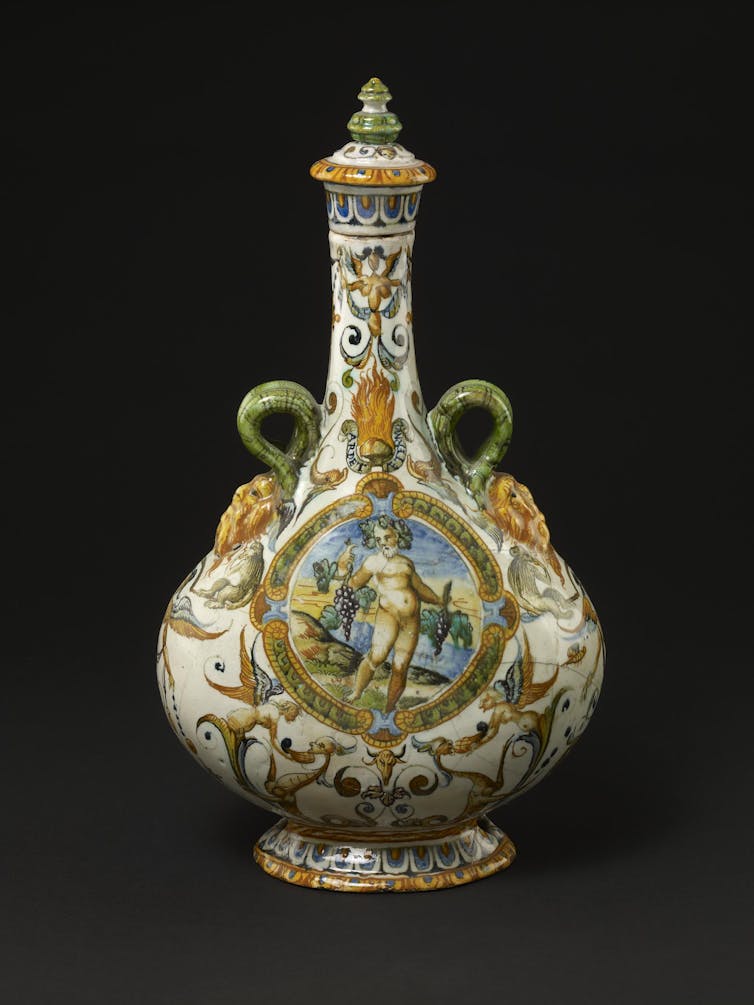
In 1725, a young Benjamin Franklin found himself broke and living in London. In need of cash to pay his bills, he sold a purse made of fibrous mineral asbestos that he’d brought from North America. The recipient was Hans Sloane, whose collections would later be used to establish the British Museum.
A Class I Carcinogen
The carcinogenic effect of asbestos – even at brief, transient and “low” doses (such as bystander exposure) – has been recognised since at least 1965. Today, it is classified as a class I carcinogen and considered a deadly threat to humans.
Asbestos is the main cause of mesothelioma, a cancer of the surface of the lung. It can also cause lung cancer and is implicated in other cancers, including throat and stomach cancers.
In Australia, there are more than 700 cases of mesothelioma each year. We don’t know how many of the roughly 6,000 yearly cases of lung cancer are caused, wholly or partially, by asbestos.
Although asbestos use has been banned in Australia since 2003, people the world over continue to deal with its harmful effects.
The Spread Of ‘Fibro Houses’
Australia started using asbestos goods from around the 1880s, largely for steam-driven machines that benefited from its insulating properties. Only small local mines operated at the time.
Eventually, the world wars increased demand and active exploration led to larger-scale mining, especially at Wittenoom in Western Australia. Even then, local production wasn’t meeting demand.
It was initially miners who presented with the disease, followed by workers in industries manufacturing asbestos-containing products, as well as builders, plumbers and fitters. The Wittenoom miners and their families are still being followed by researchers to determine the effects of exposure.
The economic boom that followed WWII further drove demand for asbestos. In addition to local production, more than 50,000 tons of asbestos were imported to Australia each year throughout the 1950s and into the late 1970s.
Asbestos afforded many Australians a home. Timber-framed houses clad in flat asbestos cement sheeting (called “fibro houses”) were favoured by people who built or legally supervised the building of their own home.
In the mid-1960s, nearly 20% of Australia’s housing stock was made up of fibro houses – with the highest uptake (more than 50%) in the Northern Territory. It’s impossible to say exactly what percentage of existing buildings contain asbestos.
When cyclone Tracy swept through Darwin in 1974, the death and disease that resulted from the uncoordinated cleanup served as a warning of the possible dangers of asbestos removal.
Asbestos Is Here To Stay
Asbestos-related cancers have a long lag time between exposure and detectable disease. Although this lag is typically about 30 years, it can range anywhere between 10 and 70 years. As such, it can be difficult to trace exposure retrospectively.
Many buildings constructed before the mid-1980s contain asbestos. It’s often inseparably bound to other materials, such as tiles, vinyl and cement.
Regulations demand specialist removal for asbestos-affected areas of more than 10 square metres. In reality, whether this happens comes down to how effectively it can be detected, and whether the people affected can afford removals. Without specialised assessment and analysis, asbestos can be difficult to recognise.
Since there is no recognised “safe” dose – a dose below which there’s no risk of developing asbestos-related cancer – workplace standards can only minimise risk, not eliminate it.
Only time will tell what the long-term outcomes are from the latest exposure in NSW. The risk from asbestos depends on several factors, including the overall amount inhaled, the type of asbestos and the number of years since exposure.
Among the most heavily exposed Wittenoom miners, about 20% have developed mesothelioma so far.
Documenting Cases
Since July 2010, the Australian Mesothelioma Registry has collected information on new mesothelioma cases diagnosed in Australia. The national Asbestos Exposure Register also allows any person to register a documented or suspected case of exposure.
If you’re worried about your neighbourhood, the Asbestos and Silica Eradication Agency has produced a national heat map showing the probability of asbestos presence in buildings by geographic area.![]()
Sonja Klebe, Associare Professor, College of Medicine and Public Health, Flinders University
This article is republished from The Conversation under a Creative Commons license. Read the original article.
ACCC Supermarkets Inquiry Invites Consumer, Farmer And Industry Views
Study Of 1.2+M Births Reveals Associations Between Excess Heat Exposure And Preterm Births
Mounting research shows that COVID-19 leaves its mark on the brain, including with significant drops in IQ scores

From the very early days of the pandemic, brain fog emerged as a significant health condition that many experience after COVID-19.
Brain fog is a colloquial term that describes a state of mental sluggishness or lack of clarity and haziness that makes it difficult to concentrate, remember things and think clearly.
Fast-forward four years and there is now abundant evidence that being infected with SARS-CoV-2 – the virus that causes COVID-19 – can affect brain health in many ways.
In addition to brain fog, COVID-19 can lead to an array of problems, including headaches, seizure disorders, strokes, sleep problems, and tingling and paralysis of the nerves, as well as several mental health disorders.
A large and growing body of evidence amassed throughout the pandemic details the many ways that COVID-19 leaves an indelible mark on the brain. But the specific pathways by which the virus does so are still being elucidated, and curative treatments are nonexistent.
Now, two new studies published in the New England Journal of Medicine shed further light on the profound toll of COVID-19 on cognitive health.
I am a physician scientist, and I have been devoted to studying long COVID since early patient reports about this condition – even before the term “long COVID” was coined. I have testified before the U.S. Senate as an expert witness on long COVID and have published extensively on this topic.
How COVID-19 Leaves Its Mark On The Brain
Here are some of the most important studies to date documenting how COVID-19 affects brain health:
Large epidemiological analyses showed that people who had COVID-19 were at an increased risk of cognitive deficits, such as memory problems.
Imaging studies done in people before and after their COVID-19 infections show shrinkage of brain volume and altered brain structure after infection.
A study of people with mild to moderate COVID-19 showed significant prolonged inflammation of the brain and changes that are commensurate with seven years of brain aging.
Severe COVID-19 that requires hospitalization or intensive care may result in cognitive deficits and other brain damage that are equivalent to 20 years of aging.
Laboratory experiments in human and mouse brain organoids designed to emulate changes in the human brain showed that SARS-CoV-2 infection triggers the fusion of brain cells. This effectively short-circuits brain electrical activity and compromises function.
Autopsy studies of people who had severe COVID-19 but died months later from other causes showed that the virus was still present in brain tissue. This provides evidence that contrary to its name, SARS-CoV-2 is not only a respiratory virus, but it can also enter the brain in some individuals. But whether the persistence of the virus in brain tissue is driving some of the brain problems seen in people who have had COVID-19 is not yet clear.
Studies show that even when the virus is mild and exclusively confined to the lungs, it can still provoke inflammation in the brain and impair brain cells’ ability to regenerate.
COVID-19 can also disrupt the blood brain barrier, the shield that protects the nervous system – which is the control and command center of our bodies – making it “leaky.” Studies using imaging to assess the brains of people hospitalized with COVID-19 showed disrupted or leaky blood brain barriers in those who experienced brain fog.
A large preliminary analysis pooling together data from 11 studies encompassing almost 1 million people with COVID-19 and more than 6 million uninfected individuals showed that COVID-19 increased the risk of development of new-onset dementia in people older than 60 years of age.
Drops In IQ
Most recently, a new study published in the New England Journal of Medicine assessed cognitive abilities such as memory, planning and spatial reasoning in nearly 113,000 people who had previously had COVID-19. The researchers found that those who had been infected had significant deficits in memory and executive task performance.
This decline was evident among those infected in the early phase of the pandemic and those infected when the delta and omicron variants were dominant. These findings show that the risk of cognitive decline did not abate as the pandemic virus evolved from the ancestral strain to omicron.
In the same study, those who had mild and resolved COVID-19 showed cognitive decline equivalent to a three-point loss of IQ. In comparison, those with unresolved persistent symptoms, such as people with persistent shortness of breath or fatigue, had a six-point loss in IQ. Those who had been admitted to the intensive care unit for COVID-19 had a nine-point loss in IQ. Reinfection with the virus contributed an additional two-point loss in IQ, as compared with no reinfection.
Generally the average IQ is about 100. An IQ above 130 indicates a highly gifted individual, while an IQ below 70 generally indicates a level of intellectual disability that may require significant societal support.
To put the finding of the New England Journal of Medicine study into perspective, I estimate that a three-point downward shift in IQ would increase the number of U.S. adults with an IQ less than 70 from 4.7 million to 7.5 million – an increase of 2.8 million adults with a level of cognitive impairment that requires significant societal support.
Another study in the same issue of the New England Journal of Medicine involved more than 100,000 Norwegians between March 2020 and April 2023. It documented worse memory function at several time points up to 36 months following a positive SARS-CoV-2 test.
Parsing The Implications
Taken together, these studies show that COVID-19 poses a serious risk to brain health, even in mild cases, and the effects are now being revealed at the population level.
A recent analysis of the U.S. Current Population Survey showed that after the start of the COVID-19 pandemic, an additional 1 million working-age Americans reported having “serious difficulty” remembering, concentrating or making decisions than at any time in the preceding 15 years. Most disconcertingly, this was mostly driven by younger adults between the ages of 18 to 44.
Data from the European Union shows a similar trend – in 2022, 15% of people in the EU reported memory and concentration issues.
Looking ahead, it will be critical to identify who is most at risk. A better understanding is also needed of how these trends might affect the educational attainment of children and young adults and the economic productivity of working-age adults. And the extent to which these shifts will influence the epidemiology of dementia and Alzheimer’s disease is also not clear.
The growing body of research now confirms that COVID-19 should be considered a virus with a significant impact on the brain. The implications are far-reaching, from individuals experiencing cognitive struggles to the potential impact on populations and the economy.
Lifting the fog on the true causes behind these cognitive impairments, including brain fog, will require years if not decades of concerted efforts by researchers across the globe. And unfortunately, nearly everyone is a test case in this unprecedented global undertaking.![]()
Ziyad Al-Aly, Chief of Research and Development, VA St. Louis Health Care System. Clinical Epidemiologist, Washington University in St. Louis
This article is republished from The Conversation under a Creative Commons license. Read the original article.
Why Barnaby Joyce’s TV diagnosis of insomnia plus sleep apnoea is such a big deal
Alexander Sweetman, Flinders UniversityThe health of Nationals MP Barnaby Joyce is in the news again, this time with a diagnosis of a sleep disorder made while filming a TV documentary.
Joyce’s diagnosis of insomnia plus sleep apnoea arose while filming Australia’s Sleep Revolution with Dr Michael Mosley in 2023. SBS has confirmed episode three, in which my Flinders University colleagues reveal his sleep disorder, is set to air on March 20.
I was not involved in the program and have no knowledge of Joyce’s ongoing health care. But I was part of the research team that in 2017 coined the term COMISA (co-morbid insomnia and sleep apnoea), the official name of Joyce’s on-screen diagnosis. Since then, I’ve led research into this common sleep disorder.
Here’s why it’s so important to diagnose and treat it.
What Was Joyce’s Diagnosis?
People can be diagnosed separately with insomnia or sleep apnoea.
Insomnia includes frequent difficulties falling asleep at the start of the night or difficulties staying asleep during the night. These can result in daytime fatigue, reduced energy, concentration difficulties and poor mood. Over time, insomnia can start to impact your mental health and quality of life.
Sleep apnoea (specifically, obstructive sleep apnoea) is when people experience repeated interruptions or pauses in breathing while they sleep. This reduces oxygen levels during sleep, and you can wake up multiple times at night. People with sleep apnoea may be aware of loud snoring, gasping for air when they wake up, or feeling exhausted the next morning. However, not all people have these symptoms, and sleep apnoea can go undiagnosed for years.
But in Joyce’s case, both insomnia and sleep apnoea occur at the same time.
We’ve known this could happen since the 1970s, with evidence growing over subsequent decades. Since then, sleep researchers and clinicians around the world have learned more about how common this is, its consequences and how best to treat it.
How Do You Know If You Have It?
Many people seek help for their sleep problems because of fatigue, exhaustion, physical symptoms, or poor mood during the day.
If you think you have insomnia, a GP or sleep specialist can talk to you about your sleep pattern, and might ask you to complete brief questionnaires about your sleep and daytime symptoms. You might also be asked to fill in a “sleep diary” for one to two weeks. These will allow a trained clinician to see if you have insomnia.
If you or your GP think you may have (or are at risk of having) sleep apnoea, you may be referred for a sleep study. This normally involves sleeping overnight in a sleep clinic where your sleep patterns and breathing are monitored. Alternatively, you might be set up with a recording device to monitor your sleep at home. A trained medical professional, such as a sleep and respiratory physician, will often make the diagnosis.
Up to 50% of people with sleep apnoea report symptoms of insomnia. About 30–40% of people with insomnia also have sleep apnoea.
What Are The Consequences?
Insomnia and sleep apnoea (individually) are associated with reduced sleep quality, mental health and physical health.
Importantly, people with both at the same also tend to experience worse sleep, daytime function, mental health, physical health and quality of life, compared with people with no sleep disorder.
For instance, we know having both conditions comes with an increased risk of diseases of the heart.
In three studies, we found people with both insomnia and sleep apnoea have about a 50–70% higher risk of dying early from any cause, compared with people with neither sleep condition. People with insomnia alone and sleep apnoea alone did not have an increased risk of dying early.
However, there are effective treatments to reduce these health consequences.
How Is It Treated?
In general, it is best for people to access evidence-based treatments for both disorders. These treatments vary according to the patient and the severity of their condition.
For instance, wearing a CPAP mask while sleeping improves breathing during sleep and reduces many of the daytime consequences of obstructive sleep apnoea. However, other effective treatments may be recommended based on each person’s symptoms, such as weight management, avoiding sleeping on your back, oral devices (which look a bit like a mouthguard), or surgery.
The most effective treatment for insomnia is cognitive behavioural therapy for insomnia, also known as CBTi. About four to eight sessions often lead to improvements in sleep, daytime function and mental health that are maintained for many years. This can be delivered by trained therapists such as psychologists, nurses or GPs, as well as via online programs.
Last year, we drew together evidence from more than 1,000 people with both conditions. We found CBTi is an effective treatment for insomnia in people with treated and untreated sleep apnoea.
New Treatments And Approaches
We and other teams internationally are developing and testing new ways of delivering CBTi.
Several groups are testing devices, which stimulate the tongue muscles during sleep, to treat sleep apnoea in people with both disorders.
And we’re still working out the best order for patients to access treatments, and the best combination of treatments.
The Power Of TV
Joyce’s public diagnosis of both insomnia and sleep apnoea will no doubt raise awareness of what we suspect is an underdiagnosed condition.
Based on how common insomnia and sleep apnoea are in Australia, we estimate Joyce is one of about 5–10% of Australian adults to have both at the same time.
The Conversation contacted Joyce’s spokesperson for comment but did not hear back before deadline.![]()
Alexander Sweetman, Research Fellow, College of Medicine and Public Health, Flinders University
This article is republished from The Conversation under a Creative Commons license. Read the original article.
Independent MP Helen Haines has a plan to stamp out pork-barrelling. Would it work?
Yee-Fui Ng, Monash UniversityIndependent MP for Indi Helen Haines has introduced a private member’s bill to crack down on pork-barrelling.
Haines has argued pork-barrelling is happening right now ahead of the Dunkley byelection on March 2, where Labor is splashing out money hoping to retain the seat.
Without government or opposition support, the bill is unlikely to pass. But it puts the issue of pork-barrelling in the public eye. So would the proposed measures work?
How Common Is Pork-Barrelling In Australia?
Pork-barrelling involves governments channelling public funds to seats they hold and wish to retain, or seats they would like to win from an opponent, as a way of winning voters’ favour. This means the money is used for political purposes, rather than proper allocation according to merit.
We have been inundated with pork-barrelling scandals in recent years. This includes the car park rorts scandal, where 77% of the commuter car park sites selected were in electorates held by the then Coalition government, rather than in areas of real need with congestion issues.
This followed close on the heels of the “sports rorts” scandal. Bridget McKenzie resigned from cabinet following allegations she had intervened in the sport grants program to benefit the Coalition government while in a position of conflict of interest.
My journal article shows pork-barrelling is an intractable problem across multiple governments over many decades and takes different forms based on electoral systems.
Australia has a single-member electorate parliamentary system, which makes it more susceptible to pork-barrelling than multi-member electorates such as Norway or Spain.
The belief is that politicians who “bring home the bacon” for their constituents are electorally rewarded for doing so.
This means a government has an incentive to strategically apportion benefits to marginal electorates to increase prospects of electoral success. There is also an incentive to bias the apportionment of funds towards electorates held by the party in power.
In short, rorts scandals keep happening because governments believe channelling money to marginal and government electorates will win them elections.
What Does The Haines Bill Do?
The Haines bill requires all grant programs to have clear and publicly available, merit-based selection criteria and guidelines.
Second, the bill ensures robust reporting to the parliament about what grants are awarded, to whom and why. This includes requirements for ministers to report to parliament in a timely manner when they’ve gone against official advice from government departments about who should receive grants.
Third, the bill creates a new Joint Parliamentary Committee on Grants Administration and Investment Mandates. This committee would oversee grants administration, including compliance with guidelines.
Will This Bill Fix Our Broken System?
My article has argued that stronger legal accountability is needed to hold ministers responsible for the biased allocation of grants.
The bill seeks to enhance transparency by requiring stronger parliamentary disclosure of the allocation of grants.
A joint parliamentary committee would also increase scrutiny and accountability over grants administration.
But the bill does not go far enough in terms of enforcement. There should be penalties for breaches of grant rules. And these should be enforceable by an external scrutineer, such as an independent commissioner.
Without strong enforcement, existing laws will be deficient in preventing, deterring and punishing governments that allocate grant funding in a partisan fashion, rather than on merit.
Ensuring proper use of public money is crucial to preserving public trust in Australian democratic institutions. To improve accountability for the use of public funding, we need stronger and legally enforceable rules and regulations.![]()
Yee-Fui Ng, Associate Professor, Faculty of Law, Monash University
This article is republished from The Conversation under a Creative Commons license. Read the original article.
Algorithms are pushing AI-generated falsehoods at an alarming rate. How do we stop this?

Generative artificial intelligence (AI) tools are supercharging the problem of misinformation, disinformation and fake news. OpenAI’s ChatGPT, Google’s Gemini, and various image, voice and video generators have made it easier than ever to produce content, while making it harder to tell what is factual or real.
Malicious actors looking to spread disinformation can use AI tools to largely automate the generation of convincing and misleading text.
This raises pressing questions: how much of the content we consume online is true and how can we determine its authenticity? And can anyone stop this?
It’s not an idle concern. Organisations seeking to covertly influence public opinion or sway elections can now scale their operations with AI to unprecedented levels. And their content is being widely disseminated by search engines and social media.
Fakes Everywhere
Earlier this year, a German study on search engine content quality noted “a trend toward simplified, repetitive and potentially AI-generated content” on Google, Bing and DuckDuckGo.
Traditionally, readers of news media could rely on editorial control to uphold journalistic standards and verify facts. But AI is rapidly changing this space.
In a report published this week, the internet trust organisation NewsGuard identified 725 unreliable websites that publish AI-generated news and information “with little to no human oversight”.
Last month, Google released an experimental AI tool for a select group of independent publishers in the United States. Using generative AI, the publisher can summarise articles pulled from a list of external websites that produce news and content relevant to their audience. As a condition of the trial, the users have to publish three such articles per day.
Platforms hosting content and developing generative AI blur the traditional lines that enable trust in online content.
Can The Government Step In?
Australia has already seen tussles between government and online platforms over the display and moderation of news and content.
In 2019, the Australian government amended the criminal code to mandate the swift removal of “abhorrent violent material” by social media platforms.
The Australian Competition and Consumer Commission’s (ACCC) inquiry into power imbalances between Australian news media and digital platforms led to the 2021 implementation of a bargaining code that forced platforms to pay media for their news content.
While these might be considered partial successes, they also demonstrate the scale of the problem and the difficulty of taking action.
Our research indicates these conflicts saw online platforms initially open to changes and later resisting them, while the Australian government oscillated from enforcing mandatory measures to preferring voluntary actions.
Ultimately, the government realised that relying on platforms’ “trust us” promises wouldn’t lead to the desired outcomes.
The takeaway from our study is that once digital products become integral to millions of businesses and everyday lives, they serve as a tool for platforms, AI companies and big tech to anticipate and push back against government.
With this in mind, it is right to be sceptical of early calls for regulation of generative AI by tech leaders like Elon Musk and Sam Altman. Such calls have faded as AI takes a hold on our lives and online content.
A challenge lies in the sheer speed of change, which is so swift that safeguards to mitigate the potential risks to society are not yet established. Accordingly, the World Economic Forum’s 2024 Global Risk Report has predicted mis- and disinformation as the greatest threats in the next two years.
The problem gets worse through generative AI’s ability to create multimedia content. Based on current trends, we can expect an increase in deepfake incidents, although social media platforms like Facebook are responding to these issues. They aim to automatically identify and tag AI-generated photos, video and audio.
What Can We Do?
Australia’s eSafety commissioner is working on ways to regulate and mitigate the potential harm caused by generative AI while balancing its potential opportunities.
A key idea is “safety by design”, which requires tech firms to place these safety considerations at the core of their products.
Other countries like the US are further ahead with the regulation of AI. For example, US President Joe Biden’s recent executive order on the safe deployment of AI requires companies to share safety test results with the government, regulates red-team testing (simulated hacking attacks), and guides watermarking on content.
We call for three steps to help protect against the risks of generative AI in combination with disinformation.
1. Regulation needs to pose clear rules without allowing for nebulous “best effort” aims or “trust us” approaches.
2. To protect against large-scale disinformation operations, we need to teach media literacy in the same way we teach maths.
3. Safety tech or “safety by design” needs to become a non-negotiable part of every product development strategy.
People are aware AI-generated content is on the rise. In theory, they should adjust their information habits accordingly. However, research shows users generally tend to underestimate their own risk of believing fake news compared to the perceived risk for others.
Finding trustworthy content shouldn’t involve sifting through AI-generated content to make sense of what is factual.![]()
Stan Karanasios, Associate Professor, The University of Queensland and Marten Risius, Senior Lecturer in Business Information Systems, The University of Queensland
This article is republished from The Conversation under a Creative Commons license. Read the original article.
Australian Employer Gender Pay Gaps Published For The First Time
- 30% of employers have a median gender pay gap between the target range of -5% and +5%.
- 62% of median employer gender pay gaps are over 5% and in favour of men.
- The rest (8%) are less than -5% and in favour of women.
- Across all employers, 50% have a gender pay gap of over 9.1%.
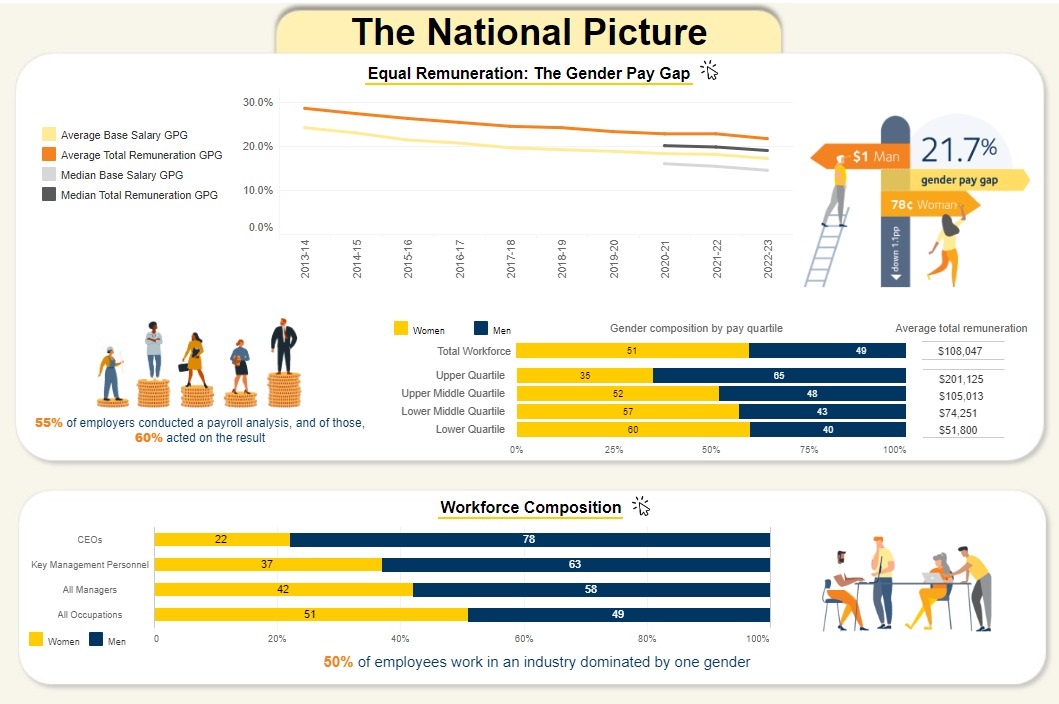
New Company Established To Operate NSW’s World-Leading Viral Vector Facility
 The NSW Government has announced the establishment of a new company to operate the world-leading viral vector manufacturing facility based at Westmead, which will produce ground-breaking and life-saving therapies.
The NSW Government has announced the establishment of a new company to operate the world-leading viral vector manufacturing facility based at Westmead, which will produce ground-breaking and life-saving therapies.NSW Ambulance First In The World To Trial New Stroke Care Technology
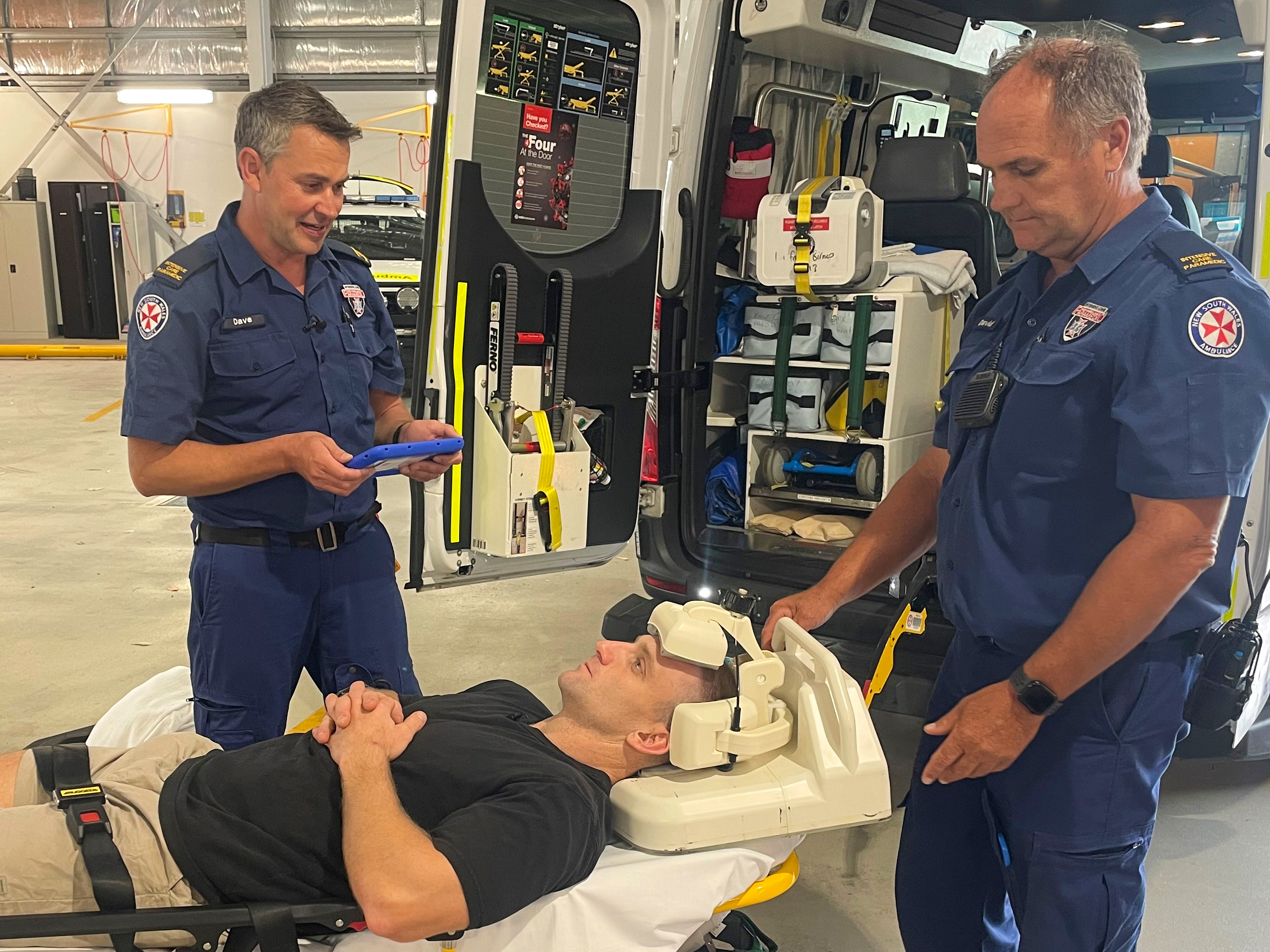
Wellbeing Nurses To Support More NSW School Children
Disclaimer: These articles are not intended to provide medical advice, diagnosis or treatment. Views expressed here do not necessarily reflect those of Pittwater Online News or its staff.
